Brazil Psych,Prog,Tropicalia,Latin,Jazz,Samba Rock,MPB,Covers Albums & Photos

Brazil Psych,Prog,Tropicalia,Latin,Jazz,Samba Rock,MPB,with full Albums mixcloud playlist
click up next & listen only first 20 playlists,if there are,from blogger page,for more playlists,click the link above and go in the mixcloud page
Tropicalia: Revolution in Sound, listen on BBC
Tropicália, a very Brazilian Revolution: The story of the political and artistic struggle behind the bewitching rhythms of Brazil
Music is one of the integral parts of the Brazilian identity, to such an extent that any thoughts of the country, its culture, people and places comes with a mental samba soundtrack. From the overtly musical Carnival, to the dancing feet of its footballers, sometimes nicknamed the Samba Stars, everything seems to happen with a rhythm that is uniquely Brazilian.
But just as Brazilian music is one of the country’s main cultural exports, its roots come from cultural imports – immigrants from Africa, Caribbean influences, folk from the north country, and elements of American music both black and pop make up what Brazilian music is today. Now embraced around the world as a celebratory, feel-good artform, Brazilian music hasn’t always enjoyed such a cheerful time. In fact in the 1960s, a musical movement emerged that was the source of civil unrest and political persecution, as well as great artistic expression. Its name was Tropicália.
Back in the 1930s, samba music emerged as the national style, but later, in the 1950s, a new sound called bossa nova took up the baton and broke out of the country to become a global musical sensation. Air travel was taking off in a big way in the early 1960s, and when Joao Gilberto sang of the Girl from Ipanema in 1964, worldwide audiences lapped up the thought of idyllic Brazilian beaches and bronzed beauties. Meanwhile, in the real world, the country was in the grip of a military coup, with a dictatorship seizing power amid fears that the incumbent government was about to follow Cuba down the road to left-wing isolationism.
Increasing industrialisation in the developing country drew tens of thousands of migrant workers to the major cities from the countryside, leading to the rapid growth of the shanty towns known as favelas. They brought with them the traditional sounds of their indigenous “indian” forefathers, such as maracatú from the north country, which blended with samba to produce a new sound in the hands of musicians such as Jorge Ben. His smash Mas Que Nada really kickstarted the international interest in Brazilian music, while at home, traditional Brazilian music festivals shown on the emerging medium of TV proved a huge hit with the locals. Pop imports by the likes of The Beatles were absorbed, and from this melting pot emerged distinct styles that supported differing political viewpoints.
Political protest was not, in 1967, repressed to a large extent. From the region of Bahia, a group of musicians emerged who blended bossa nova with pop, rock’n’roll and psychedelia into a style that became known as Tropicalia. Opposed to the military dictatorship, they were also against the left-wing ideologies too, and the music’s use of electric guitars – a direct influence of American music – infuriated the left as much as the anti-repression lyrics agitated the ruling military. Spearheading the Tropicalia movement were Gilberto Gil and Caetano Veloso from Salvador. Joining forces with more rock bands such as Os Mutantes and performance artists and poets including Tom Zé, the Tropicalistas, as they were called, began an exchange of artistic and political ideas. The results quickly incurred the displeasure of the authorities.
Following the death of a university student at the hands of the military, the March of One Hundred Thousand was held on the streets of Rio de Janeiro in 1968. Gil and Veloso were front row figures, along with a host of other musicians from the left-wing, but it was only the two prominent Tropicalistas who were arrested by the government. A law had just been passed allowing arrest and detention without reason, and hundreds of suspected dissidents “disappeared during this time”. The pair, frightened but defiant, were held in prison for weeks before being transported back to their hometown and forbidden to leave. After four months’ detention the musicians were encouraged to get out of the country. They moved to London in 1969.
Although depressed at their exile, London wasn’t a bad place to find oneself at the end of the sixties. Musically, the big influences The Beatles and the Rolling Stones were at their peak, and other bands including Pink Floyd and Traffic were also providing interesting ideas for Gil and Veloso to absorb. Taking Tropicalia overseas, the two recorded in England—and in English—spreading the word about events back home and developing musically through collaborations at several key festivals and concerts, including Glastonbury in 1970.
It was 1973 before Gil and Veloso were allowed back to Brazil with the promise of freedom to make music without hindrance. The promises proved empty, however, as all live music still had to be approved in advance by the state censors and the Tropicália movement wasn’t ready to bow down by any means. Although they still regularly fell foul of the authorities, they didn’t suffer to the same extent as they had in the previous decade. The Tropicalistas were also back on home soil and perfectly placed to inspire the next generation of Brazilian musicians in the 1970s like Milton Nascimento, who would go on to be one of the country’s most successful musical exports, credited with popularising Brazilian music on the world stage to an extent that only the likes of Carmen Miranda had done before, back in the days of 1930s samba....by...Rob Wilkes ....~
In this survey of late-1960s Brazil, the most striking things are the least expected. In a small room are a collection of film fragments focusing on the musicians Caetano Veloso and Gilberto Gil. In one, Veloso is shown in a 1967 television performance. He could scarcely look more nervous, and delivers the stiffest imaginable performance. He can barely hear the band, and sings sharp throughout. His audience are enraptured, but sit in rows, politely applauding.
A second television performance, a year later, is documented through a series of stills and an audio track. This time, Veloso sings ‘E Prohibido Prohibir’ (‘It is Forbidden to Forbid’), commenting sharply on a military regime that was then entering its most repressive phase. He’s greeted by slow handclaps, and the show ends in uproar. Veloso cries: ‘If your politics are as bad as your aesthetics, then we’re done for.’
Two other fragments are worth mentioning: Veloso and Dedé Gadelha on their wedding day in Salvador da Bahia in 1967, at the church, and then the beach, striding arm in arm into the sea, the most improbably good-looking couple; and Gilberto Gil (now Brazil’s minister of culture) in exile in London in 1969, in a few grainy Super 8 images. These fragments are by turns charming, terrifying and impossibly sad. Veloso and Gil are highly charismatic public figures, and their espousal of an idealised democracy is part of their charm. But the context of violence, poverty and racism exposes it as myth.
These documentary fragments are the best things here. Nothing else in this rambling, incoherent and often silly show comes close. The centrepiece is an environment by Hélio Oiticica, whose reputation has grown rapidly since his early death in 1980. It is easy to see why: it’s gonzo art, party-time art, stoned beach-bum art. Not a trace of irony or intellect for the most part, and hence wonderfully saleable. And some of it is pretty good. But some of his early installations are rambling affairs that belong to another time. In ‘Eden’, you take off your shoes and socks and wander around a fake beach, dotted with tents in which you can have various different experiences. It’s like a free festival: you half expect Hawkwind to show up, handing round the acid tabs. The problem is they don’t, and you are returned to the chilly, unforgiving Barbican.
Another participatory work is ‘Roda de Prazer’ (‘Wheel of Pleasure’) by Lygia Pape, a series of ceramic bowls containing brightly coloured fluids, which the visitor is invited to taste by means of droppers. Every one I tried tasted unpleasantly of bubble gum. Lygia Clark is represented by some very nasty wearable art, the nadir of which is a rubber pregnancy suit for men. Unzip the midriff and a fat, pink foetus flops out.
The show’s lack of coherence is partly due to the historical work, varied in both form and quality. But it is also to do with the way it has been curated. It falls between historical survey and themed show; in the end it is neither. There’s not enough order or precision about the history, and the curators rarely achieve a visual spectacle.
Richard Williams.......~


The Tropicália movement burst into life in 1967, incorporating visual arts, poetry and music. It was a cultural revolution heavily influenced by the concept of ‘cultural cannibalism’, a phrase coined by Oswald de Andrade in his Manifesto Antropófago in 1928. ‘Cultural cannibalism’ is based on the idea that a nation’s culture can be made stronger and richer by blending a wide range of disparate cultural elements, both national and international, in order to create something new and unique. In musical terms, the Tropicália movement championed this concept by marrying classical Brazilian bossa nova music with the Afro-Brazilian rhythms of samba and the rock and roll riffs and jagged guitars of London’s swinging sixties. The product of this cultural fusion was an exciting new genre of politically conscious music. Tropicália countered the oppressive military rule of the time through its overt defiance of the strict censorship that was being imposed on Brazilian culture.
Despite only spanning a five year period between 1967 and 1972 (some argue its lifespan was even shorter than this due to two of the founding musicians being arrested by the military government in December 1968), Tropicália has undoubtedly left a lasting impression both within and outside of Brazil. As well as paving the way for modern Brazilian pop music, the movement influenced countless international musicians including David Bowie, Beck, Damon Albarn and David Byrne. However, perhaps the biggest indicator of its enduring legacy lies with Gilberto Gil, one of Tropicália’s most famous musicians. Having spent his youth battling for socio-political change within Brazil, leading to a brief period of incarceration in 1969 and a stint spent living in exile in the UK, Gilberto Gil went on to assume the title of Brazil’s Minister of Culture between 2003 and 2008; a position from where he could proudly promote the incredible diversity of Brazilian culture.....~
Tropicália: Portrait of a Revolution
It was exactly forty years ago that the musical revolution that came to be known as Tropicália was introduced to Brazil, and the world. Tropicália's genesis can be dated with some precision. It came when two musicians in their mid-twenties, Caetano Veloso and Gilberto Gil, courageously took to the stage at a 1967 song festival in São Paulo with compositions that they knew would sorely stress the boundaries of musical taste. Their performance was epoch-defining. It was a kind of big bang from which much that came afterward in Brazilian pop music history evolved.
It was exactly forty years ago that the musical revolution that came to be known as Tropicália was introduced to Brazil, and the world. Tropicália's genesis can be dated with some precision. It came when two musicians in their mid-twenties, Caetano Veloso and Gilberto Gil, courageously took to the stage at a 1967 song festival in São Paulo with compositions that they knew would sorely stress the boundaries of musical taste. Their performance was epoch-defining. It was a kind of big bang from which much that came afterward in Brazilian pop music history evolved.
In part to needle what he expected to be a conservative audience, Veloso had selected an eccentric, long-haired band of Argentine rockers for his backup band, at a time when long hair was still nearly taboo, and delivered a song, "Alegria, alegria," or "Happiness, Happiness," which electrified the booing audience into silence. "Alegria, alegria" was an unmistakable departure from Brazil's songwriting tradition. It was an erudite reworking of archaic genres (the song is set to the rhythm of a marchinha, an Afro-Brazilian form influenced by ragtime in the 1920s) organized around a trinity of electric guitar chords. The song's contemporary references to Coca-Cola and television, and the absence of comfortable nostalgia or sentimentalism marked it as an unmistakable artifact of the sharp-edged, uncertain present in a Brazil of military dictatorships and political ferment.
The next day, at the same festival, Veloso's partner in crime, Gil, sang an equally provocative tune, "Domingo no parque," or "Sunday in the Park." The lyrics centered on a double-murder committed by a jealous lover, and the musical arrangement was clearly influenced by the Beatles. However, the song also contained the ubiquitous sounds of a berimbau, a traditional, resonating instrument of African origin made of a gourd, a wooden bow and a metal string. It was a novel melding of tradition and the cutting-edge.
The two musicians had intentionally set out to trigger a musical upheaval, and they succeeded. Their movement, Tropicália, went on to sweep away the petty divisions that up to then had divided Brazilian rockers from bossa nova die-hards and old school samba crooners. Tropicália would combine the cosmopolitan sensibilities and lyrical precision of rock with the entire geological depth of Brazil's considerable musical tradition.
ACQUIRING THE TASTE
The music of Tropicália (also sometimes known as Tropicalismo) has been with me nearly my whole life , though it has taken me nearly as long to fully acquire a taste for it. In the late 1970s in Argentina, my parents, uncles and aunts were still listening to the singers that had championed the movement during its short but frenzied peak a decade before in neighboring Brazil. But it wasn't until I was myself living in Rio de Janeiro in 2000 that I began to make the music my own. At an outdoor market near my apartment in Copacabana Beach I bought Tropicália 2, an album Caetano Veloso and Gilberto Gil recorded in the early 1990s celebrate the 30th anniversary of their friendship and the 25th anniversary of Tropicália.
I bought the album because I recognized the two names as belonging to perhaps the most famous of Brazil's many internationally known musicians, but the contents surprised me. This was not smooth Brazilian pop: the tracks were weird enough that many of them did not register beyond leaving an impression of general strangeness and what seemed to be swirling, mysterious reinterpretations of older musical forms. The problem was that I was not familiar with these forms in their original version. Challenging as the album was, it had a discernible, melodic heart. It had a social conscience as well (the political urgency of a track called "Haiti" was unmistakable), and it had many beautiful moments, such as the sublime, flute-laced intro to "Baião Atemporal." It was this album which kept me hooked on Brazilian music from then on, though I pursued my interest only in a scattershot manner over the next half-dozen years.
Then, something decisive happened. By chance, I began listening to samba records, mainly to older artists from Rio's slums that had recorded a number of landmark albums in the 1970s. These were people like Cartola, a gravelly-voiced singer, composer, and co-founder of the Estação Primeira de Mangueira samba school in 1928. He was rediscovered in the 1970s, after surviving decades of total obscurity. Though I didn't know it at the time, this rediscovery of Cartola happened in part thanks to the interest in musical tradition encouraged by Tropicália itself. My musical journey was beginning to double back on itself. Samba led me, by a maze-like series of artists and discographies, to bossa nova (samba refined and rarefied), and finally, to Jorge Ben.
I had arrived. Jorge Ben's 1976 album África Brasil was a revelation. I didn't need fluency in Brazilian rhythms to understand that this was a masterful remixing of centuries of musical history, delivered in the funky idiom of the 1970s. Not only that, but Ben transformed his album into a kind of document for the Black experience in Brazil, working Egyptian legends, slave history, and occult philosophical knowledge into his lyrics. Every minute in the album yielded ideas and surprises. While it was shot through with the spontaneity of genius, it was also clearly a unified work, deeply meditated and stitched together with allusions and themes that made the album spin in my head for days, beginning to end, and end to beginning, like a gleaming, baroque Ferris Wheel.
I didn't know it when I first heard him, but Jorge Ben was a kind of godfather to the Tropicália movement. He was acknowledged as a precursor, worshipped and somewhat feared by Veloso and Gil, who sometimes trembled at the knees in the shadow of Ben's prodigious talents. It was Ben's earlier albums in the 1960s that pointed the way to what Tropicália ultimately accomplished. Veloso himself pays homage to Ben in his brainy 1997 book that tells the story of Tropicália's origins and meteoric rise: Verdade Tropical (published in English by Da Capo Press in 2002). Veloso writes: "(Jorge) Ben became a symbol, a myth, a master for us."
THE NEW IN THE OLD
It's no surprise, then, that after listening to Ben's music I also was able to process, if not love, anything the Tropicália crowd threw my way, whereas before much of their music mystified me. Often weird, occasionally abstruse and absurd, always conceptually elaborate, the tropicalistas of the late 1960s and early 1970s were as much about ideas as they were about music.
With Ben's music as a sort of map, I could enjoy the rocked-out, feedback-heavy, portions of Gal Costa's two-headed monster of a live album (Fa-Tal/Gal a todo vapor); whereas before I could only stomach her more accessible and mellow acoustic set. Now, I could make a kind of sense out of Jards Macalé's music. Macalé, a late, radioactive rhizome offshoot of Tropicália, was all about turning pop music inside-out with groove-happy deconstructions or haunting melodies that always seemed on the verge of fading into dissonance, but never did.
I still preferred Ben. A one-man music laboratory, he seemed to arrive at his inventions effortlessly, while Tropicália sometimes was heavy-handed (as Veloso himself admits in his book). Both were after the same thing, though: excavating the new out of the old, delivering a sound that while filigreed with tradition was completely a new proposition.
In his book Veloso quotes Brazilian critic and poet Augusto de Campos on the concept of novelty. "The old that was once new is as new as the newest of the new," writes Campos, whose concrete poetry movement heavily influenced Tropicália. Campos is offering more than just a tongue-twister with this formulation. What he's proposing is a different attitude toward the past than that espoused by the traditional posture of revolutionaries in the arts. Instead of throwing out the past, he suggests a more transversal view of cultural history in which the peaks of creative efflorescence across the ages are joined into a kind of timeless, immortal New.
Much the same concept was advanced by Veloso on the back jacket of his 1967 joint album with Gal Costa, Domingo: "I no longer desire to thrive on nostalgia for other times and places; on the contrary, I wish to incorporate that nostalgia into a future project." According to Veloso, this is as close as he ever got to putting the Tropicália manifesto into writing.
THE LIMITS OF UTOPIA
Of course, Tropicália's future was not to be limitless. In fact, the movement's real existence was rather brief: it was launched in 1967 and had run out of steam by 1972. Brazil's military government did what it could to suffocate a movement that consciously sought to create the soundtrack to Brazil's counterculture, with lyrics that were critical of hypocrisy in the upper classes and the country's abysmal economic inequality. Gil and Veloso were imprisoned and exiled to London for several years, returning to record some final thoughts on Tropicália in 1972. Apart from the repression its artists suffered, the movement's self-consciously vanguard approach gradually rendered itself irrelevant by having largely achieved its principal aim: clearing prejudices from the musical establishment. Like many revolutions, its star faded once its message had seeped far enough into popular consciousness. What was left was an afterglow of radical acoustic open-mindedness in which MPB, or música popular brasileira, continues to bask today, to its great benefit.
Veloso writes an accurate eulogy for Tropicália in his book, evoking the grand aims and partial victories:
"We had not attained socialism, had not even found its human face; neither had we entered the Age of Aquarius or the Kingdom of the Holy Ghost; we had not overcome the West, had not rooted out racism or abolished sexual hypocrisy. But things would never be as they had been."
In other words, Tropicália had sought a musical and social utopia and failed. Yet its failure is one of the greatest successes in the history of a great musical nation........~
In the city of Recife, a small but musically vibrant metropolis far from the cultural powerhouses of Rio de Janeiro and Sao Paulo, a small group of artists created a unique and incendiary brand of music that mixed the mysticism, exoticism and adventure of psych with a localised, folkloric sensibility and instrumentation. Fiercely independent, they took control of their destiny by designing their own artwork and founded independent labels to disseminate their ground-breaking records. Despite remaining virtually unknown even in their homeland, prices for the original releases have soared in recent years, with the scene’s masterwork, Lula Côrtes and Zé Ramalho’s Paêbirú, becoming Brazil’s most expensive record, commanding up to £4,000.
These recordings are all the more remarkable given that they were produced amid a background of brutal oppression. A 1964 coup resulting in the overthrow of President João Goulart had left Brazil in the clutches of a ruthless military government whose suppression of free speech was exacted with a mixture of violence and intimidation. With artists and journalists targeted, songwriters were forced to toe the official line and compromise their artistic vision or face imprisonment. Nevertheless, despite these restrictions music not only survived during the tumultuous decade that followed but thrived, with a succession of incandescent releases that rivalled their European and US contemporaries for quality and artistry, while musicians found increasingly subtle ways to make protests against their oppressors.
While Brazil is known throughout the world for its highly rhythmic dance music, there has been a steady fixation with rock’n’roll since its beginnings, with the westernised sounds of the likes of The Jordans and Raul Seixas proving popular throughout the 50s and 60s. Though competent interpretations of pop, they were also essentially rootless, lacking the national character and Brazilian soul that pulsed through the veins of home-grown genres such as samba, bossa nova and MPB (Música Popular Brasileira).
It took the Tropicália movement, helmed by Gilberto Gil and Caetano Veloso, to light the fuse for Brazilian rock and place it firmly within its own culture. The collective of artists and musicians burst onto the country’s music scene in 1968 with the collaborative Tropicália: Ou Panis Et Cirenses album, an avant-garde carnival-esque manifesto of intent which reinterpreted rock as a fusion of psychedelia, pop, jazz and traditional Brazilian music. Paired with subsequent wildly experimental debut releases by tropicálistas such as Gal Costa, Os Mutantes and Tom Zé, a brave new path was forged for the country’s musical identity concurrently introducing psych into its musical vocabulary.
So revolutionary was this new breed of music that both Gilberto Gil and Caetano Veloso were arrested and given a three-month spell in prison and four under house arrest in 1969 before they were unceremoniously deported to London. Gil was to return to his native country in 1972, becoming one of its best known musical figureheads, while his enduring popularity and iconic status as an integral part of the nation’s artistic fabric eventually led to his being installed as Brazil’s Minister Of Culture in 2003.
Tropicália’s cultural lightning bolt became allied with the continuing influence of bands from the UK and US to prompt a boom in psych’s popularity in Brazil, with a plethora of new outfits springing up around the country. Rio’s Som Imaginario were the pick of the early bunch, their eponymous debut album deftly combining elements of Hendrix, Pink Floyd and The Beatles with Tropicalista and MPB tropes. Among many cities that spawned a nascent psych scene, Recife was initially plagued by copycat bands until local musicians Alceu Valença and Geraldo Azevedo broke free from the malaise to put the first northern Brazilian imprint on the genre. Their self-titled 1972 debut album (sometimes known as Quadrafônico) melded acid-drenched psych with regional folk and Brazilian rhythms, aided and abetted by the production genius of Rogerio Duprat, the trailblazing composer whose arrangements lay at the heart of many of the landmark Tropicália releases.
Inspired by the pair’s successful experiments, and looking to emulate the multi-media artistic endeavours of Gilberto Gil and co, Recife native Luis Côrtes founded the Abracadabra collective, a loose conglomeration of painters, writers, poets, philosophers and musicians. Seeking to perpetuate a feeling of otherness and establish their own magical Neverland away from the nightmarish suppression of life under the junta, they created new personas for themselves as Luis became Lula Côrtes (loosely translated as “gracious squid”) and, among others, Jose Vasconcelos de Oliveira became Zé da Flauta (“Joseph Of The Flute”) and Roberto Cavalcanti Albuquerque became Robertinho de Recife (“Robertinho Of Recife”).
The first missive to emerge from the collective was the eponymous debut album by Satwa, the short-lived band formed by Côrtes and Lailson, a young artist and guitar player from Pernambuco. The pair had bonded following a return from respective foreign excursions and determined to put their inspirations onto wax. Written and recorded with the pair jamming cross-legged at Recife label Rozemblit’s studio over 11 days in January 1973, it’s a coruscating collection of sun-drenched psych-folk, informed partly by Côrtes’ recent trip to Morocco which had instilled a love for Indian music and Middle Eastern tonality, and by the rock and blues music that Lailson had immersed himself in during a recent US scholarship.
At a time when censorship in the country was so draconian that newspapers were forced to run cake recipes on their front pages in place of rejected news stories, lyrics were jettisoned and the odd throaty groan is the only vocalisation heard. Instead, fuelled by magic mushrooms and other “mental muscle expanders” Côrtes’ deft sitar and Lailson’s sweetly plucked 12-string guitar power a succession of transcendent ragas and mantras. You can almost smell the incense wafting through the air on the plaintive Apacidonata or the pulsatingly rhythmic Can I Be Satwa, while what is effectively a jam session between the two is broken by a cameoing Robertinho de Recife, who lays down some powerfully emotive blues soloing on Blue do Cachorro Muito Louco (Blues Of The Very Wild Dog). The album is often credited as being the first independent release in Brazil and its evocative packaging was a typical homespun concern, as Lailson later recalled: “The design was by Katia Meseleri [Côrtes’ girlfriend, who was to play a major part in the collective], the front cover was Lula’s artwork and there are two of my drawings on the rear sleeve. We knew we were doing something new, but we never imagined we were pioneers of Brazilian independent rock.” However, given its limited, almost exclusively regional distribution, the record disappeared almost as soon as it had been released.
Unperturbed, just a few months later Côrtes was back at the studio with two more members of Abracadabra; his friend, the underground writer Marconi Notaro and an aspiring young musician named Zé Ramalho, to record Notaro’s No Sub Reino Dos Metazoários. Marconi Notaro was a poet who self-published seven volumes of verse during his lifetime, alongside this, his one and only LP, though he was to languish in lifelong obscurity, unknown even in his home town. With striking cover art, which featured a godlike image of Notaro emblazoned across the gatefold surrounded by Durer-esque fish, from an illustration by Lula who also produced, wrote, and played on the album, here was an obvious successor to Satwa. But it’s Notaro’s poetic vision and passionate yet mellow vocals that lie at the heart of a mystical work which expands on the ragas and psych-folk of before, taking them into bolder and darker sonic territory. Tapping into a similar visionary consciousness as its British contemporaries, there’s a wild Comus-like experimentalism at play with washes of rippling tape delay and heavily-echoed effects on the acid folk freak-out Ah Vida Avida, while Notaro’s poetic lyricism is at its most prevalent on Nao Tenho Imagincao Pra Mudar De Mulher, which features him reciting verse over a simple acoustic backdrop. Elsewhere, African and Latin rhythms, fuzz-drenched rock and lysergic psych all add their layers to a musical patchwork brimming with innovation. Taking the DIY ethos to its natural conclusion, the samba-driven Desmantelado even featured Côrtes on tricordio, a home-made instrument that was a cross between sitar and dulcimer and was set to become a mainstay on subsequent works.
Life among the collective meanwhile was increasingly centred round the bohemian enclave that Côrtes had set up with Katia Meseleri. Christened the House Of Beberibe, it was an oasis of freedom and counterculture amid the repression, a place where members could go and hang out, jam and listen to music, drop acid and discuss life and art enveloped by the constant fug of marijuana smoke. Beyond their inward journey, they began organising expeditions to explore the nearby hinterlands and gain inspiration for their work. Côrtes and Zé Ramalho made one such trip to the ancient stone of Inga, a mystical boulder inscribed with hundreds of engravings whose origins are still shrouded in mystery, with contemporary archaeologists undecided as to who lay behind the inscriptions; a series of figures and signs including spirals, crosses, a skull, a rose and even a strange form that appeared to represent an aircraft. To the travelling pair, who had prepared for the trip with magic mushrooms, the monument’s mysterious origins (there were even rumours of an alien provenance) combined with the atmospheric beauty of the surroundings to set in motion a chain of ideas that would develop into a piece of music paying homage to the carvings while attempting to elucidate their cryptic message.
The resultant double album Paêbirú (a word of Incan origin meaning The Way Of The Mountain Sun) by Côrtes and Zé Ramalho was to be the high-water mark for Brazilian psych; a recording that employed the full gamut of the collective’s talents to expand on the experiments of the previous releases and push the genre into new and unexplored territory. Released on Côrtes’ new Solar imprint, its elaborate gatefold artwork set the ambitious tone. Designed by Katia Meseleri, whose photographer brother Fred shot the stones with infrared film to achieve the distinctive luminous blue effect, it came accompanied by a colourful booklet packed with information about the recording alongside photos of each musician; a rare pictorial guide to virtually the entire Pernambuco psych scene at that time.
With the Rozemblit studios booked between October and December 1974, the recording was driven by a communal atmosphere as the spirit that Lula and Katia had carefully cultivated at the House Of Beberibe paid dividends. Alongside Cortes and Zé Ramalho were the likes of Robertinho de Recife, Marconi Notaro, Jarbas Mariz, Zé da Flauta, Geraldo Azevedo, Alceu Valença and Don Tronxo, all of whom improvised, chanted and sang across a mish-mash of styles that melded free jazz, acid folk, raga rock and psych with African and north eastern Brazilian percussion and some decidedly pre-kosmische rhythms.
Split into four parts, each side was dedicated to one of the elements of nature; with Earth side opener Trilha De Sumé setting the scene with chirruping birdlike flute alongside a multitude of percussive instruments and manic echoed vocals, animalistic grunts and screaming sax, swiftly followed by the Amazonian drums of the ritualistic Culto À Terra, with only Zé Ramalho’s screeching fuzz guitars to place it in the modern world. Air was represented by the likes of Harpa Dos Ares with its cavalcade of different stringed instruments draped over a backdrop of jungle chatter and whipping winds, while Zé Ramalho’s idiosyncratic nasal vocalisations are backed by the distinctive twang of the berimbau on the contemplative Não Existe Molhado Igual Ao Pranto. The Fire side is marked by a fiercer, incendiary brand of psych with Nas Paredes Da Pedra Encantada’s Hammond-driven Stooges-esque proto-metal stomper punctuated by Zé da Flauta’s screaming soprano sax. The Water side rounds the record off with a gentle wash of instrumentals as Regato Da Montanha’s sitar, fuzz guitar and tablas were played over the sound of running streams.
Limited to 1,300 copies, it was a singular masterpiece that, given wider exposure, could have been the touchstone that saw the collective fulfil its potential as Tropicalia’s natural creative successor. But disaster in form of a warehouse fire laid waste to both the master tapes and all but 300 copies of the album, left by Katia in the upper floor of her house. Its scarcity ensured initial obscurity but the uncompromising contents were to prompt a slow, steadily built cult reputation. Bootleg copies were exchanged over the years, eventually building its status as one of the country’s most legendary works and its most collectable record.
But before this calamity beset the collective, the intense outpouring of creativity that had characterised the Paêbirú sessions led to another studio outing for what was to be the second (and ultimately final) release on the Solar imprint, 1976’s eponymous long player by Flaviola E O Bando Do Sol. Led by new boy Flavio Lira (aka ‘Flaviola’), with a band that included Zé da Flauta, Robertinho de Recife and Lula Côrtes, the record was a move away from the expansive theatrics that had driven the heavy psych and fuzz rock of Paêbirú to a more intimate setting of acoustic folk rife with poetic allusions. A dark and brooding black cover emblazoned with a stark monochromatic illustration of Flavio signified the simplicity and sombreness of the beguiling flute and guitar led instrumentals, delicate and eerie ballads and unhinged bossa vignettes within. An air of existential angst hangs over the record, from the opening instrumental Canto Fúnebre (Funeral Song) to Desespêro (Despair), a song about loneliness and the futility of existence. Lira’s interest in poetry found voice in Romance Da Lua Lua (Romance Of The Moon), an adaptation of a poem by García Lorca that evoked the life and culture of the Andalusian gypsies. Still present from the Paêbirú sessions was the gonzo approach to production, with the more prosaic sounds of acoustic guitar, flute and electric bass augmented with a variety of heavily echoed sound effects and improvised instruments, from the distinctive airy whomp of a wobble board to cellophane crinkled close to the microphone for percussion.
It was another artistic triumph, and capped a remarkable burst of creativity over a two-year period. But it also marked the end of the community as a tight-knit concern. Côrtes and Zé Ramalho would fall out in a bitter dispute, while the likes of Zé da Flauta and Robertinho de Recife began to pursue solo careers.
Bowing to the inevitable, Côrtes signalled the end of Abracadabra with a grand musical epitaph or, as he put it, “a golden key”. That door-opener was the solo album Rosa De Sangue (Blood Rose), recorded in 1980 with his new Mountains Band, freshly drilled from a slew of tour dates. Côrtes and the trio of Ze Rosas, Wellington and Luis Henrique were joined in the studio by old friends including Alceu Valença, Flaviola, Zé da Flauta and Paulo Rafael. Encased in a colourful sleeve festooned with a close-up of the hirsute Côrtes, the album featured a multitude of styles as the band ploughed through polka folk jams (Lua Viva), raga rock (Nordeste Oriental and Oração Para Shiva), garage (A Pisada é Essa) and even NWOBHM-inspired sounds on the sprightly Balada da Calma, alongside a healthy dose of funk, pop and psych.
As the album was going to press, Côrtes was offered a major record deal, heading back into the studio to record 1981’s O Gosto Novo da Vida LP, a tamer affair featuring pop-inflected versions of O Gosto tracks Lua Viva, São Tantas as Trilhas And Dos Inimigos. When his new label got wind of Rosa De Sangue’s imminent release they were apoplectic, and as soon as the pressing was complete, the entire small edition was seized and destroyed, denying the world Abracadabra’s majestic epitaph while making it even rarer than its predecessor, Paêbirú. Over the ensuing years the album became a near mythical holy grail, Chinese whispers of its existence spreading among collectors of a few clandestinely stashed copies. It finally saw the light of day with a 2009 release on Time-Lag in the US.
So the movement had come to an apposite end with a disaster-strewn but artistically compelling final album that reached for the stars creatively, but kept its musicians in the shadows. Out of the Abracadabra ashes, however, many artists were set to become important figures in the Brazilian art scene. Lailson pursued a career in illustration, authoring the classic series of comics Pindorama, which recounts the history of Brazil since the arrival of the Portuguese, while guitarist Robertinho de Recife, who was the first to fly the nest in 1977 with his debut salvo Jardim Da Infância, went on to record seven more albums with varying success before switching to a fruitful career as a producer. Flautist Zé da Flauta pursued a notable tenure as a sideman before similarly following the production route with even greater success than Robertinho. The greatest national exposure, however, was reserved for Zé Ramalho, who was to become one of his country’s most popular musicians, a prolific recording artist with 18 solo albums to date, whose fusion of pop music with the north-eastern folk of his home state, is best exemplified on 1978’s self-titled debut.
As for Lula Côrtes, his major label debut, O Gosto Novo Da Vida, was met with apathy and mediocre sales. He was unceremoniously dropped from the label, spending the next 30 years alternating between session work and quietly plying his trade in local bands such as Bad Company, before losing a long battle with lung cancer, on 26 March 2011.
Underappreciated he may have been, but Côrtes finally experienced a certain level of recognition before his death, as the growing cult that had formed around Paêbirú resulted in his appearance in a Brazilian documentary about the making of the record, The Walls Of The Enchanted Stone. Next came the reissue of the Abracadabra back catalogue, first in the US by Time-Lag and then in the UK by Brazilian specialists Mr Bongo. The first time any of the music had been released outside of South America, it sparked renewed interest in the collective. The errant genius behind one of psych music’s least known, but free spirited, uncompromising and outrageously creative movements remains a cult figure known to few, but the five remarkable, breathtakingly original recordings he helped produce for Abracadabra continue to inspire all who fall under their spell.
The Abracadabra Discography
Fancy getting a Brazilian? It’ll cost you. Of the collective’s five albums, only three come up for sale with any regularity in their original Rozemblit/Solar guises. Expect to pay around £230 for Mint copies of Satwa’s self-titled album, and around £1,700 for Marconi Notaro’s No Sub Reino Dos Metazoários. As for Lula Côrtes & Zé Ramalho’s Paêbirú, scarcity means online sightings are rare (Mint copies have been known to push the £4,000 mark, though Very Good ones have changed hands for around £275). Mint editions of Flaviola E O Bando Do Sol’s self-titled LP should set you back around £260, while Lula Côrtes’ withdrawn Rosa De Sangue has yet to come up for sale online, so it cannot be accurately priced. Happily, Mr Bongo’s recent UK reissue campaign has meant all titles are now available on both CD and vinyl. .....Reviewed by Paul Bowler....Record Collector......~
This charismatic movement was born out of opposition to the military dictatorship then in power in Brazil, and a certain fascination with American and Anglo-Saxon rock. The Tropicália movement, although little known outside of Brazil was a veritable cultural revolution in the country. Like western psychedelic rock from which it borrowed its aesthetic styles, or the social movements of 1968 in France that influenced its political dimension, its impact on Brazilian society was decisive.
A movement born in an authoritarian political climate
The post-war years in Brazil ushered in a frenzy of economic development. Of course, this boom only served a small fraction of the population, namely the wealthy; people who ran big business and people who ran the country. In fact, the vast majority of inhabitants in both the cities and the countryside were not able to take advantage of these so-called “glorious years.” A vocal president, João Goulart, was elected in 1961 and advocated a more social policy alongside rapprochement with the Soviet bloc.
In the midst of the cold war, this was enough to ignite the powder: supported by the United States, a military junta led by Marshal Castelo Branco overthrew the president and established a military dictatorship that would lock in all sectors of Brazilian life.
What the leaders of the coup had not anticipated was the revolt that was about to explode a few years later and change the face of Brazil. “Tropicalism” had just made a notable entrance into the tumultuous history of the largest country in South America.
The “Summer of Love”, a trigger for Tropicalism
Brazilian society was rapidly evolving in the late fifties, economically but also artistically. In terms of music, the traditional and frantic samba was replaced by the sweet and elegant Bossa Nova, embodied by the likes of Vinicius de Moraes, Antônio Carlos Jobim and João Gilberto. The seducing sounds of “bossa” began to attract not only young Brazilian artists like Gilberto Gil, Chico Buarque and Caetano Veloso, but also the great American jazzmen who would make these suave tunes known to the world.
The eruption of military power during the famous “golpe” (coup d’etat) somewhat stopped the dissemination of Bossa Nova within the country. The music was considered intellectual and “left”. As they supressed its influence, the new leaders seemed assured of a certain calm.
The young artists mentioned above quickly felt the devious regime invading their daily lives and the rise of the dictatorship closing in on their creative freedom. For them, Jobim, Gilberto and co, represented the past. A past that they loved and learned from, but they felt it was time to move forward, to step further and turn the tables.
Meanwhile the world was vibrating to the sound of Pop Music from Europe and the ears of Gil, Veloso, Buarque and others thirsty for freedom heard the message. It was time for them to open to new sounds, to this revolutionary art that is Pop culture and to follow the Americans in their iconoclastic attitudes and kick back at the suffocating regime.
In June 1967, the first-ever international Pop Music Festival was held in Monterey. It had a worldwide impact. Monterey represented not only the advent of a musical phenomenon, but also the establishment of a new way of life: the rejection of consumer society and a turn towards an existence based on love, music and drugs. Thus began the famous “Summer of Love”, musically illustrated by the Beatles’ masterpiece, “Sgt Pepers lonely hearts club band”.
Brazilian musicians could not remain deaf to this call. A few months later, the Globo Record festival, takes place in Brazil, to which Caetano Veloso and Gilberto Gil are invited. They also wanted their Monterey and were going to let it be known.
A “tropical” musical and political protest
Veloso would sing his new song, “Alegria alegria.” Like Bob Dylan two years before, he didn´t hesitate to drop all acoustic backing to be accompanied by a new electric group. Caetano climbed onto the TV set surrounded by a group of musicians heavily influenced by Pop. The backing musicians were known as the Beat Boys and the music they played was heavily amplified by the loudspeakers behind them. Like the American master at the 1965 Newport Festival, and during his 1966 world tour, Caetano Veloso was also be booed and whistled at by most of the public. They did not accept the heresy of electric noise mixing with sacrosanct Brazilian music. Like Dylan, Veloso would continue to sing over the boo´s, affirming his desire to change the era.
The public (right and left) were not the only ones to boo the popular singer. The Brazilian establishment, with the military at the forefront, did not appreciate this “outrage against traditional culture”. That is precisely why pioneers of the movement felt it necessary to begin in the first place. In fact, young artists did not want to reject tradition altogether, but wanted to incorporate it into modernity. This included modern music, modern graphic art and modern cinema.
According to Caetano Veloso’s own words, tropicalism is a syncretism, a clever mix of cultures, between the past and the present. Its followers claim freedom of expression and reject the “official” culture imposed by the authorities. At the famous Globo Record festival, Veloso even described the jury as “incompetent” after they had previously eliminated a Gilberto Gil song for rather vague reasons. It was clear that in 60´s Brazil, revolt was in the air.
The name “Tropicalism” was endorsed the following year, in 1968, with the release of Caetano Veloso and Gilberto Gil´s, “Tropicalia,” otherwise known as “Panis and Circensis. They were accompanied by whom would become the spearheads of the tropical movement; Os Mutantes, Tom Zé, Gal Costa and Nara Leão, as well as poets José Carlos Capinan and Torquato. The music was a synthesis between popular Brazilian music (MPB), pop and avant-garde ideas. It put its own twist on North American psychedelic culture but was more politically similar to the famous MPB. The cover, a work by Rogério Duarte who had already worked with Gil and Veloso, was heavily influenced by Pop Art, especially the Beatles and Frank Zappa, the iconoclastic American guitarist who was building a reputation in intellectual circles. A provocative record that really seduced the followers of the new movement and disgusted traditionalists.
In fact, “Tropicalists” would make enemies on both sides: on the right naturally, where bourgeois society accused them of absurdity and deviation from the norm. On the left, some dogmatic supporters of the labour movement accused them of using mass media only to increase their artistic success, to the detriment of real proletarian struggles. The truth is naturally between all these extremes, but events on the horizon would soon prevent them from finding allies on either side.
The counterattack of the establishment
In an attempt to calm the attacks coming from the left, the Tropicalists explained their rejection of the conservative values of society. By refusing certain schematic views of politics as practiced by traditional parties, they highlighted their desire to subvert and disrupt political society.
Finally, they intended to draw inspiration from what happened in France with the movement of May 1968 to support their demands for a more just and free society and denounce the violent behaviour of police in the sometimes-bloody suppression of demonstrations. Marches were led mostly by students, like that on March 28th, 1968 where Edson Luís de Lima Souto was killed by a point blank shot in Rio de Janeiro.
In the same year, the world was shaken by revolutionary movements against the Vietnam war and political elites from the uprising in Czechoslovakia to the chaos on the streets of Paris. This disturbing amalgam would drive the Brazilian military leaders to take their next drastic decision.
By a decree called AI-5 (Ato Institucional No. 5) in December 1968, the junta allowed itself to dissolve the congress and take drastic measures to restore the order threatened by “subversive forces”. In terms of Tropicalism, they started with the imprisonment of the “leaders”, Caetano Veloso, Gilberto Gil and Chico Buarque. Conscious that the detention of such charismatic artists would attract pressure from all over the world, the military agreed to release the revolutionaries on the condition that they leave the country immediately. So it was exile, to Italy for Buarque and to England for Gil and Veloso. (Luckily, they considered London as the Mecca of Pop, and had the chance to play with some musicians they admired.)
Tropicalia, a movement that has had a lasting influence on Brazilian society
This forced exile proved that the military could stop people, but not ideas. The tropicalists, through their audacity and their ingenuity, triggered a lasting movement, and profoundly changed attitudes in Brazil. The banished individuals were allowed to return to the country a few years later, spreading their messages subliminally to avoid the censorship that lasted until the fall of the dictatorship in 1985.
Tropicalism has had a lasting impact on all fields of art; cinema, literature, and poetry, but it is in music that it has been felt the most. The multiplicity of musical currents that would eventually settle in Brazil owes its existence to these young people of the time. Loving creativity and freedom, they paid a high price for their country to be in tune with the cultural earthquake that upset the world in those prodigious sixties.....~
Beyond Tropicália: MPB in the 1970’s
In order to contextualize some of the best Brazilian music of the 1970s, one must first understand tropicália (AKA tropicalismo). In order to do that, one must first look back to Brazil in the ‘60s, a nation at that time rife with contradictions. Despite intermittent political instability which culminated with a military coup in 1964, postwar Brazil simultaneously experienced unprecedented economic growth. A large portion of its population lived far below the poverty line, but its middle class grew exponentially, with many of its members now enjoying a standard of living that previous generations could only dream of. Not surprisingly, these changes began to manifest themselves in the music of Brazil. Bossa nova, in particular, enjoyed not only massive popularity in its homeland but in many countries in the northern hemisphere as well, making it Brazil’s most successful musical export since Carmen Miranda. At the same time, other new styles emerged on a seemingly daily basis. Aided by a growing radio and television industry and the proliferation of the LP format, a new Brazilian musical identity began to emerge, adopting the moniker of MPB (Música Popular Brasileira). Ironically, it was also around this time that a host of distinctly non-Brazilian styles, most notably American R&B and British Invasion, began enjoying popularity there as well. From there things would only get more complicated.
By 1966, a small but growing movement was afoot in the northeastern city of Salvador. Deconstructionist and remarkably post-modern in its approach, it sought to shatter all preconceived notions about Brazilian art and culture and reassemble these pieces into something entirely new. These “tropicalistas”, as they called themselves, at first largely consisted of artists, poets, and filmmakers. But when two up and coming musicians, Caetano Veloso and Gilberto Gil, entered the fold, Tropicália’s true legacy would become realized. Soon joined by a handful of other massive musical talents, among them Gal Costa, Tom Zé, and a trio of teenage Beatles fanatics calling themselves Os Mutantes, this unlikely collective would spearhead the Tropicália movement. Incorporating disparate musical styles ranging from traditional samba to psychedelic Hendrix-style guitar freakouts into their songs, nothing was sacred to the tropicalistas. This anarchic sonic collage can be heard in all its glory on the 1968 sampler LP, Tropicália: ou Panis et Circencis, which fired the opening salvo of a musical revolution that would prove to be very short-lived.
Tropicália’s tenuous existence was no surprise; in many ways, its founders were fighting a losing battle from the start. The left-wing intelligentsia thought them traitors for “corrupting” traditional Brazilian music with imperialist influences. The then in power military regime, of whom the Tropicalistas’ music openly and harshly criticized, hated them even more—so much so that they jailed and eventually deported Caetano Veloso and Gilberto Gil in 1969. With its two leading lights (temporarily) extinguished, Tropicália was basically over. But as far as what lay ahead for MPB, the real revolution had only begun.
For newcomers to Brazilian music, especially those steeped in a rock background, Tropicália often garners the most attention. This is not surprising, as it’s received a lot of press over the past decade and it has had some high-profile fans, Kurt Cobain and Beck among them. Much of what came after it in the following years might have lacked the aggression and visceral urgency that characterized Tropicália’s greatest moments, but the music of the post-Tropicália period was just as compelling, and perhaps even more diverse. Indeed, for many connoisseurs of Brazilian music, the early 1970’s represents an apex of innovation and excellence, a true Brazilian musical renaissance. Unfortunately, some of the best examples from this period can be tough to find outside of Brazil, but those willing to search will find the effort to be well worth it. Here are some titles to start with.
Os Mutantes Jardim Electrico (1970) Like their other later albums, this 1970 effort does not get as much attention as the “Tropicália trifecta” of their first three releases. This is not entirely fair. True, much of the endearing wackiness and Dadaist mayhem inherent in their earlier work are gone. But it’s all replaced with new-found confidence, more disciplined song structures, and tighter playing. Recorded mostly in Paris, Jardim Electrico shows the “Brazilian Beatles” vying for an international audience. One song, “El Justiciero”, is in Spanish. Two others, “Baby” and “Technicolor” are in English; the former makes a fine addition to the two versions recorded in Portuguese during Tropicália’s heyday while the latter, an entirely new creation, sums up the band’s raison d’être more effectively than anything they recorded before or after.
Lô Borges Lô Borges (1972) Guitarist Lô Borges was a charter member of Clube de Esquina , a musical collective somewhat overshadowed by the troipicalistas but every bit as inventive as their counterparts. His solo debut, however, deserves to stand on its own. Here Borges’ exquisite songwriting is enhanced by an intoxicating mix of jazz, funk, psychedelia, and traditional Brazilian forms. This record is one of those “unknown” masterpieces that is spoken about in hushed tones among hipsters and music nerds and which, over time, gains “classic” status and a huge following. Does it live up to its hype? Absolutely.
Gilberto Gi Expresso 2222 (1972) Caetano Veloso recorded one of his definitive masterpieces during his and Gilberto Gil’s exile in London. While Gil also recorded some great work during this period, he wouldn’t fully regain his stride until being allowed re-entrance into Brazil in 1972. Expresso 2222 shows an invigorated yet wiser-for-wear Gil serving up his best work since his 1968 Tropicália masterpiece, Gilberto Gil. His music is as playful as ever, as evidenced by the celebratory “Back in Bahia”, but also more mature and introspective. From here, Gil’s work became less consistent, seldom reaching these artistic heights.
Secos e Mulhados Secos e Mulhados (1973) Secos e Mulhaldos examplified MPB’s increasing penchant for straight-ahead rock. But while their glammy debut exhibits some ‘70s arena rock traits, in the end it’s one of those records that’s impossible to categorize. Echoes of Marc Bolan and David Bowie can certainly be heard, but this is often underscored by a distinctly Brazilian folk vibe. What truly defines its uniqueness, however, are Ney Matagrosso’s androgynous vocals. (Newcomers to this record are often stunned when they learn that the lead singer of this band is actually a male.) Hugely popular in Brazil during their brief mid-70s run, the band’s Latin American kabuki stage getup was supposedly a direct inspiration for the outrageous outfits appropriated by KISS.
Tom Zé Estudando o Samba (1975) Of all the tropicalistas, Tom Zé retained the movement’s experimentalist M.O. more than any of his peers, sometimes not in his best interests commercially. But this 1975 album strikes a perfect balance between joyous samba and dissonant musique concrete. “Toc” overlays a cacophony of found sounds consisting of typewriters, radio static, and crying babies on top of one note continuously plucked on a guitar. It’s a testament to Zé’s talent that such aural collages can sit comfortably alongside a song like “Tô”, which wouldn’t be out of place on a Stan Getz record. Somehow, Zé keeps one foot in the avant-garde and the other in a carnival procession, and this is what makes his music so fantastic.
Further listening: Towards the end of his tenure in the Talking Heads, David Byrne became obsessed with the modern sounds of Brazil (these influences can be heard all over the Head’s final album, Naked, and his 1988 solo effort, Rei Mono). He founded a record label, Luaka Bop, which issued a various Brazilian artists sampler, Beleza Tropical, as its first release in 1989. Although it covered some more contemporary material, its emphasis was on material released in the ‘70s. Byrne stated that he hoped the record would do for Brazilian music what The Harder They Come soundtrack did for Jamaican music. While this was probably an unrealistic goal, Beleza Tropical did have an impact, and it’s doubtful that few outside of Brazil would know who Caetano Veloso and Gilberto Gil are had it not been released. Though missing some key artists and tracks, it provides a decent introduction for newbies. But it was the London-based Soul Jazz Records who really nailed it with their 2007 release, Brazil 70. Stuffed with tracks from all corners of the Brazilian renaissance of the 70s, it is probably the best compilation of its kind to be released so far. Here’s hoping for a second volume! —Richard P...~
Samba-rock
Samba-rock is a type of dance that arose from the creativity of dancers – in family homes and halls on the outskirts of São Paulo – in the late 1950s and early 1960s, mixing the movements of Rockabilly with the Brazilian swing of dancing Samba. It was born to the sound of the first DJs and, later, the sound teams.
The way of dancing samba-rock was improved with dance festivals, where dancers competed with each other to see who was the best. The disputes between the samba-rock dancers followed the same molds as in the movie "Saturday Night Fever", where there was a technical jury formed by those who thought they were the best dancers of the time. They judged the technical part of the dance: time against time, mistakes, new steps, number of steps, quality of the steps and difficulties of the steps. In some festivals, there was also the so-called popular jury: some attendees of these dances were chosen to, together with the technical jury, choose the best on a scale of one to ten or ten to one hundred. Remembering that the rules and format of these festivals varied from neighborhood to neighborhood or even from village to village.
It is also a musical genre, although this still raises some discussions. In the first half of the 1970s, this type of music was called by several names: sambalanço, swing, rock samba and, finally, samba-rock. In 1978, the first compilation containing songs played at samba-rock dances was released. It was called "Samba Rock – the Sound of the Blacks" and started a new era. It contained several dance hits of the time, facilitating access to these songs, which until then were songs out of print and difficult to find. The emergence of the compilations ended up helping to spread samba rock even more.
New Technologies and Sounds – The American Invasion
At the end of the 1950s, with the growth of American cultural influence in the post-war period, due to a greater global circulation of cultural goods, and with greater access to electrical and electronic devices such as record players, radios, televisions and cultural goods such as vinyl records, there was greater contact with foreign musicalities. The transit of products and practices intensified with the expansion of the mass media and the installation of production branches of the major phonographic majors in various parts of the world, which sought to create and feed new markets. This context contributed to the constitution of an international-popular production, intensifying the system of symbolic exchanges where "artists, agents of artistic creation, approach the production process, previously intermediated and carried out by large industry (...). The market is starting to offer a profusion of styles, subgenres and mixtures of all kinds". It is in this context that the production of popular music in Brazil begins to acquire global cultural references with more intensity, not only as a result of effective marketing strategies of the industry, aimed at market segmentation, but also a reflection of great symbolic exchanges between the local and the global, both in the creative production of artists and in the emergence of new cultural identities. Popular artists such as Jackson do Pandeiro, born in Paraíba and successful in the golden age of radio, became known for singing northeastern regional songs, such as cocos and baiões, which served as a vehicle for recording and criticizing a cultural scene that was changing. It was he who recorded, written by Gordurinha and Almira Castilho, then his wife, a composition that made a critical allusion to the American invasion in Brazilian music, "Chiclete com Banana", in 1959. The theme was not new: songs such as "Brasil Pandeiro" by Assis Valente (1940) and "Boogie-Woogie na favela" by Denis Brean, recorded by Cyro Monteiro in 1945, already dealt with the Americanization of Brazilian music. Curiously, Carlos Lyra, one of the precursors of bossa nova, composed two themes that criticized the influence of foreign music: Criticando (1957) and Influência do Jazz (1962), although he admitted the influence of the genre. In the search for the roots of this new musicality, Jackson could be considered the first musician on record to use the term "samba-rock". However, the album released in 1957 by guitarist Bola Sete, "E Aqui Está o Bola Sete", by the Odeon label, already had, in the technical sheet of the track "Bacará" (or "Baccara", probably in honor of a famous nightclub in Rio de Janeiro at the time), the mention of "samba-rock" as a musical genre. In fact, starting from the classic rhythm of rock'n roll, the music incorporated the samba groove, becoming something rare for that moment. Since the late 1940s, Bola Sete had already been experimenting with several musical fusions, recording several choros with electric guitar, as well as foxtrots and baiões, among other genres. In 1958, he also recorded another song labeled as samba-rock, "Mister Jimmy". And, anyway, on the label of Jackson do Pandeiro's 78 rpm album, in the technical information about the track "Chiclete com Banana", there is "samba-coco".
In addition to working on the radio, Bola Sete He played in several nightclubs in Rio de Janeiro, which made up the cultural scene of pre-bossa-nova Rio de Janeiro in the 1950s, such as the Vogue nightclub and Drink, by Djalma Ferreira, also a musician, whose solovox (small keyboard incorporated into the piano, precursor of synthesizers) rivaled the nights at Arpège, by Waldir Calmon, pianist and keyboardist. According to journalist Cláudia Assef, in her book "Todo DJ já Sambou" (2003), Waldir Calmon together with the group Bolão and Seus Roquetes would be the true precursors of samba-rock, being played in the first dances with electronic music in São Paulo, at the end of the 1950s.
Samba-Jazz and Sambalanço
These and other musicians dialogued with each other and created musical fusions that articulated Brazilian music with North American music, favoring a special penetration of their compositions in the tastes of the public of the time. Thus, new musical expressions emerged, such as samba-jazz and sambalanço, subgenres with very close aesthetic borders, and which can be considered direct precursors of bossa nova and also of samba-rock. Samba jazz had a direct connection with jazz, more focused on instrumental compositions, while sambalanço was associated with a new urban samba. This was introduced in the mid-1950s by professionals linked to dance music produced by orchestras and nightclub ensembles in Rio de Janeiro and São Paulo, influenced by American big bands. In the precursor roots of the so-called "swing samba", one can go to the samba-spectacle of the era of exaltation of the Estado Novo, where composers such as Ary Barroso (a strong figure of the golden age of Brazilian radio and author of "Aquarela do Brasil" and "Na Baixa do Sapateiro") remodeled the rhythm of samba, in the sense of encompassing the long steps of ballroom dancing, making room for peals and intersections of percussion and brass, creating more grandiloquent sounds.
The development of sambalanço took place from the vertical growth of the urban population and the multiplication of nightclubs frequented by middle and high class audiences. In contrast to the tiny bossa nova stages of Beco das Garrafas, where music was to be heard and there was barely room for ballroom dancing. Large nightclubs emerged, which served as a stage for the definition of these new genres, with a greater separation from bossa nova, from the performance of the organist Ed Lincoln, the syncopated guitar of Durval Ferreira, the "king of the balls", and Orlandivo (called "the sambista of the key", for using a keychain as a percussive accompaniment), among others. All these musicians lived together and performed at Beco das Garrafas, where J.T. Meirelles, an instrumentalist considered the creator of samba-jazz, also played. Together with his Copa 5 group, he practiced a musical style with influences from the bop of Sonny Rollins and the cool jazz of Stan Getz, mixed with the rhythms of samba. Rock and Roll, Jovem Guarda and Soul music
In the 1950s, Tim Maia, Roberto Carlos, Erasmo Carlos and Jorge Ben were influenced by rock and roll and rockabilly. Tim, Roberto, Arlênio Silva, Edson Trindade and Wellington were part of the vocal group The Sputniks. Both Tim and Jorge were known as "Babulina", because of the unusual pronunciation of "Bop-A-Lena", played by Ronnie Self. Both were also influenced by Little Richard, whose style was heavily influenced by boogie woogie. Roberto Carlos learned the beat of rock on the guitar when he saw Tim perform Long Tall Sally, by Little Richard. The group The Sputniks was disbanded after Tim found out that Roberto was going to perform as the "Brazilian Elvis Presley" on Carlos Imperial's Clube do Rock program. Tim convinced Imperial to perform as the Brazilian "Little Richard". Knowing Tim since childhood, Erasmo was part of the group The Snakes, a group created after the end of The Sputniks, with Arlênio, China and Edson Trindade. Erasmo asked Tim to teach him how to play the guitar. He learned the first notes: E, A, and D. With them, he was able to play several rock songs. When Roberto needed the lyrics of Hound Dog, recorded by Little Richard and Elvis, Arlênio introduced him to Erasmus. It seemed like the end of rock and roll: the Rock Club was canceled in the United States; Chuck Berry was arrested for child abuse; Jerry Lee Lewis was marrying an underage cousin; Little Richard decided to abandon rock and become an evangelical pastor; and Buddy Holly, Ritchie Valens and The Big Bopper were all dying in a plane crash. Soon, young people would be influenced by bossa nova and João Gilberto's guitar.
In 1959, Tim Maia travels to the United States, where he forms the vocal group The Ideals and composes a bossa-soul in partnership with Roger Bruno, "New Love", Roberto Carlos even tried a career as a bossa nova singer, managed by Carlos Imperial, in 1961 he released his first album Louco por Você in 1961, which was a failure, until two years later, he released a rock album, Splish Splash, the title track is a version of a song by Bobby Darin, the album brings other songs by him, Erasmo, Luiz Ayrão and others. Erasmo recorded his first album in 1962, Mil Bikinis, but his first album was only released in 1965, A Pescaria, in the same year, Roberto, Erasmo and Wanderléia became presenters of the program Jovem Guarda da Rede Record, which became a national fever, compared to Beatlemania. The so-called "Sound of the Young Guard" is marked by Lafayette's use of the Hammond Organ.
J.T. Meirelles made the arrangements and played on the first albums of a young singer from Beco das Garrafas, still unknown, who was taking the first steps of his career as a crooner: Jorge Ben, playing a mix of samba-enredo, bossa nova, baião and rock, Jorge Ben used to perform at friends' parties, until he started singing professionally. In 1963, he was signed by Philips, releasing his first 78 rpm 14, which was a great success. Also in that year, the first LP, "Samba esquema novo", and the second, "Sacudin Ben Samba", were released, also very successful. Self-taught, Ben could not imitate the refined technique of bossa nova musicians, and ended up developing an original way of playing the guitar, from an unusual beat that mixed rock, to the intimate style of his idol, João Gilberto.
With more than 100 thousand copies sold from the first LP, Jorge Ben, in his later works, began to leave the pursuit of bossa nova that had guided his first recordings. Fusing the roots of an Afro-Brazilian musicality with North American influences, Jorge Ben contributed fundamentally to the genesis of samba-rock with his complex rhythmic combinations, which influenced a whole generation of new composers. His spoken singing style, similar to American blues singers, combined with Brazilian repente, made him able to give melody and rhythm to less musical phrases. With a successful career, endowed with a unique style, he moved through several genres and styles with equal ease.
Jorge performed both in "O Fino da Bossa" (presented by Elis Regina and Jair Rodrigues), a program linked to traditional Brazilian music, and in Jovem Guarda, a youth music program, after an ultimatum from the production of O Fino da Bossa, he preferred to participate only in Jovem Guarda, although both were shown by Rede Record, there was a prejudice on the part of MPB artists with Jovem Guarda, to the point of the March against the Electric Guitar, some time later, Elis Regina would record songs by Jorge, Roberto and Erasmo, In 1967, Jorge Ben released O Bidú: Silêncio no Brooklin, bringing a partnership with Erasmo in "Menina Gata Augusta", the title refers to the São Paulo neighborhood where Jorge and Erasmo shared an apartment, the band The Fevers recorded the instrumental of the album, Jorge defines the style of the album as "young samba", the following year, Jorge left Jovem Guarda (which would also end that same year) and integrated, the Divino, Maravilhosa da TV Tupi, presented by Caetano Veloso and Gilberto Gil, both would found Tropicália, a movement that mixed Brazilian music with psychedelic rock guitars, still in 1968, Roberto Carlos releases O Inimitável, notably influenced by soul music in tracks such as Se Você Pensa and Ciúme de Você, in 1969, Erasmo recorded his first samba-rock, Coqueiro verde, although the authorship is attributed as a partnership with Roberto, it was composed only by him. Tim Maia returns from the United States bringing influences of soul and funk, Maia is recorded by Eduardo Araújo, Erasmo Carlos, Roberto Carlos and Elis Regina, after some singles, records his first album first album in 1970, despite bringing the imported rhythms, Maia also makes fusions with samba, baião, xote and bossa nova, recording with the band Os Diagonais, composed by Genival Cassiano, his brother Camarão and Amaro.Another artist known for his rhythmic fusions was Wilson Simonal, in the 1950s, he was presented by Carlos Imperial as the "Brazilian Harry Belafonte", a reference to the American singer decalypso, an Afro-Caribbean style, in the 1960s, he sang amba, bossa nova and jazz, until he embarked on the style known as Pilantragem, a mix of rock, soul and samba, Simonal would also record several songs by Jorge Ben, and tour funk. In 1970, Jorge Ben joins the Trio Mocotó, releasing Muita Zorra, an LP with samba-rock hits and 2 songs by Roberto and Erasmo Carlos (Coqueiro Verde and O Sorriso de Narinha, composed especially for the band), in the same year, the estro Érlon Chaves and the band Veneno defend a song by Jorge at the V International Song Festival, of Rede Globo, Eu Quero Mocotó.Ao the side of Trio Ternura, Toni Tornadose would present the song BR-3, winner of the festival, as well as Tim Maia, Tornado had lived for a while in the United States and also brought soul and funk influence. In 1971, Dom Salvador leads the group Abolição, making fusions of soul, funk, samba and baião, in the same year, he participates in the recording of Jesus Cristo, a religious song by Roberto Carlos with a strong influence of soul music. Soul music would also be present in the works of Trio Esperança and Miguel de Deus, former member of the tropicalist group Os Brazãos. Fusion of Rhythms
At the turn of the 1960s to the 1970s, Brazil witnessed the definition of a new musical genre, based on the fusion of the rhythmic and thematic bases of samba with a discourse and musicality absorbed directly from black American music. For some time now, musicians from different tendencies, connected with the influences of international culture, dialogued, creating new rhythms from the fusion of the common matrix of the arch-genre of samba with jazz, rock and soul music Parallel to this musical scenario, new interpretative experiments were developed in São Paulo by blacks from the peripheries, who created the first steps of a dance that mixed choreographic influences of American rockabilly (derived from dolindy hop) with the marking of samba. This new dance was conventionally called samba-rock, which also ended up defining a new way of making music, a new musical genre. It is worth mentioning that not all artists of Brazilian soul music are adept at fusions, this is the case of Gerson King Combo, brother of composer Getúlio Cortes, and former choreographer of the Jovem Guarda, according to Combo, samba and soul are like "oil and vinegar", despite this, Gerson recreated classics of Brazilian music, such as O Xote das Meninasby Luiz Gonzaga and Pastorinhas by Noel Rosa in soul rhythm in his debut album, Gerson King Combo and the Turma do Soul.De on the other hand, the samba musicians Candeia and Dona Ivone Lara criticized the influence of soul in the song Soul mais o samba (1977). Technically, in samba-rock compositions, a shift is made of the rhythmic accentuation, whose binary time signature of samba (2/4) is adapted to the quaternary time signature (4/4) of rock and soul music, also using brass sections imported from American soul and funk groups. Structurally, it is the name given to the samba performed on the basis of guitar, in the style popularized by several artists, whose icon was Jorge Ben. In various regions of the country, artists developed songs in parallel within the concept of mixing samba with rock and soul. In Porto Alegre it used to be called "swing";" samba-rock" was more used in São Paulo and, in Rio de Janeiro, expressions such as "sambalanço" and, later, "samba-soul" were more recurrent. Despite the different musical accents, the fusion matrix was always maintained, with the classic rhythmic modulation of Rock and Roll, composed of drums, bass, guitar and keyboards, articulated to the samba groove through the guitar, dacuíca, dopandeiro and datimba.
Music, Dance and Social Movement
The tradition of dances in São Paulo and the firstDJs
As a reflection of this musical movement in Rio de Janeiro – where the rhythmic bases of a new genre were being developed – in dances and parties in the outskirts of São Paulo, young black people produced another interpretation of these fusions between Brazilian and foreign music, based on the creation of a new way of dancing. It was conventionally called samba-rock, a name created by disc jockeys of the time and adopted by the attendees of the balls and parties of the black ghettos of São Paulo.
In the 1950s, the best ballrooms were spread throughout the center and south of São Paulo. Animated by great famous orchestras, the high price of tickets and racial prejudice vetoed the access of a black audience to these balls. At this time, Hi-Fi sound equipment already existed, and the price of records also became a little more affordable. Frustrated like so many others for not being able to attend the big halls, in 1959, Osvaldo Pereira, an electronic technician and record salesman, built a sound system with a little more than a hundred watts of power and decided to organize and sustain a ball in a chic hall in the city, but without an orchestra. Thus he created the "Orquestra Invisível Let's Dance", and became the first DJ in Brazil on record. The ball, cheaper than usual because it did not have the cost of the musicians, was a success, and other disc jockeys became lively and founded several invisible orchestras. Until the mid-1960s, what invisible orchestras played was a sound very faithful to that of flesh-and-blood orchestras, such as Glenn MillereRay Conniff. Successes from the foreign phonographic market that, otherwise, could not reach a low-income population. Along with the radio, the dances functioned as "filters", facilitating access to this international culture. Among the nationals, the favorites were the sambalanços of Bolão and Waldir Calmon, Elza Soares and Ed Lincoln. In a later stage, hits of American black music such as Al Green were also played at the dances. Samba-rock was just one of the styles that was part of the set list of the dances.
The dance style that developed in the space of these invisible orchestra dances was adapted directly from fashionable American dances, such as otwiste oswing, also incorporating movements from Caribbean rhythms. The dance, practiced in the same way for more than forty years, has undergone few changes and the steps can be performed to the sound of several other musical genres. In pairs, the dancers cross their arms over each other's heads, in twirls and short movements that follow a cadenced beat, in four beats. In general, the man leads the woman in a kind of rockabilly, but without aerial steps, with the closest partners and the hands always joined, and the feet following the beat.
The Emergence of Teams
With the passage of time, little by little the invisible orchestras were replaced by the embryos of the first sound teams, which would be the organizers of the great black dances in the 1970s, responsible for the diffusion and success of black music in Brazil. Samba-rock and soul musicmade in Brazil became a fever not only in the peripheries but also in the music market of São Paulo, Rio de Janeiro, and other cities in the South and Southeast. Through the work of the DJs of these teams, black artists such as Jorge Ben and Tim Maia began to gain more prominence in the lists of the black dances, within a context of appreciation of black culture.
Reaching a larger audience, including in other states, these parties became more professional and, in the mid-1970s, the great sound teams (or "dance teams", as they were called in São Paulo) emerged, such as Zimbabwe and Chic Show.In Rio de Janeiro, Soul Grand Prix, Cash Box and Furacão 2000 were created, among others. The teams invested in sound and promotion, introducing new songs at the dances, and even organizing large shows with famous artists, on nights that brought together 80 thousand people. The black balls were responsible for the direct application of the ideals of black power in the daily life of thousands of young blacks in Brazilian cities. It was the representation of an entire parallel black musical culture that did not reach the mainstream media, and that began, from that moment on, to infiltrate the taste of the Brazilian consumer public.
The mobilization around racial awareness camouflaged as fun ended up configuring a movement, attracting the spotlight of the media. The press, noticing the effervescent movement that mobilized thousands of poor and black young people, baptized the phenomenon Black Rio. The parties in the suburbs and in the south zone were responsible for the huge sales of black records, even surpassing the rock of the Rolling Stones or Led Zeppelin. Initially, compilations were released with the main hits of the dances (many of them were signed by the sound teams and the most prestigious DJs) and new national artists who sang soul music began to emerge, such as the Black Rio Band, formed by members of the group Abolição, the band was created by order by the record company WEA in 77, which deepened the sound experiments around an instrumental sound that mixed osamba with American funk. Adisco music, also imported from the United States and made for the dance floors of clubs, found fruitful soil in Brazil. Mixing ingredients of soul, funk and Latin music, disco paved the way for the success of the genre and the disco fever, which spread all over the world. Adiva's Brazilian album was the São Paulo native Lady Zu (Zuleide Santos da Silva), who broke out with the song "A Noite Vai Chega" (Philips), in 1977, selling thousands of copies. Zu was also a fan of fusions and in "Hora de União", the lyrics said that: "it's the turn of samba-soul". Tim Maia also launches himself in the genre by releasing Tim Maia Disco Club, accompanied by the Black Rio Band, the album brings one of the singer's biggest hits, the song "Sossego"." Peace". The rhythm reached its peak in the 1970s and 1980s, at the black dances of the periphery. In São Paulo, the dances of the periphery also boiled to the sound of samba-rock-swing, by names such as Trio Mocotó (which originally accompanied Jorge Ben Jor), Copa 7, Luís Vagner (who was from the group of iê-iê-iê Os Brasas, honored by Ben Jor with the song "Luiz Vagner Guitarreiro"), Branca di Neve (deceased in 1989), Carlos Dafé, Dhema, Franco (also ex-Os Brasas), Abílio Manoel and Hélio Matheus.
It reached its greatest strength with the composers Bebeto, Bedeu and Luís Vagner, who can be considered the true representatives of this music. Other composers contributed to the rhythm remaining alive to this day, among themMarku RibaseItamar Assumpção.
The Decadence of Grand Balls
Suffering numerous criticisms, the black movement cooled down. In the midst of the Brazilian dictatorship, with its project of national integration, the official discourse could not conceive the idea of a black Brazilian with his own cultural identity and social issues. The repression implemented by the military regime in force in the country – which saw, in the great dances of blacks from the periphery, a possibility of subversion – the boom of the disco and the affirmation of the great names of MPB (as supposedly authentic representatives of popular culture) transformed the Brazilian music market. AMPB came to occupy the space in the phonographic industry previously destined to soul and samba-rock, contributing to the decline of the black Brazilian musical movement in the early 1980s.
Samba-rock spent the 1980s and 1990s practically out of the media, but it never disappeared. He was present at the dances in the peripheries. On the outskirts of São Paulo, throughout the 1990s, the dances continued to play the old songs, which appeared here and there in pirated collections sold in stores in the city center.
From 2000 on, samba-rock returned to the media and gained new audiences within the university circuits. At this time, artists such as Seu Jorge, Clube do Balanço, Farufyno, Paula Lima and Funk Como Le Gusta helped to renew the genre. In the mid-2000s and early 2010s, groups called rock-samba emerged, which play cover versions of rock songs in samba rhythm, such as Bamboa, the block Sargento Pimenta, Oba Oba Samba House, among others. In 2016, the group Sambô approached the genre by recording with Wilson Simoninha songs by Jorge Ben JoreTim Maia. A New Identity From Mixing.
Crossing – in both directions – the dividing line between samba and rock, the evolution of this new genre can be considered as a phase of transition and renewal of samba. The creation of samba-rock was a strategy of interaction between popular social groups and new global cultural trends, and its appropriation was generated from a restructuring of receptions, with creative negotiation between the local and the foreign, reflecting new trends in the conditions of recognition by a new young black audience, which sought to define its identities in the face of this context of cultural globalization. Through music and dance, black Brazilians in the 1960s and 1970s came into contact with fashion, ideologies and the history of black Americans. This dialogue through art reinvigorated her self-esteem and provided elements for the construction of her own identity in all aspects of her life.
The Future
The sambarock teams (groups of amateur and professional dancers who rehearse choreographies together) are the vanguard of the movement. It is within these initiatives that new steps, transitions, variations emerge, it is there that samba-rock as a dance is constantly renewed. There are many teams spread throughout the state. Among the most traditional are "Disciples of Jorge Ben Jor" (São Paulo) and "Sambarockano" (Guarulhos). In 2014, the Toque Final Team (São Paulo) won an international dance competition in Buenos Aires, taking the name of samba-rock out of the country. They are the purest form of cultural resistance visible within the samba-rock movement, since they do not receive any financial incentive.
There are also renowned professionals who take Samba Rock Culture to television such as Professors Moskito, Anna Paula, Marquinhos Penteado, Camila Camargo, Bruno Magnata, Fabiana Moura among other Great Icons of Culture. On December 5, 2015, the 1st Samba Rock Congress of the State of São Paulo was created by its Creator Bruno Magnata, where he invited Masters Guedes and Leonardo Cordeiro to organize such a milestone for our Culture. In 2016, the Samba Rock Women project was led by dance teacher Camila Camargo, this project that aims to contribute to the appreciation and development of women in Samba-Rock, with the proposal of rescuing, developing and strengthening the role of women within the movement as a dance and culture in São Paulo, also aiming at a new horizon to be achieved.
In 2015, the expectation revolves around the listing of sambarock as cultural heritage of the city of São Paulo. This advance, once obtained, will include sambarock, represented by Apeesp (Association of Event Promoters of the State of São Paulo), in the candidates for material incentives from the city hall, both in the form of funds to hold events, and through the assignment of the city's equipment to carry them out. In April 2016, a law enacted by the Legislative Assembly of São Paulo, established August 31 as the Day of Samba-Rock, in honor of the birth day of Jackson do Pandeiro.....~
Album under construction.....
Albums Covers
 |
Cyro Baptista "Love the Donkey" 2005 Brazil Experimental Rock,Samba Rock,Avant Garde Jazz |
 |
| Fino Coletivo "Fino Coletivo"2007 + "Copacabana" 2010 + "Massagueira" 2014 + "Carnaval Dos Espiritos"2023 Brazil,Samba Rock,Samba Funk,Neo Psych,Electronic,Latin Samba Funk,Alternative Rock |
 |
| Fino Coletivo "Fino Coletivo"2007 + "Copacabana" 2010 + "Massagueira" 2014 + "Carnaval Dos Espiritos"2023 Brazil,Samba Rock,Samba Funk,Neo Psych,Electronic,Latin Samba Funk,Alternative Rock |
 |
| Fino Coletivo "Fino Coletivo"2007 + "Copacabana" 2010 + "Massagueira" 2014 + "Carnaval Dos Espiritos"2023 Brazil,Samba Rock,Samba Funk,Neo Psych,Electronic,Latin Samba Funk,Alternative Rock |
 |
| Fino Coletivo "Fino Coletivo"2007 + "Copacabana" 2010 + "Massagueira" 2014 + "Carnaval Dos Espiritos"2023 Brazil,Samba Rock,Samba Funk,Neo Psych,Electronic,Latin Samba Funk,Alternative Rock |
 |
| V.A. "Brazilian Beats Brooklyn" 2006 double LP & CD Compilation Brazil Samba Soul,Samba Soul,Samba Jazz,Latin Funk Jazz,Batucada,Bossanova |
 |
| Psilocibina “Psilocibina” 2018 Brazil Heavy Psych Hard Rock,Fuzz Rock debut album |
 |
| Origens “Adaptação” 2018 Brazil Psych Hard Blues Rock |
 |
| Alma da Terra "Alma da Terra" 1981 Brazil Private Hard Prog |
 |
| Tarkus "A Gaze Between The Past And The Future" 2002 Brazil Prog Symphonic |
 |
| V.A."Tudo Ben: Jorge Ben Covered" 2009 double LP & CD,Compilation Brazil MPB,Samba-Rock,Samba Soul,Samba Jazz,Bossanova |
 |
| Vitrolla 70 "Rock Samba Style"2014 Brazil Samba Rock,Samba Funk,Samba Soul,MPB |
 |
| Russo Passapusso "Paraíso da Miragem"2014 + Russo Passapusso, Antonio Carlos E Jocafi "Alto Da Maravilha" 2022 Brazil Samba Jazz,Samba Rock,Samba Soul,Afro Beat,Reggae |
 |
| Russo Passapusso "Paraíso da Miragem"2014 + Russo Passapusso, Antonio Carlos E Jocafi "Alto Da Maravilha" 2022 Brazil Samba Jazz,Samba Rock,Samba Soul,Afro Beat,Reggae |
 |
| Fuzzy Fuzz "Pandemonium" EP 2017 Brazil Alternative Rock |
 |
| Deus Nuvem "Waving at Us, We've Provoked"2012 Brazil Experimental,Avant Prog,Canterbury Scene |
 |
| Azymuth "Marca Passo" 2025 Brazil Latin Jazz Funk Fusion new album |
 |
| Algaravia "Breve E Interminável" 1996 Brazil Prog Rock |
 |
| A Estação da Luz "A Estação da Luz" 2012 + "O Segundo"2017 Brazil Psych Rock |
 |
| A Estação da Luz "A Estação da Luz" 2012 + "O Segundo"2017 Brazil Psych Rock |
 |
| The Lab Experience "The Lab Experience" 2025 Brazil Prog Rock,Symphonic,Prog Fusion |
 |
| Protofonia "Protofonia" 2013 + "A Consciência do Átomo" 2015 + "Blavatskundum!" 2016 + "Terceiro" 2018 Brazil Prog,Avant Prog,Jazz Rock,Experimental |
 |
| Protofonia "Protofonia" 2013 + "A Consciência do Átomo" 2015 + "Blavatskundum!" 2016 + "Terceiro" 2018 Brazil Prog,Avant Prog,Jazz Rock,Experimental |
 |
| Protofonia "Protofonia" 2013 + "A Consciência do Átomo" 2015 + "Blavatskundum!" 2016 + "Terceiro" 2018 Brazil Prog,Avant Prog,Jazz Rock,Experimental |
 |
| Protofonia "Protofonia" 2013 + "A Consciência do Átomo" 2015 + "Blavatskundum!" 2016 + "Terceiro" 2018 Brazil Prog,Avant Prog,Jazz Rock,Experimental |
 |
| Parafernália "Parafernália" 2011 + "A Incrível Saga de Joseph Marshall"2017 Brazil Prog Rock,Heavy Prog |
 |
| Parafernália "Parafernália" 2011 + "A Incrível Saga de Joseph Marshall"2017 Brazil Prog Rock,Heavy Prog |
 |
| Lótus Áurea "Principia" 2018 Brazil Prog Rock |
 |
| Rivotrill "Curva De Vento" 2008 Brazil, Prog Jazz Fusion (feat Naná Vasconcelos) |
 |
| Ars Pro Vita "Minor"2017 + "Peace"2020 + "Cords"2020 + "The Blow Against The Storm" 2018 Porto Alegre,Brazil Prog,Symphonic,Art Rock |
 |
| Ars Pro Vita "Minor"2017 + "Peace"2020 + "Cords"2020 + "The Blow Against The Storm" 2018 Porto Alegre,Brazil Prog,Symphonic,Art Rock |
 |
| Ars Pro Vita "Minor"2017 + "Peace"2020 + "Cords"2020 + "The Blow Against The Storm" 2018 Porto Alegre,Brazil Prog,Symphonic,Art Rock |
 |
| Ars Pro Vita "Minor"2017 + "Peace"2020 + "Cords"2020 + "The Blow Against The Storm" 2018 Porto Alegre,Brazil Prog,Symphonic,Art Rock |
 |
| Limao The Sound "Tropikaldelia" 2023 Maceió,Brazil Funk,Hip Hop,Soul,Experimental Pop,MPB |
 |
| Dogma "Twin Sunrise"1995 Brazil Prog,Symphonic |
 |
| Nonato Buzar "Nonato Buzar" 1970 Brazil Latin, Samba Soul,Jazz,MPB |
 |
| Anima Dominum "Tempus Stetisse"1992 + "Singularities"1996 Brazil Prog,Symphonic |
 |
| Anima Dominum "Tempus Stetisse"1992 + "Singularities"1996 Brazil Prog,Symphonic |
 |
| Etilicos e Sedentos "83350-000 Um Tributo Ao Rock Brusquense"2015 Brazil Hard Rock,Classic Rock |
 |
| Casa Nueva "Adeus Ano Velho" 2016 Brazil Prog Post Rock |
 |
| Wolf Gadelha "Coronal Heating Problem" 2024 Brazil Psych,Prog Rock |
 |
| Nave "Nave" 1997 + "Segredos do Chão" 2007 Brazil Prog,Symphonic Rock |
 |
| Nave "Nave" 1997 + "Segredos do Chão" 2007 Brazil Prog,Symphonic Rock |
 |
 |
 |
 |
| Montechiari Project "How Was the Future?" 2009 Brazil,Prog,Hard,Art Rock |
 |
| Gemini "Solis"1999 Brazil Prog,Symphonic,Neo Prog |
 |
| Gudicarmas "Dharma"2015 Brazil Prog Rock |
 |
| Hudson Cadorini "Turbination" 2008 + "Por Que Não?" 2010 Brazil Hard Rock |
 |
| Hudson Cadorini "Turbination" 2008 + "Por Que Não?" 2010 Brazil Hard Rock |
 |
| Vôo Livre "Vôo Livre"1981 Brazil Psych,Prog,Hard Rock |
 |
| Semente"Ao Vivo"2001 Brazil Psych,Space Rock |
 |
| Semente "Semente"1999 + "2"2017 (rec 2012 - 16) Brazil Prog,Psych,Space Rock |
 |
| Semente "Semente"1999 + "2"2017 (rec 2012 - 16) Brazil Prog,Psych,Space Rock |
 |
| Lehmejum "Lehmejum"1993 Brazil Symphonic Prog,Jazz Fusion |
 |
| Topos Uranos "Suite Mistica"1993 Brazil Private Prog Symphonic |
 |
| Blue Mammoth "Stories of a King" 2016 Brazil Neo Prog,Prog Symphonic |
 |
| Dos Cafundós "Capitão Coração"2012 Brazil Prog Rock,Avant Prog |
 |
| Grandbell "The Sun and the Embryo" 1996 Brazil Prog,Symphonic |
 |
| Cálix "Canções de Beurin"2000 + "A Roda" 2002 + "Caminhante" 2016 + "Ventos de Outono: Ao vivo" Live 2007 Brazil Prog,Folk Rock |
 |
| Cálix "Canções de Beurin"2000 + "A Roda" 2002 + "Caminhante" 2016 + "Ventos de Outono: Ao vivo" Live 2007 Brazil Prog,Folk Rock |
 |
| Cálix "Canções de Beurin"2000 + "A Roda" 2002 + "Caminhante" 2016 + "Ventos de Outono: Ao vivo" Live 2007 Brazil Prog,Folk Rock |
 |
| Cálix "Canções de Beurin"2000 + "A Roda" 2002 + "Caminhante" 2016 + "Ventos de Outono: Ao vivo" Live 2007 Brazil Prog,Folk Rock |
 |
 |
 |
 |
| Kaizen"Áquila" 2019 Brazil Prog,Symphonic |
 |
| Mar De Marte "Mar De Marte" EP 2011 Brazil Psych Hard Rock |
 |
| Mosaico Hibrido "Mosaico Hibrido" 2016 Brazil Prog Rock,Alternative Rock debut album |
 |
| Galaxia SC "Vol 1" 2013 + "Ossos & Encruzilhadas"2016 + "Correções" EP 2017 + "Estranhos Passaros" 2019 + "K" 2021 + Brazil,Prog,Grunge,Folk Rock |
 |
| Galaxia SC "Vol 1" 2013 + "Ossos & Encruzilhadas"2016 + "Correções" EP 2017 + "Estranhos Passaros" 2019 + "K" 2021 + Brazil,Prog,Grunge,Folk Rock |
 |
| Galaxia SC "Vol 1" 2013 + "Ossos & Encruzilhadas"2016 + "Correções" EP 2017 + "Estranhos Passaros" 2019 + "K" 2021 + Brazil,Prog,Grunge,Folk Rock |
 |
| Galaxia SC "Vol 1" 2013 + "Ossos & Encruzilhadas"2016 + "Correções" EP 2017 + "Estranhos Passaros" 2019 + "K" 2021 + Brazil,Prog,Grunge,Folk Rock |
 |
| Galaxia SC "Vol 1" 2013 + "Ossos & Encruzilhadas"2016 + "Correções" EP 2017 + "Estranhos Passaros" 2019 + "K" 2021 + Brazil,Prog,Grunge,Folk Rock |
 |
| Stolen Byrds "Gypsy Solution"2014 + "Stolen Byrds"2016 + "2019" EP 2018 +"Wanderlust" 2019 + "Fam"2023 Brazil Indie,Psych,Stoner Rock |
 |
| Stolen Byrds "Gypsy Solution"2014 + "Stolen Byrds"2016 + "2019" EP 2018 +"Wanderlust" 2019 + "Fam"2023 Brazil Indie,Psych,Stoner Rock |
 |
| Stolen Byrds "Gypsy Solution"2014 + "Stolen Byrds"2016 + "2019" EP 2018 +"Wanderlust" 2019 + "Fam"2023 Brazil Indie,Psych,Stoner Rock |
.jpg) |
| Stolen Byrds "Gypsy Solution"2014 + "Stolen Byrds"2016 + "2019" EP 2018 +"Wanderlust" 2019 + "Fam"2023 Brazil Indie,Psych,Stoner Rock |
 |
| Stolen Byrds "Gypsy Solution"2014 + "Stolen Byrds"2016 + "2019" EP 2018 +"Wanderlust" 2019 + "Fam"2023 Brazil Indie,Psych,Stoner Rock |
 |
| Worldengine "Dark Matters" 2013 Brazil Prog,Alternative Post Rock |
.jpg) |
Os Bardos "Humanum" 2018 + "Rectiatura :Humanum (Remix) 2024 Tianguá, Brazil Prog Rock |
 |
Os Bardos "Humanum" 2018 + "Rectiatura :Humanum (Remix) 2024 Tianguá, Brazil Prog Rock |
 |
| Marcenaria "Marcenaria"2017 São Paulo, Brazil Prog Jazz Rock |
 |
| Vish Maria "Vish Maria" 2016 Goiânia,Brazil Prog Psych |
 |
| Desequilíbrios "Desequilíbrios" 1993 Brazil Prog Rock |
 |
| III Milenio “Aliança Dos Tempos - Ato I: Tawan” 1990 Brazil Prog,Symphonic,Brazilian Rock Opera |
 |
| Átomo Permanente "Projeção"1995 Brazil Prog Hard Rock |
 |
| Quarta Ócio "Calorio" 2020 Brazil Prog,Psych,Jazz,Art Rock |
 |
| Cobalt Blue "Still a Natural Condition"2012 EP + "Stop Momentum"2017 Brazil Prog Psych |
 |
| Cobalt Blue "Still a Natural Condition"2012 EP + "Stop Momentum"2017 Brazil Prog Psych |
 |
| Monstro Amigo "Monstro Amigo"2016 Brazil Heavy Psych, Prog Hard Rock |
 |
| Chronos Mundi "Luz & Trevas"1999 Brazil Prog Symphonic |
 |
| Octohpera "Bons Amigos"2002 Brazil Prog Rock |
 |
| Vesania "Vesania"1999 Brazil Prog,Heavy Prog,Symphonic |
 |
| Ávora Di Carlla "O Velho, a Carne e a Psicodélica Árvore do Imaculado Ventre da Terra"2010 + "Volume II" EP 2011, Brazil Prog Rock |
 |
| Ávora Di Carlla "O Velho, a Carne e a Psicodélica Árvore do Imaculado Ventre da Terra"2010 + "Volume II" EP 2011, Brazil Prog Rock |
 |
| Sagrado "Sagrado Coração Da Terra"1984 + "Flecha"1987 + "Farol Da Liberdade"1991 + "Grande Espírito"1994 + "A Leste Do Sol, Oeste Da Lua"2000 Brazil Prog Symphonic |
 |
| Sagrado "Sagrado Coração Da Terra"1984 + "Flecha"1987 + "Farol Da Liberdade"1991 + "Grande Espírito"1994 + "A Leste Do Sol, Oeste Da Lua"2000 Brazil Prog Symphonic |
 |
| Sagrado "Sagrado Coração Da Terra"1984 + "Flecha"1987 + "Farol Da Liberdade"1991 + "Grande Espírito"1994 + "A Leste Do Sol, Oeste Da Lua"2000 Brazil Prog Symphonic |
 |
| Sagrado "Sagrado Coração Da Terra"1984 + "Flecha"1987 + "Farol Da Liberdade"1991 + "Grande Espírito"1994 + "A Leste Do Sol, Oeste Da Lua"2000 Brazil Prog Symphonic |
 |
| Sagrado "Sagrado Coração Da Terra"1984 + "Flecha"1987 + "Farol Da Liberdade"1991 + "Grande Espírito"1994 + "A Leste Do Sol, Oeste Da Lua"2000 Brazil Prog Symphonic |
 |
 |
| Pedro Baldanza Trio "Pedro Baldanza"2016 Brazil Prog Rock (Som Nosso De Cada Dia,Sá and Guarabyra ..member) |
 |
| Raiz de Pedra "Trajetoria"1985 + "Ao Vivo"1988 + "Pictures"1989 + "Diário De Bordo"1996 Brazil Prog Jazz Rock Fusion,Samba Jazz |
 |
| Raiz de Pedra "Trajetoria"1985 + "Ao Vivo"1988 + "Pictures"1989 + "Diário De Bordo"1996 Brazil Prog Jazz Rock Fusion,Samba Jazz |
 |
| Raiz de Pedra "Trajetoria"1985 + "Ao Vivo"1988 + "Pictures"1989 + "Diário De Bordo"1996 Brazil Prog Jazz Rock Fusion,Samba Jazz |
 |
| Abaete "Abaete"1977 Brazil Latin Samba Jazz Funk,Samba Rock |
 |
| César Costa Filho"Bazar“1977 Brazil Samba Soul,Samba Jazz Funk,MPB |
 |
| Wilson Simonal "Simonal" 1970 Brazil Samba Rock, Samba Soul,Bossa Samba-Canção,MPB |
 |
| Seu Jorge "América Brasil: O disco"2007 Brazil Samba Rock,Samba Funk,MPB |
 |
| V.A. "Samba Rock O Som Dos Blacks" 1978 Brazil Samba Rock,Samba Latin Jazz,Mambo |
 |
| Amaro Freitas "Sangue Negro"2016 + "Rasif"2018 + "Sankofa"2021 + "Y'Y" 2024 Brazil Afro Jazz,Samba Jazz,World Jazz |
 |
| Amaro Freitas "Sangue Negro"2016 + "Rasif"2018 + "Sankofa"2021 + "Y'Y" 2024 Brazil Afro Jazz,Samba Jazz,World Jazz |
 |
| Amaro Freitas "Sangue Negro"2016 + "Rasif"2018 + "Sankofa"2021 + "Y'Y" 2024 Brazil Afro Jazz,Samba Jazz,World Jazz |
 |
| Amaro Freitas "Sangue Negro"2016 + "Rasif"2018 + "Sankofa"2021 + "Y'Y" 2024 Brazil Afro Jazz,Samba Jazz,World Jazz |
 |
| Tim Bernardes "Recomeçar"2017 Brazil Tropicalia,Samba,Folk,Indie Pop,MPB |
 |
| O Grilo "Heroi Do Futuro" EP 2017 + "Você não Sabe de Nada"2021 + "Tudo Acontece Agora pt.1" 2024 + "Locomotiva Sessions"single 2021, Brazil Indie Pop Rock,Soft Rock |
 |
| O Grilo "Heroi Do Futuro" EP 2017 + "Você não Sabe de Nada"2021 + "Tudo Acontece Agora pt.1" 2024 + "Locomotiva Sessions"single 2021, Brazil Indie Pop Rock,Soft Rock |
 |
| O Grilo "Heroi Do Futuro" EP 2017 + "Você não Sabe de Nada"2021 + "Tudo Acontece Agora pt.1" 2024 + "Locomotiva Sessions"single 2021, Brazil Indie Pop Rock,Soft Rock |
 |
| O Grilo "Heroi Do Futuro" EP 2017 + "Você não Sabe de Nada"2021 + "Tudo Acontece Agora pt.1" 2024 + "Locomotiva Sessions"single 2021, Brazil Indie Pop Rock,Soft Rock |
 |
| Criolo "Nó Na Orelha"2012 Brazil Samba Jazz,Funk,Dub,Afrobeat,Hip Hop,Rap,Reggae,MPB,Latin Samba Soul |
 |
| Trio Frito "Eterno" EP 2024 Brazil Heavy Psych,Hard Blues Rock |
 |
| Jonathan Ferr "Cura" 2021 Brazil Urban Jazz,Neo Soul,Bossa Jazz,New Age |
 |
| Mateus Fazeno Rock "Jesus Ñ Voltará" 2023 Brazil Dub,Funk,Rap,Reggae,R&B,Funk,Hip Hop,Alternative Rock |
 |
| D'angelo "D'angelo"1970 Brazil Psychedelic Soul, Samba Soul Funk,Samba-Rock,Bossanova |
 |
| Os Tincoãs "Canto Coral Afrobrasileiro" (rec 1983) released 2023 Brazil Afro Gospel Music,Batucada,MPB |
 |
| Trio Esperança "Trio Esperança"1974 + "Trio Esperança"1975 Brazil Samba Soul Sunshine Pop, Psychedelic Pop,Latin Funk,Bossanova,MPB |
 |
| Trio Esperança "Trio Esperança"1974 + "Trio Esperança"1975 Brazil Samba Soul Sunshine Pop, Psychedelic Pop,Latin Funk,Bossanova,MPB |
 |
| Ave Sangria "Ave Sangria"1974 + "Perfumes Y Baratchos"2014 double LP Brazil Psych Folk Rock |
 |
| Ave Sangria "Ave Sangria"1974 + "Perfumes Y Baratchos"2014 double LP Brazil Psych Folk Rock |
 |
| Manito "O incrível Manito"1970 Brazil Samba Soul Jazz Funk,Samba Rock,Psych (Os Incríveis,Som Nosso De Cada Dia, Placa Luminosa....members) |
 |
| João Sabiá "Pisando De Leve"EP 2006 + "My Black, My Nega" 2010 + "João"2018 + "Nossa Copacabana" 2014 Brazil Samba Pop Rock,Samba Soul,Bossa Nova,MPB |
 |
| João Sabiá "Pisando De Leve"EP 2006 + "My Black, My Nega" 2010 + "João"2018 + "Nossa Copacabana" 2014 Brazil Samba Pop Rock,Samba Soul,Bossa Nova,MPB |
 |
| João Sabiá "Pisando De Leve"EP 2006 + "My Black, My Nega" 2010 + "João"2018 + "Nossa Copacabana" 2014 Brazil Samba Pop Rock,Samba Soul,Bossa Nova,MPB |
 |
| João Sabiá "Pisando De Leve"EP 2006 + "My Black, My Nega" 2010 + "João"2018 + "Nossa Copacabana" 2014 Brazil Samba Pop Rock,Samba Soul,Bossa Nova,MPB |
 |
| Majur "Colorir"single 2018 "Ojunife" 2021 + "Arrisca"2023 Brazil Latin Soul,Latin Pop Rock, Samba Soul,Neo Soul,Samba Rock,MPB |
 |
| Majur "Colorir"single 2018 "Ojunife" 2021 + "Arrisca"2023 Brazil Latin Soul,Latin Pop Rock, Samba Soul,Neo Soul,Samba Rock,MPB |
 |
| Majur "Colorir"single 2018 "Ojunife" 2021 + "Arrisca"2023 Brazil Latin Soul,Latin Pop Rock, Samba Soul,Neo Soul,Samba Rock,MPB |
 |
| V.A."Rolando Rock"1987 Compilation Brazil Samba Rock,MPB |
 |
| Ze Roberto "Lotus 72D / Você Tão No Alto E Eu Tão Pequeno" 1973 single 7" Brazil Latin Soul Funk Groove,MPB |
 |
| Sergio Sayeg (aka Sessa) - Sessa "Grandeza"2019 + "Estrela Acesa" 2022 + "Estrela Acesa: Demos & Alternates"EP 2023,Brazil Neo Tropicalia,Bossa Nova, MPB,Psych Folk Rock, Samba Folk Rock |
 |
| Sergio Sayeg (aka Sessa) - Sessa "Grandeza"2019 + "Estrela Acesa" 2022 + "Estrela Acesa: Demos & Alternates"EP 2023,Brazil Neo Tropicalia,Bossa Nova, MPB,Psych Folk Rock, Samba Folk Rock |
 |
| Sergio Sayeg (aka Sessa) - Sessa "Grandeza"2019 + "Estrela Acesa" 2022 + "Estrela Acesa: Demos & Alternates"EP 2023,Brazil Neo Tropicalia,Bossa Nova, MPB,Psych Folk Rock, Samba Folk Rock |
.jpg) |
| Lamparina E A Primavera "Manda Dizer"2018 + "Lamparina No Estudio Showlivre (Ao Vivo)" 2020 + "Zam Zam "2021 + "Original Brazil" 2023 Brazil Samba Pop Rock |
.jpg) |
| Lamparina E A Primavera "Manda Dizer"2018 + "Lamparina No Estudio Showlivre (Ao Vivo)" 2020 + "Zam Zam "2021 + "Original Brazil" 2023 Brazil Samba Pop Rock |
.jpg) |
| Lamparina E A Primavera "Manda Dizer"2018 + "Lamparina No Estudio Showlivre (Ao Vivo)" 2020 + "Zam Zam "2021 + "Original Brazil" 2023 Brazil Samba Pop Rock |
.jpg) |
| Lamparina E A Primavera "Manda Dizer"2018 + "Lamparina No Estudio Showlivre (Ao Vivo)" 2020 + "Zam Zam "2021 + "Original Brazil" 2023 Brazil Samba Pop Rock |
 |
| Virgulóides "Virgulóides?" 1997 + "Só Pra Quem Tem Dinheiro?"1998 + "As Aventuras Dos Virgulóides"2000, Brazil Samba Rock,Comedy Rock,Hard Rock,Hardcore Punk |
 |
| Virgulóides "Virgulóides?" 1997 + "Só Pra Quem Tem Dinheiro?"1998 + "As Aventuras Dos Virgulóides"2000, Brazil Samba Rock,Comedy Rock,Hard Rock,Hardcore Punk |
 |
| Virgulóides "Virgulóides?" 1997 + "Só Pra Quem Tem Dinheiro?"1998 + "As Aventuras Dos Virgulóides"2000, Brazil Samba Rock,Comedy Rock,Hard Rock,Hardcore Punk |
 |
| Zeca do Trombone & Roberto Sax "Zeca do Trombone & Roberto Sax" 1976 mega rare Brazil Samba Rock,Samba Funk Soul Jazz..gem...! |
 |
| A Bolha "Um Passo A Frente" 1973 + "É Proibido Fumar"1977 + "É Só Curtir"2006 + "Ao Vivo" 2018 + "Sem Nada" 1971 single 7" Brazil.Psych,Garage,Hard Rock |
 |
| A Bolha "Um Passo A Frente" 1973 + "É Proibido Fumar"1977 + "É Só Curtir"2006 + "Ao Vivo" 2018 + "Sem Nada" 1971 single 7" Brazil.Psych,Garage,Hard Rock |
 |
| A Bolha "Um Passo A Frente" 1973 + "É Proibido Fumar"1977 + "É Só Curtir"2006 + "Ao Vivo" 2018 + "Sem Nada" 1971 single 7" Brazil.Psych,Garage,Hard Rock |
 |
| A Bolha "Um Passo A Frente" 1973 + "É Proibido Fumar"1977 + "É Só Curtir"2006 + "Ao Vivo" 2018 + "Sem Nada" 1971 single 7" Brazil.Psych,Garage,Hard Rock |
 |
| A Bolha "Um Passo A Frente" 1973 + "É Proibido Fumar"1977 + "É Só Curtir"2006 + "Ao Vivo" 2018 + "Sem Nada" 1971 single 7" Brazil.Psych,Garage,Hard Rock |
 |
| Violeta de Outono “Volume 7” 2007 Brazil Psych Space Rock |
%E2%80%9CHerbarium%20Parabolicae%20ou%20L%C3%ADngua%20Secreta%20das%20Sementes%E2%80%9D%20%202019%20Brazil%20Psych%20Acid%20Rock,Kraut%20Rock,Experimental.jpg) |
| Terceiro Olho de Marte (Third Eye of Mars)“Herbarium Parabolicae ou Língua Secreta das Sementes” 2019 Brazil Psych Acid Rock,Kraut Rock,Experimental |
 |
| Rubinho e Mauro Assumpção “Perfeitamente, Justamente Quando Cheguei” 1972 Brazil Tropicalia Psych |
%E2%80%8E%20%E2%80%9CHoje%20%C3%89%20O%20Primeiro%20Dia%20Do%20Resto%20Da%20Sua%20Vida1972%20Brazil%20Psych%20Experimental.jpeg) |
| Rita Lee (Os Mutantes) “Hoje É O Primeiro Dia Do Resto Da Sua Vida"1972 Brazil Psych Experimental |
 |
| Quarto Ácido “Paisagens e Delírios” Brazil 2017 Acid Stoner Rock Heavy Psych |
 |
| Paulo Bagunça E A Tropa Maldita "Paulo Bagunça E A Tropa Maldita"1973 Brazil Psych Latin Soul Funk |
 |
| Loyce & Os Gnomos “O Despertar Dos Mágicos” 1968 EP 7" Brazil Psych Garage Rock |
 |
| Laranja Freak “Brasas Lisérgicas” 2004 Brazil Psych Rock |
 |
| Laranja Freak "Alguns Janeiros Nas Costas “ 2016 Brazil Psych Rock |
.jpg) |
| Gal Costa “Gal” 1969 Brazil Psych Funk Rock,Experimental Tropicalia..one of the best Brazilian album..recommended(100 Best Brazlian Albums,Rolling Stone) |
 |
| Experimento Sem Nome “Aristarchus ” 2017 Brazil Psych Experimental |
 |
| Anjo Gabriel "O Culto Secreto do Anjo Gabriel" 2011 Brazil Psych Space Rock |
%20%E2%80%9CWicked,%20Raw%20and%20Unprepared%E2%80%9D%20%202018%20Brazil%20Heavy%20Psych,Stoner.jpg) |
| L.S.B (Let the Stick Burn) “Wicked, Raw and Unprepared” 2018 Brazil Heavy Psych,Stoner |
 |
| Grooveria (Grooveria Electroacústica) "Grooveria#1" 2005 + "Avenida Brasil" 2009 + "Moto Contínuo"2017 Brazil Samba Jazz,Samba Rock,Latin Jazz Funk,MPB |
 |
| Grooveria (Grooveria Electroacústica) "Grooveria#1" 2005 + "Avenida Brasil" 2009 + "Moto Contínuo"2017 Brazil Samba Jazz,Samba Rock,Latin Jazz Funk,MPB |
 |
| Grooveria (Grooveria Electroacústica) "Grooveria#1" 2005 + "Avenida Brasil" 2009 + "Moto Contínuo"2017 Brazil Samba Jazz,Samba Rock,Latin Jazz Funk,MPB |
 |
| Leleo "Maravilha" 2008 Brazil Samba Rock |
 |
| Zé Leônidas "Soul Linda (Ao Vivo)" 2019 + "Fiz Um Samba Pra Voce" 2018 EP + "Zé Leônidas" 2020 Brazil Samba-jazz, Samba Soul,Jazz Fusion,MPB |
 |
| Zé Leônidas "Soul Linda (Ao Vivo)" 2019 + "Fiz Um Samba Pra Voce" 2018 EP + "Zé Leônidas" 2020 Brazil Samba-jazz, Samba Soul,Jazz Fusion,MPB |
 |
| Zé Leônidas "Soul Linda (Ao Vivo)" 2019 + "Fiz Um Samba Pra Voce" 2018 EP + "Zé Leônidas" 2020 Brazil Samba-jazz, Samba Soul,Jazz Fusion,MPB |
 |
| Odilara "Odilara" 2010 + "Janela Pro Mundo"2013 Brazil Samba Rock,Samba MPB |
 |
| Odilara "Odilara" 2010 + "Janela Pro Mundo"2013 Brazil Samba Rock,Samba MPB |
 |
| Funk Como Le Gusta "Roda De Funk"1999 + "Funk Como Le Gusta"2001 + "FCLG"2004 + "A Cura Pelo Som"2011 + "A Nave Mãe Segue Viagem" 2015 Brazil Samba Soul,Latin Funk,Salsa,Jazz-Funk,Samba Funk,MPB |
 |
| Funk Como Le Gusta "Roda De Funk"1999 + "Funk Como Le Gusta"2001 + "FCLG"2004 + "A Cura Pelo Som"2011 + "A Nave Mãe Segue Viagem" 2015 Brazil Samba Soul,Latin Funk,Salsa,Jazz-Funk,Samba Funk,MPB |
 |
| Funk Como Le Gusta "Roda De Funk"1999 + "Funk Como Le Gusta"2001 + "FCLG"2004 + "A Cura Pelo Som"2011 + "A Nave Mãe Segue Viagem" 2015 Brazil Samba Soul,Latin Funk,Salsa,Jazz-Funk,Samba Funk,MPB |
 |
| Funk Como Le Gusta "Roda De Funk"1999 + "Funk Como Le Gusta"2001 + "FCLG"2004 + "A Cura Pelo Som"2011 + "A Nave Mãe Segue Viagem" 2015 Brazil Samba Soul,Latin Funk,Salsa,Jazz-Funk,Samba Funk,MPB |
 |
| Funk Como Le Gusta "Roda De Funk"1999 + "Funk Como Le Gusta"2001 + "FCLG"2004 + "A Cura Pelo Som"2011 + "A Nave Mãe Segue Viagem" 2015 Brazil Samba Soul,Latin Funk,Salsa,Jazz-Funk,Samba Funk,MPB |
 |
| Zé Bigode Orchestra "Fluxo" 2017 + "Viva Dub !" 2020 EP + "Clube da Fumaça" 2022 Rio De Janeiro,Brazil Dub,Samba-Rock,Samba Soul,Afro Beat,Reggae,Jazz Fusion,Samba-Jazz |
 |
| Zé Bigode Orchestra "Fluxo" 2017 + "Viva Dub !" 2020 EP + "Clube da Fumaça" 2022 Rio De Janeiro,Brazil Dub,Samba-Rock,Samba Soul,Afro Beat,Reggae,Jazz Fusion,Samba-Jazz |
 |
| Zé Bigode Orchestra "Fluxo" 2017 + "Viva Dub !" 2020 EP + "Clube da Fumaça" 2022 Rio De Janeiro,Brazil Dub,Samba-Rock,Samba Soul,Afro Beat,Reggae,Jazz Fusion,Samba-Jazz |
 |
| Vôo Noturno "Close Your Eyes" 2000 + "Bem-Vindo Ao Mundo Real (Welcome To The Real World)"2004 Brazil Prog Hard Rock,AOR |
 |
| Vôo Noturno "Close Your Eyes" 2000 + "Bem-Vindo Ao Mundo Real (Welcome To The Real World)"2004 Brazil Prog Hard Rock,AOR |
 |
| Da Zai "Ritoli" EP 2013 + "Shogyoumujou" 2016 Brazil / Japan Prog,Psych,Neo Prog,Art Rock,Alternative Rock |
 |
| Da Zai "Ritoli" EP 2013 + "Shogyoumujou" 2016 Brazil / Japan Prog,Psych,Neo Prog,Art Rock,Alternative Rock |
 |
| Stone House On Fire "Buy This Lie"2015 + "Neverending Cycle" 2016 + "Time Is a Razor" 2022 Brazil Heavy Psych,Stoner |
 |
| Stone House On Fire "Buy This Lie"2015 + "Neverending Cycle" 2016 + "Time Is a Razor" 2022 Brazil Heavy Psych,Stoner |
 |
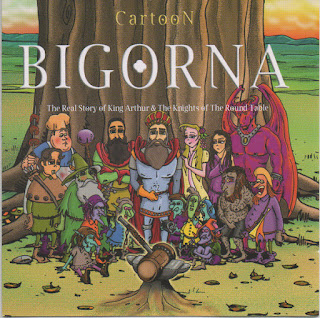 |
| Cartoon "Martelo"1999 "Bigorna"2002 + "Estribo" 2008 + "Unbeatable" 2013 + "V" 2017 Brazil Prog Folk Rock |
 |
| Cartoon "Martelo"1999 "Bigorna"2002 + "Estribo" 2008 + "Unbeatable" 2013 + "V" 2017 Brazil Prog Folk Rock |
 |
| Cartoon "Martelo"1999 "Bigorna"2002 + "Estribo" 2008 + "Unbeatable" 2013 + "V" 2017 Brazil Prog Folk Rock |
 |
| Cartoon "Martelo"1999 "Bigorna"2002 + "Estribo" 2008 + "Unbeatable" 2013 + "V" 2017 Brazil Prog Folk Rock |
 |
| Cartoon "Martelo"1999 "Bigorna"2002 + "Estribo" 2008 + "Unbeatable" 2013 + "V" 2017 Brazil Prog Folk Rock |
 |
| Gerson Werlang"Memorias Do Tempo"2008 + "Sistema Solar"2015 Brazil Prog Rock (Poços & Nuvens...member) |
 |
| Gerson Werlang"Memorias Do Tempo"2008 + "Sistema Solar"2015 Brazil Prog Rock (Poços & Nuvens...member) |
.jpg) |
| Necro "Necronomicon "The Queen Of Death" 2012 + Witching Altar, Necro "Witching Altar / Necro" EP 2015 + "Necro" 2014 + "Adiante" 2016 + "Pra Tomar Chá"EP 2019 Brazil,Heavy Psych.Stoner,Doom Metal |
 |
| Necro "Necronomicon "The Queen Of Death" 2012 + Witching Altar, Necro "Witching Altar / Necro" EP 2015 + "Necro" 2014 + "Adiante" 2016 + "Pra Tomar Chá"EP 2019 Brazil,Heavy Psych.Stoner,Doom Metal |
.jpg) |
| Necro "Necronomicon "The Queen Of Death" 2012 + Witching Altar, Necro "Witching Altar / Necro" EP 2015 + "Necro" 2014 + "Adiante" 2016 + "Pra Tomar Chá"EP 2019 Brazil,Heavy Psych.Stoner,Doom Metal |
.jpg) |
| Necro "Necronomicon "The Queen Of Death" 2012 + Witching Altar, Necro "Witching Altar / Necro" EP 2015 + "Necro" 2014 + "Adiante" 2016 + "Pra Tomar Chá"EP 2019 Brazil,Heavy Psych.Stoner,Doom Metal |
.jpg) |
| Necro "Necronomicon "The Queen Of Death" 2012 + Witching Altar, Necro "Witching Altar / Necro" EP 2015 + "Necro" 2014 + "Adiante" 2016 + "Pra Tomar Chá"EP 2019 Brazil,Heavy Psych.Stoner,Doom Metal |
 |
| Alexandre Maraslis "Spiritual Awakening"2000 + "Maraslis" 2021 Brazil Prog Rock |
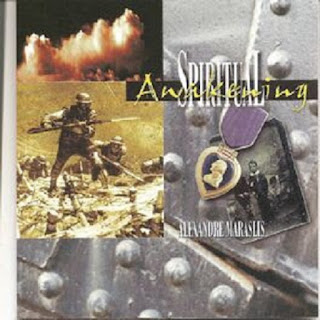 |
| Alexandre Maraslis "Spiritual Awakening"2000 + "Maraslis" 2021 Brazil Prog Rock |
 |
| Pequeno Céu "Pequeno Céu" 2014 +"Sargaço"2014 + "Praia Vermelha" 2017 Brazil Prog Jazz Rock,Post Rock,Math Rock |
 |
| Pequeno Céu "Pequeno Céu" 2014 +"Sargaço"2014 + "Praia Vermelha" 2017 Brazil Prog Jazz Rock,Post Rock,Math Rock |
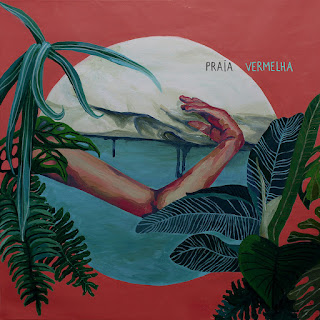 |
| Pequeno Céu "Pequeno Céu" 2014 +"Sargaço"2014 + "Praia Vermelha" 2017 Brazil Prog Jazz Rock,Post Rock,Math Rock |
 |
| Quinteto Armorial "Do Romance ao Galope Nordestino" 1974 + "Aralume" 1976 + "Quinteto Armorial"1978 + "Sete Flechas"1980 Brazil Prog Folk |
 |
| Quinteto Armorial "Do Romance ao Galope Nordestino" 1974 + "Aralume" 1976 + "Quinteto Armorial"1978 + "Sete Flechas"1980 Brazil Prog Folk |
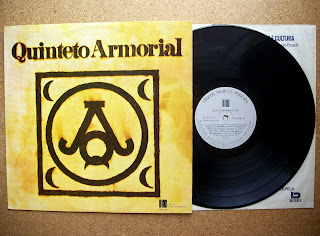 |
| Quinteto Armorial "Do Romance ao Galope Nordestino" 1974 + "Aralume" 1976 + "Quinteto Armorial"1978 + "Sete Flechas"1980 Brazil Prog Folk |
 |
| Quinteto Armorial "Do Romance ao Galope Nordestino" 1974 + "Aralume" 1976 + "Quinteto Armorial"1978 + "Sete Flechas"1980 Brazil Prog Folk |
 |
| Hadron "I" 2023 + Hadron "II" 2023 Brazil Heavy Psych,Heavy Prog,Hard Rock |
 |
| Hadron "I" 2023 + Hadron "II" 2023 Brazil Heavy Psych,Heavy Prog,Hard Rock |
 |
| Locomotiva Elétrica " Manual de Delírios Cotidianos" 2016 + "Os Animais Que Nos Habitam" EP 2024 Brazil Prog,Psych,Stoner,Space Rock |
 |
| Locomotiva Elétrica " Manual de Delírios Cotidianos" 2016 + "Os Animais Que Nos Habitam" EP 2024 Brazil Prog,Psych,Stoner,Space Rock |
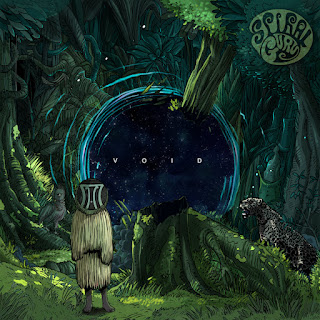 |
| Spiral Guru "Void" 2019 + "Silenced Voices" EP 2024 Piracicaba,Brazil Heavy Psych,Space,Stoner Rock |
 |
| Spiral Guru "Void" 2019 + "Silenced Voices" EP 2024 Piracicaba,Brazil Heavy Psych,Space,Stoner Rock |
 |
| Alfa Serenar "The Mood Machine (and other furnitures)"2019 + "Via" 2020 + "O Sereno da Noite" 2023 Brazil Prog,Electronic,Space Rock |
 |
| Alfa Serenar "The Mood Machine (and other furnitures)"2019 + "Via" 2020 + "O Sereno da Noite" 2023 Brazil Prog,Electronic,Space Rock |
 |
| Alfa Serenar "The Mood Machine (and other furnitures)"2019 + "Via" 2020 + "O Sereno da Noite" 2023 Brazil Prog,Electronic,Space Rock |
 |
| Bike "Em Busca Da Viagem Eterna" 2017 + "Their Shamanic Majesties' Third Request"2018 + "Quarto Templo"2019 + "Live Sessions, Vol.1"2021 + "Arte Bruta" 2023 São Paulo,Brazil Psych,Alternative Rock |
 |
| Bike "Em Busca Da Viagem Eterna" 2017 + "Their Shamanic Majesties' Third Request"2018 + "Quarto Templo"2019 + "Live Sessions, Vol.1"2021 + "Arte Bruta" 2023 São Paulo,Brazil Psych,Alternative Rock |
 |
| Bike "Em Busca Da Viagem Eterna" 2017 + "Their Shamanic Majesties' Third Request"2018 + "Quarto Templo"2019 + "Live Sessions, Vol.1"2021 + "Arte Bruta" 2023 São Paulo,Brazil Psych,Alternative Rock |
 |
| Bike "Em Busca Da Viagem Eterna" 2017 + "Their Shamanic Majesties' Third Request"2018 + "Quarto Templo"2019 + "Live Sessions, Vol.1"2021 + "Arte Bruta" 2023 São Paulo,Brazil Psych,Alternative Rock |
 |
| Bike "Em Busca Da Viagem Eterna" 2017 + "Their Shamanic Majesties' Third Request"2018 + "Quarto Templo"2019 + "Live Sessions, Vol.1"2021 + "Arte Bruta" 2023 São Paulo,Brazil Psych,Alternative Rock |
 |
| White Canyon & The 5th Dimension "White Canyon & The 5th Dimension" 2019 + "Soundtrack For Astral Travel" 2022 + "Live in El Quisco" 2023 + "Gardeners Of the Earth" 2023 Brazil Psych Rock,Post Punk |
 |
| White Canyon & The 5th Dimension "White Canyon & The 5th Dimension" 2019 + "Soundtrack For Astral Travel" 2022 + "Live in El Quisco" 2023 + "Gardeners Of the Earth" 2023 Brazil Psych Rock,Post Punk |
 |
| White Canyon & The 5th Dimension "White Canyon & The 5th Dimension" 2019 + "Soundtrack For Astral Travel" 2022 + "Live in El Quisco" 2023 + "Gardeners Of the Earth" 2023 Brazil Psych Rock,Post Punk |
 |
| White Canyon & The 5th Dimension "White Canyon & The 5th Dimension" 2019 + "Soundtrack For Astral Travel" 2022 + "Live in El Quisco" 2023 + "Gardeners Of the Earth" 2023 Brazil Psych Rock,Post Punk |
 |
| Moondaughter "Phosphenes and Iridescent Lights" 2022 São Paulo,Brazil Dream Pop,Post Rock,Psych Folk |
 |
| Fabio Golfetti "Songs & Visions" 2022 Brazil Art Rock, Psych Rock,Prog Rock (Gong & Violeta de Outono ...member) |
 |
| Trem Do Futuro "O Tempo" 2008 + "Trem do Futuro" 1995 Brazil Prog Symphonic |
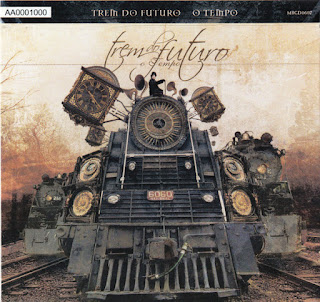 |
| Trem Do Futuro "O Tempo" 2008 + "Trem do Futuro" 1995 Brazil Prog Symphonic |
 |
| Fleesh "Here It Comes Again (A Tribute to Genesis)" 2020 + "Versions II" 2021 + "Eclipsed" 2021 Brazil Prog,Symphonic |
 |
| Fleesh "Here It Comes Again (A Tribute to Genesis)" 2020 + "Versions II" 2021 + "Eclipsed" 2021 Brazil Prog,Symphonic |
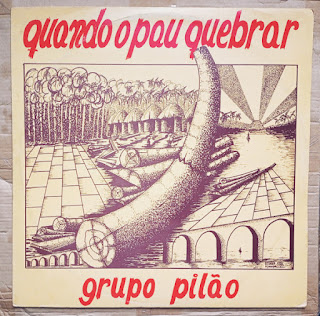 |
| Grupo Pilão "Quando o Pau Quebrar"1986 Brazil Latin Folk,Carimbó,MPB |
 |
| Azimüth "Azimüth"1975 + "Aguia Nao Come Mosca" 1977 + "Light As A Feather" 1979 Brazil Jazz Funk,Jazz Rock Fusion |
 |
| Azimüth "Azimüth"1975 + "Aguia Nao Come Mosca" 1977 + "Light As A Feather" 1979 Brazil Jazz Funk,Jazz Rock Fusion |
 |
| Azimüth "Azimüth"1975 + "Aguia Nao Come Mosca" 1977 + "Light As A Feather" 1979 Brazil Jazz Funk,Jazz Rock Fusion |
.jpg) |
| Joelho De Porco "Saqueando A Cidade" 1983 double LP + "18 Anos Sem Sucesso" 1988 Brazil Psych Punk Hard Jazz Pop Soul Funk Samba Comedy Rock |
 |
| Joelho De Porco "Saqueando A Cidade" 1983 double LP + "18 Anos Sem Sucesso" 1988 Brazil Psych Punk Hard Jazz Pop Soul Funk Samba Comedy Rock |
 |
| Lulu Santos "Assim Caminha a Humanidade" 1982 Brazil Psych Latin Groove Soul Funk,Electropop,New Wave |
.jpg) |
| Alpha III "Spectro" 1974 + "Sombras" 1986 + "Agartha" 1986 Brazil Prog Symphonic |
.jpg) |
| Alpha III "Spectro" 1974 + "Sombras" 1986 + "Agartha" 1986 Brazil Prog Symphonic |
 |
| Alpha III "Spectro" 1974 + "Sombras" 1986 + "Agartha" 1986 Brazil Prog Symphonic |
 |
| Alpha III "Spectro" 1974 + "Sombras" 1986 + "Agartha" 1986 Brazil Prog Symphonic |
.jpg) |
| Tisaris "What's Beyond ?"1992 + "Once Humanity..."1994 + "The Power Of Myth" 1996 Brazil Prog,Symphonic |
.jpg) |
| Tisaris "What's Beyond ?"1992 + "Once Humanity..."1994 + "The Power Of Myth" 1996 Brazil Prog,Symphonic |
 |
| Tisaris "What's Beyond ?"1992 + "Once Humanity..."1994 + "The Power Of Myth" 1996 Brazil Prog,Symphonic |
 |
| Atmosphera "Fogo E Ar" 1998 Brazil Prog Rock |
 |
| Grupo Um "Marcha Sobre A Cidade" 1979 Brazil Jazz Fusion,Avant Garde Jazz |
 |
| Tiago Araripe "Cabelos de Sansão" 1982 Brazil Psych Latin Folk Rock |
 |
| Jorge Mautner "Para Iluminar A Cidade"1972 Brazil Psych Folk,Latin Hippie Folk,Pop Rock |
 |
| Comunidade S8 "Apelo à Terra" 1983 Brazil Gospel Prog Symphonic |
 |
| Guilherme Lamounier "Guilherme Lamounier" 1973 Brazil Psych Acid, Folk Rock |
 |
| Mar Revolto "Mar Revolto" 1979 Brazil Psych Folk Rock,Latin Jazz Funk Fusion |
 |
| Arnaldo Baptista & Patrulha do Espaço"Faremos uma Noitada Excelente" 1988 Brazil Prog Hard Rock (Os Mutantes) |
 |
| Pholhas "Dead Faces"1972 Brazil Prog Pop Rock,Beat |
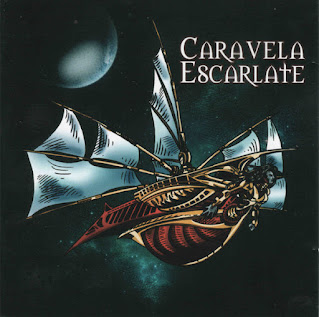 |
| Caravela Escarlate "Caravela Escarlate" 2017 Brazil Prog Symphonic |
.jpg) |
| Dialeto "The Last Tribe" 2013 Brazil Prog Hard Rock |
 |
| Poços & Nuvens "Ano Veloz Outono Adentro" 1998 + "Provincia Universo"2001 Brazil Prog Rock,Symphonic |
 |
| Poços & Nuvens "Ano Veloz Outono Adentro" 1998 + "Provincia Universo"2001 Brazil Prog Rock,Symphonic |
 |
| Maestro Sujo E O Sanatorio Gotham "Experimentos Do Fim Do Mundo" 2017 + "Estereocaos" 2015 + "Toda Psicodelia Agora” 2013 + "Maestro Sujo E O Sanatório Gotham"2011 Viamão,Brazil Psych Rock |
 |
| Maestro Sujo E O Sanatorio Gotham "Experimentos Do Fim Do Mundo" 2017 + "Estereocaos" 2015 + "Toda Psicodelia Agora” 2013 + "Maestro Sujo E O Sanatório Gotham"2011 Viamão,Brazil Psych Rock |
 |
| Maestro Sujo E O Sanatorio Gotham "Experimentos Do Fim Do Mundo" 2017 + "Estereocaos" 2015 + "Toda Psicodelia Agora” 2013 + "Maestro Sujo E O Sanatório Gotham"2011 Viamão,Brazil Psych Rock |
 |
| Maestro Sujo E O Sanatorio Gotham "Experimentos Do Fim Do Mundo" 2017 + "Estereocaos" 2015 + "Toda Psicodelia Agora” 2013 + "Maestro Sujo E O Sanatório Gotham"2011 Viamão,Brazil Psych Rock |
 |
| V.A."The Brasileiro Treasure Box of Funk"2015 CD & 7 x Vinyl, 7" 45 RPM, Compilation Brazil Latin Soul Funk |
 |
| Arrigo Barnabé E A Banda Sabor De Veneno "Clara Crocodilo"1980 Brazil Avantgarde,Avant Psych,Prog,Experimental |
 |
| V.A.“Brazilian Guitar Fuzz Bananas: Tropicalista Psychedelic Masterpieces 1967 - 1976″ Brazil Psych Rock |
 |
| Marcos Resende & Index "Marcos Resende & Index" 2021 Brazil Latin Jazz Funk,Fusion (recorded in Rio de Janeiro,Brazil, between 5th – 28th September 1976 unreleased debut album) |
 |
| Stratus Luna "Stratus Luna" 2019 Brazil Instrumental, Progressive Jazz-Rock,Fusion |
 |
 |
| Negro Leo “Desejo de Lacrar” 2020 Brazil Art Rock Experimental Psych Rock |
 |
| Zé Ramalho "A Peleja Do Diabo Com O Dono Do Céu" 1979 excellent Brazil Latin Funk ,Acid Psych Folk Rock |
 |
| Liverpool "Por Favor, Sucesso"1969 + "Marcelo Zona Sul" 1970 EP + "Hei Menina / Fale" 1971 single Brazil Psych Rock |
 |
| Liverpool "Por Favor, Sucesso"1969 + "Marcelo Zona Sul" 1970 EP + "Hei Menina / Fale" 1971 single Brazil Psych Rock |
 |
| Bombay Groovy "Dandy Do Dendê" 2016 + "Bombay Groovy" 2014 Brazil Psych Rock,Raga Rock |
 |
| Bombay Groovy "Dandy Do Dendê" 2016 + "Bombay Groovy" 2014 Brazil Psych Rock,Raga Rock |
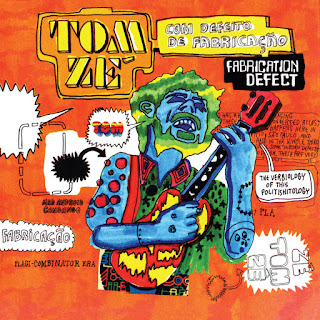 |
| Tom Zé "Com Defeito De Fabricação (Fabrication Defect)" 1998 Brazil Psych Avant Folk,Avantgarde,Tropicalia,MPB |
 |
| Zé Rodrix "I Acto" 1973 Brazil Psych Pop Rock,Baroque Pop,MPB (Sá, Rodrix & Guarabyra, Som Imaginario member) |
 |
| Violeta De Outono "Violeta De Outono" 1987 Brazil Psych Rock,Space Rock,Indie Rock,Alternative Rock,Post Punk |
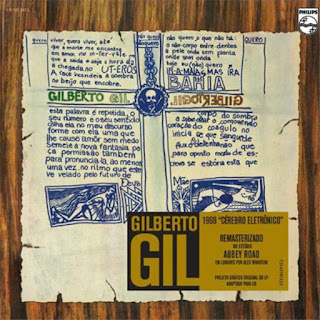 |
| Gilberto Gil “Gilberto Gil (aka Cérebro Eletrônico) ” 1969 Brazil Psych Rock,Samba Rock, Experimental,Tropicalia,MPB |
 |
| Tom Zé "Grande Liquidação" 1968 Brazil Psych Latin Pop Rock,Bossanova,Exotica,Tropicalia, MPB..classic, debut album |
 |
| Nação Zumbi (Zombie Nation) "Propagando" 2004 double CD& DVD Brazil Alternative Rock,Dub,Manguebeat, MPB |
 |
| V.A."Tropicalia A Brazilian Revolution in Sound " double LP Compilation 2005, Brazil Psych Rock,Tropicalia,Bossanova,Samba MPB |
 |
| Nação Zumbi “Radiola NZ, Vol. 1″ 2017 Brazil Alternative Rock,Dub,Manguebeat, MPB ( feat. Ney Matogrosso) |
 |
| Chico Buarque & Caetano Veloso "Caetano E Chico Juntos E Ao Vivo" 1972 Brazil Tropicalia,Samba,Bossa Nova,MPB |
 |
| Liniker E Os Caramelows “Remonta"2016 Brazil Soul Funk,R & B,Psych Soul,Neo Soul,Vocal Jazz, MPB |
 |
| Liniker e os Caramelows "Goela Abaixo" 2019 Brazil Soul Funk,R & B, MPB |
 |
| Ricardo Richaid "Travesseiro Feliz"2020 Brazil Psych Jazz Rock,Folk Rock,Indie Jazz Rock,Latin Rock,MPB |
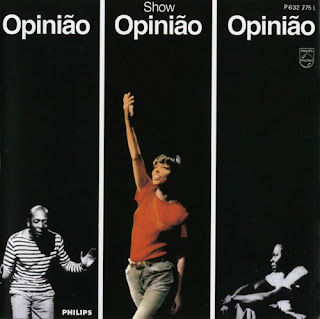 |
| Nara Leão, João do Vale e Zé Kéti “Show Opinião” 1965 Brazil Latin Samba,Spoken World,Protest Folk,MPB (100 Best Brazlian Albums,Rolling Stone) |
 |
| Maracatu "Veronique"1982 Brazil Jazz Rock,Fusion rare Germany Private Press |
 |
Os Famks "Os Famks" 1975 Brazil Beat Pop Rock |
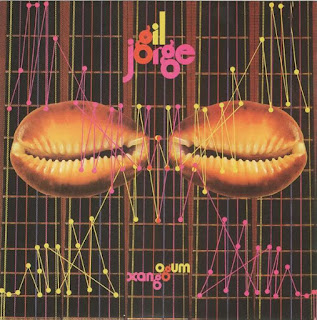 |
| Gilberto Gil e Jorge Ben“Gil & Jorge: Ogum, Xangô” 1975 Brazil Samba,Bossa Nova,Latin Soul,Tropicalia (100 Best Brazlian Albums,Rolling Stone) double LP |
 |
| João Gilberto“Amoroso”1977 Brazil,Latin Jazz,a bossa nova classic,MPB (100 Best Brazlian Albums,Rolling Stone) |
 |
| Os Paralamas do Sucesso“Selvagem?”1986 Brazil New Wave,Ska, Reggae,Dub,Pop Rock (100 Best Brazlian Albums,Rolling Stone) |
 |
| Terreno Baldio "Terreno Baldio" 1976 + "Além Das Lendas Brasileiras" 1977 Brazil Prog Rock |
 |
| Terreno Baldio "Terreno Baldio" 1976 + "Além Das Lendas Brasileiras" 1977 Brazil Prog Rock |
 |
| Chico Science & Nação Zumbi “Afrociberdelia” 1996 Brazil Funk Rock,Hip Hop,Afrobeat (100 Best Brazlian Albums,Rolling Stone) |
 |
| Chico Science & Nação Zumbi “Da Lama Ao Caos” 1994 Brazil Rock,Funk,Hip Hop,Maracatu,(100 Best Brazlian Albums,Rolling Stone) |
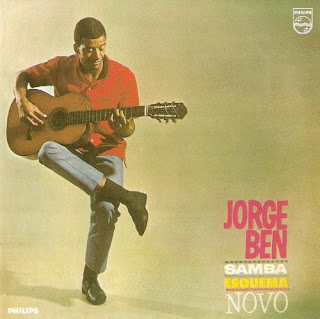 |
| Jorge Ben “Samba Esquema Novo” 1963 Brazil,Samba, Bossa Nova, MPB (100 Best Brazlian Albums,Rolling Stone) |
 |
| Racionais MC’s “Sobrevivendo No Inferno” 1997 double LP Brazil Hip Hop,Underground Rap (100 Best Brazlian Albums,Rolling Stone) |
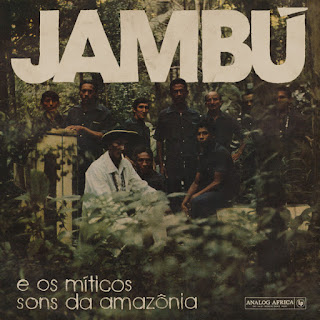 |
| V.A."Jambú e Os Míticos Sons Da Amazônia 1974-1986" 2019 - 2 x LP`s Compilation Brazil,Latin Jazz,Africa,Cumbia,Afrobeat,Afrofunk |
 |
| Super Erotico"Finalmente Liberado" 1974 rare Brazil Psych Soul Funk breaks (feat Brazilian producer and composer Durval Ferreira & Azimuth band) |
 |
| Gilberto Gil "Expresso 2222" 1972 Brazil Tropicalia,Samba Rock MPB (100 Best Brazilian Albums,Rolling Stone) |
 |
| Banda Black Rio "Maria Fumaça" 1977 Brazil Jazz Funk,Soul Samba Funk Fusion, MPB (100 Best Brazilian Albums,Rolling Stone) |
 |
| Caetano Veloso, Gal Costa, Gilberto Gil e Maria Bethânia “Doces Bárbaros”1976 double LP Brazil Samba Rock,MPB,Tropicalia (100 Best Brazilian Albums,Rolling Stone) |
 |
| Luiz Melodia "Pérola Negra"1973 Brazil Latin Funk,Samba Blues Rock Soul,MPB (100 Best Brazilian Albums,Rolling Stone) |
 |
| Gal Costa "Gal Costa" 1969 Brazil Psych Rock, MPB, Samba Rock,Psych Pop,Tropicalia (100 Best Brazlian Albums,Rolling Stone) (feat Gilberto Gil & Caetano Veloso) |
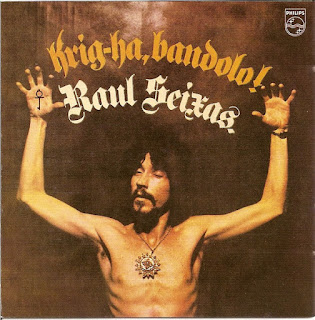 |
| Raul Seixas “Krig-ha, Bandolo!” 1973 Brazil,Samba Rock,Psych Folk Rock,Tropicalia MPB (100 Best Brazilian Albums,Rolling Stone) |
 |
| Azymuth "Demos 1973-75" Vol 1 & 2, 2019 double LP & CD Brazil Jazz Funk,Jaz Rock Fusion |
 |
| Azymuth "Demos 1973-75" Vol 1 & 2, 2019 double LP & CD Brazil Jazz Funk,Jaz Rock Fusion |
 |
| Messias Elétrico "Messias Elétrico" 2011 first album + "Messias Elétrico" 2015 second album Brazil Prog Psych |
 |
| Messias Elétrico "Messias Elétrico" 2011 first album + "Messias Elétrico" 2015 second album Brazil Prog Psych |
 |
| Arnaldo Baptista (Os Mutantes) "Lóki?" 1974 Brazil Psych Folk Pop,Prog Pop (100 Best Brazilian Albums,Rolling Stone) first solo album |
 |
| Erasmo Carlos “Carlos Erasmo” 1971 Brazil Psych Folk Rock,Samba Rock,MPB masterpiece (100 Best Brazilian Albums,Rolling Stone) |
 |
| Paulinho da Viola “A Dança da Solidão” 1972 Brazil Latin,Samba,MPB (100 Best Brazilian Albums,Rolling Stone) |
 |
| Caetano Veloso “Cinema Transcendental”1979 Brazil Tropicalia, Psych Latin,Folk,Pop,Samba,MPB (100 Best Brazilian Albums,Rolling Stone) |
 |
| Gal Costa “Fa-Tal-Gal A Todo Vapor”1971 double LP Live Brazil Psych Folk Rock, Tropicalia(100 Best Brazilian Albums,Rolling Stone) |
 |
| Paulinho Da Viola "Nervos De Aço"1973 Brazil SambaJazz,Bossa Nova,MPB (100 Best Brazilian Albums,Rolling Stone) |
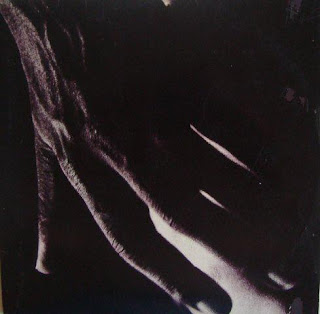 |
| Milton Nascimento "Milagre Dos Peixes"1973 Brazil Experimental,Avant Garde,Avant Folk,Jazz,MPB double album (feat Naná Vasconcelos) (100 Best Brazilian Albums,Rolling Stone) |
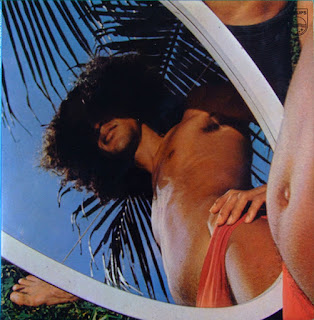 |
| Caetano Veloso "Araçá Azul" 1973 Brazil Experimental,Latin,Jazz,Samba,Avant Garde,MPB (100 Best Brazilian Albums,Rolling Stone) |
 |
| Jorge Ben "A Tábua De Esmeralda" 1974 Brazil,Latin,Jazz,Samba,MPB (100 Best Brazilian Albums,Rolling Stone) |
 |
| João Gilberto "Chega De Saudade"1959 Brazil Bossa Nova,MPB (100 Best Brazilian Albums,Rolling Stone) |
 |
| Chico Buarque "Construção" 1971 Brazil,Samba,Bossa Nova,Jazz,MPB (100 Best Brazilian Albums,Rolling Stone) |
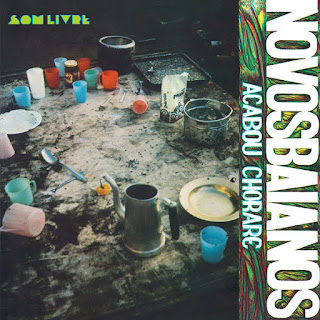 |
| Novos Baianos "Acabou Chorare"1972 Brazil Samba Rock,Psych Folk Rock,MPB (100 Best Brazilian Albums,Rolling Stone) one of the biggest MPB albums...! |
 |
| Rita Lee & Tutti Frutti "Fruto Proibido” 1975 Brazil Psych,Blues, Pop Rock,Glam Rock (100 Best Brazilian Albums,Rolling Stone) |
 |
| Tom Zé "Estudando O Samba" 1976 Brazil Avant Garde,Samba,Experimental,MPB (100 best Brazilian albums,Rolling Stone) |
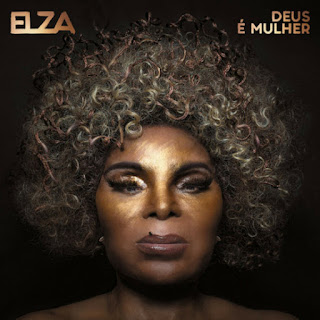 |
| Elza Soares "Deus É Mulher" 2018 Brazil Poltical,Math Rock,Art Rock,Art Pop,Samba,Experimental,Art Punk,MPB |
 |
| V.A.“Psychedelic Pernambuco” (Mr Bongo presents) 2 x LP`s & CD Psych Folk Rock Compilation from Brazil |
 |
| Caetano Veloso "Transa" 1972 Latin Pop,Samba,MPB one of the best Braziilian albums (100 Best Brazilian Albums,Rolling Stone) |
 |
| Chico Buarque “Chico Buarque de Hollanda 3” 1968 Brazil Latin,Bossa Nova,Samba-Canção. ..one of the best Brazilian albums..recommended…! |
 |
| Jorge Ben"Africa Brasil"1976 Brazil Latin Funk,Samba Rock one of best Brazil album ever recorded (100 Best Brazilian Albums,Rolling Stone) |
 |
| Alceu Valença & Geraldo Azevedo “Alceu Valença & Geraldo Azevedo"1972 Brazil Psych Folk Pop,Rock MPB |
 |
| Dom Salvador E Abolição "Som, Sangue E Raça"1971 Brazil Latin Funk,Latin Jazz,Samba Jazz,Samba Soul,MPB |
 |
| Burnier & Cartier "Burnier & Cartier" 1974 ultra rare & excellent Brazil Latin Funk,Soul,Samba Jazz,MPB,Bossa Soul |
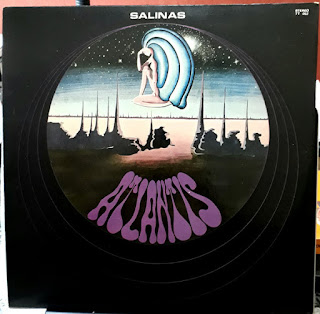 |
| Daniel Salinas "Paz Amor E Samba" 1972 +“Atlantis"1974 Brazil Samba,Jazz Funk,Latin Funk |
 |
| Daniel Salinas "Paz Amor E Samba" 1972 +“Atlantis"1974 Brazil Samba,Jazz Funk,Latin Funk |
 |
| Modulo 1000 “Nao Fale Com Paredes” 1972 Heavy Psych Brazilian Monster + Love Machine "The Cancer Stick / Waitin’ For Tomorrow" 1972 rare single 7" by Modulo 1000 with name “Love Machine” |
 |
| Modulo 1000 “Nao Fale Com Paredes” 1972 Heavy Psych Brazilian Monster + Love Machine "The Cancer Stick / Waitin’ For Tomorrow" 1972 rare single 7" by Modulo 1000 with name “Love Machine” |
 |
| Zé Rodrix E A Agência De Mágicos “Quem Sabe Sabe Quem Não Sabe Não Precisa Saber” 1974 Brazil Psych Rock,Jazz Rock,MPB |
 |
| Leno "Brasil Jovem Guarda - Academia Brasileira de Música - Vol. 2" 1991 Brazil MPB Tropicalia,Latin Pop Rock |
 |
| Tribo Massáhi "Estrelando Embaixador" Brazil 1972 Tropicalia,Afro Psych,Samba one of the rarest Brazilian records of all time |
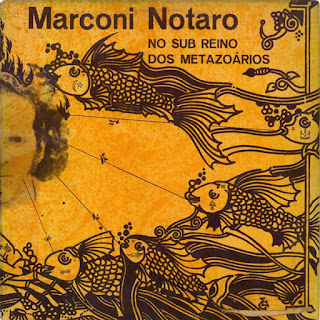 |
| Marconi Notaro "No Sub Reino dos Metazoários Rozenblit"1973 featuring Lula Côrtes & Co- mega rare Brazil Private Psych Acid Folk Experimental,Underground Freak |
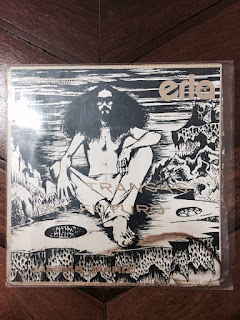 |
| Jarbas Mariz "Transas Do Futuro" EP 1977 Brazil Psych Folk Rock, ERLA label reissued in 2011 by Vale Verde Records |
 |
| Som Imaginário "Som Imaginário" 1970 + "Som Imaginário" 1971 + "Matança Do Porco" 1973 Brazil Psych Rock |
 |
| Lula Cortês e Zé Ramalho "Paêbirú: Caminho da Montanha do Sol" 1975 mega rare Brazil Psych Freak Folk Rock,Experimental....recommended...! |
 |
| Luiz Carlos Vinhas “O Som Psicodélico de L.C.V.” 1968 Brazil Psych,Jazz Rock,Latin Bossanova,Tropicalia,MPB |
 |
| The Gentlemen "The Gentlemen"1972 ultra rare Brazil Psych Garage Beat only 200 copies pressed reissued by Mr.Bongo |
 |
| Quarto Crescente "Quarto Crescente" 1981 Brazil Blues Rock,Hard Rock,Rock n` Roll (Made In Brazil,Patrulha Do Espaço, Tutti Frutti-members) |
 |
| Walter Franco “Revolver” 1975 Brazil Psych Funk,Art Rock,Experimental,MPB (100 Best Brazlian Albums,Rolling Stone) |
 |
| Legião Urbana “Dois” 1986 Brazil Pop Rock,Post Punk,Alternative Rock (100 Best Brazlian Albums,Rolling Stone) |
 |
| Nara Leão, João do Vale e Zé Kéti “Show Opinião” 1965 Brazil Latin Samba,Spoken World,Protest Folk,MPB (100 Best Brazlian Albums,Rolling Stone) |
 |
| Caetano Veloso "Caetano Veloso"1968 Brazil Tropicalia Psych Latin,Folk,Pop (100 Best Brazilian Albums,Rolling Stone) |
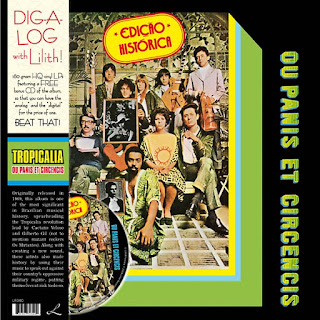 |
| V.A. “Tropicália Ou Panis Et Circensis” 1968 Brazil Latin Bossanova, Psychedelic Rock one of the best Brazilian albums (100 Best Brazlian Albums,Rolling Stone) |
 |
| Apokalypsis “1975” 1975 Brazil Rock Prog Rock |
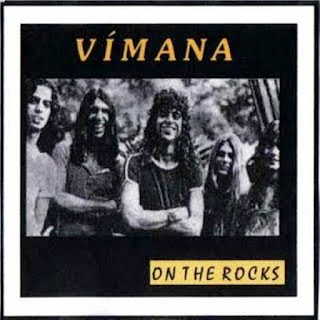 |
| Vimana" On The Rocks"1977 Brazil Prog Rock (Modulo 1000,Os Mutantes,Mainhorse,Yes,Moody Blues,A Barca Do Sol-members) |
 |
| Tim Maia “Nobody Can Live Forever: The Existential Soul of Tim Maia" 70`s Brazil Psych,Gospel,Funk,Soul…recommended…one of the best Brazil albums made..! |
 |
| Ney Matogrosso (Secos e Molhados) ”Água Do Céu Pássaro” 1975 Brazil Prog Pop,Avant Folk debut solo album |
 |
| Os Mutantes “A Divina Comédia Ou Ando Meio Desligado” 1970 third album Brazil Psych Rock (100 Best Brazilian Albums,Rolling Stone) |
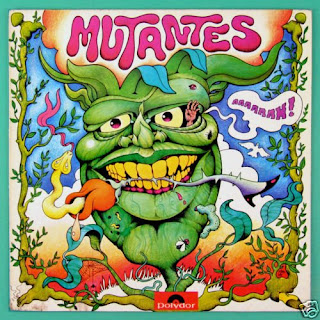 |
| Os Mutantes “Jardim Elétrico” 1971 fourth album Brazil Psych Rock (100 Best Brazlian Albums,Rolling Stone) |
 |
| Casa das Máquinas “Casa Das Máquinas” 1974 + “Lar de Maravilhas“ 1975 + “Casa De Rock”1976 Brazil Prog Hard Rock |
 |
| Gilberto Gil "Expresso 2222" 1972 Brazil Tropicalia,Samba Rock MPB (100 Best Brazlian Albums,Rolling Stone |
 |
| Flaviola E O Bando Do Sol ”Flaviola E O Bando Do Sol” 1976 Brazil Psych Folk |
 |
| Casa das Máquinas “Casa Das Máquinas” 1974 + “Lar de Maravilhas“ 1975 + “Casa De Rock”1976 Brazil Prog Hard Rock |
 |
| Mutantes “E Seus Cometas No País Dos Baurets” 1972 Fifth album.Brazil Psych Rock |
 |
| Os Mutantes “Os Mutantes”1968 debut album Brazil Psych Rock (100 Best Brazilian Albums,Rolling Stone) |
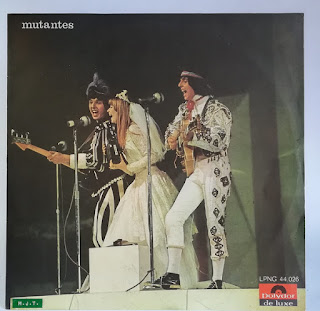 |
| Mutantes “Mutantes”1969 Second album Brazil Psych Rock (100 Best Brazilian Albums,Rolling Stone) |
 |
| Mutantes ”Tudo Foi Feito Pelo Sol “1974 sixth album Brazil Psych Rock |
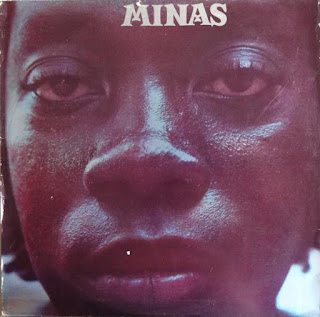 |
| Milton Nascimento "Minas" 1975 Brazil Psych Jazz Latin Funk |
 |
| Spectrum “Geracao Bendita” 1971 mega rare Private Brazil Psychedelic Rock |
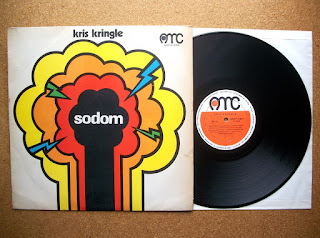 |
| Kris Kringle “Sodom” 1971 Brazil Heavy Psych Prog Funk |
 |
| Free Son “Banguele” 1972 Brazil Psych Funk |
 |
| Trio Mocotó "Muita Zorra” 1971 Brazil latin funk soul Samba Rock |
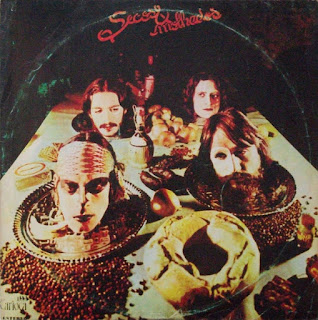 |
| Secos e Molhados “Secos e Molhados” 1973 Brazil Prog Psych debut album (100 Best Brazilian Albums,Rolling Stone) |
 |
| Secos e Molhados “Secos & Molhados II” 1974 Brazil Latin Prog Psych second album |
 |
| Bacamarte “Depois Do Fim” 1983 Brazil Symphonic Prog Rock masterpiece |
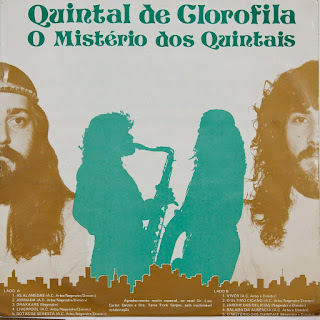 |
| Quintal De Glorofila “O Misterio Dos Quintais” 1983 Brazil Psych Folk |
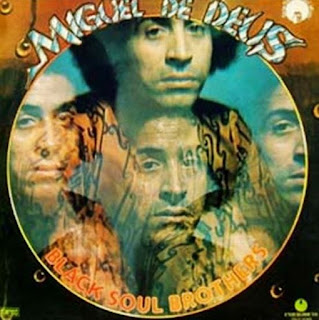 |
| Miguel de Deus “Black Soul Brothers” 1977 Brazil Soul Psych Funk (Os Brazões-member) |
 |
| Milton Nascimento “Milton” 1970 Brazil Folk World Latin |
 |
| VA “Black Rio Vol.2: Brazil Soul Power" 1968-1981 |
 |
| Beat Boys “Beat Boys” 1968 Brazil Psych Pop Rock |
 |
| Piri “Voces Querem Mate" 1970 great ultra rare Brazil Latin Bossa Psych Funk |
 |
| Hugo Filho “Paraibô” 1978 ultra rare Private Brazil Acid Psych Folk gem |
 |
| Som Nosso De Cada Dia “Snegs” 1974 Brazil Prog Symphonic Rock |
 |
| Persona “Som” 1975 mega rare home-made Private Brazil Psych Experimental |
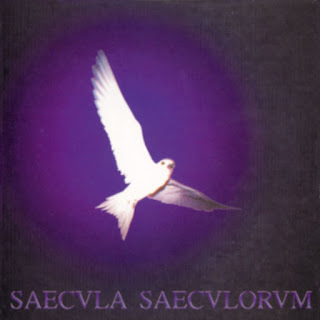 |
| Saecula Saeculorum "Saecula Saeculorum" 1976 Brazil Prog Symphonic |
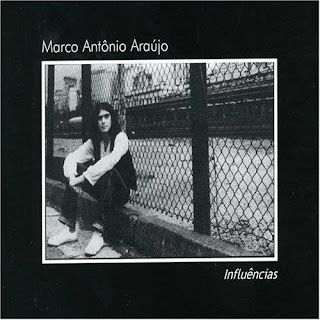 |
| Marco Antonio Araujo “Influencias” 1981 Brazil Prog Folk |
 |
| Rita Lee & Lucia Turnbull "Cilibrinas Do Éden" 1973 Brazil Psych Rock |
 |
| Liverpool "Por Favor, Sucesso"1969 Brazil Psych Rock |
 |
| The Fire Boys "Música Para a Jovem Guarda" 1966 -1967? rare Brazil Surf Rock n` Roll |
 |
| Cátia De França "20 Palavras Ao Redor Do Sol"1979 Brazil Latin, Folk, World, & Country |
 |
| Luis Bonfa “Jacaranda” 1973 Brazil Latin,Soul Samba Bossa Jazz Fusion(feat Eumir Deodato)…a Samba Bossa classic |
 |
| Jorge Ben “Fôrça Bruta” 1970 Brazil Latin Jazz,Samba Soul,Samba Rock (100 Best Brazilian Albums,Rolling Stone) |
 |
| Rogério Duprat “The Brazilian Suite” 1970 Brazil Latin Funk |
 |
| A Barca do Sol “Pirata” 1979 Brazil Prog Folk Rock |
 |
| Lula Côrtes "Rosa De Sangue" 1980 Brazil Private Psych Folk Rock monster |
 |
| Jorge Mautner “Para Iluminar A Cidade” 1972 ultra rare Brazil Bossa, Tropicalia, Folk Rock,Psych |
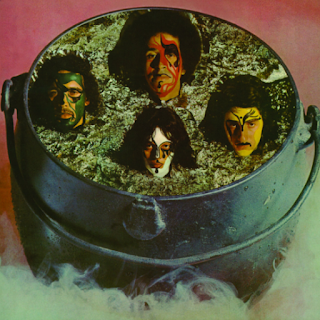 |
| Assim Assado "Assim Assado" 1974 very rare Brazil Soul Psych Latin Funk (Secos & Molhados, Os Brazões) |
 |
| Os Brazões “Os Brazões” Brazil 1969 Brazil Psych Rock,Tropicalia,Samba Rock |
 |
| Teo Azevedo "Grito Selvagem"1974 Brazil Soul Funk, Samba Psych ,Samba Funk,MPB |
 |
| A Chave “De Ponta Cabeça” 1977 Brazil Hard Rock |
 |
| Eduardo Araujo “Eduardo Araujo"1971 excellent Brazil Latin Soul Funk Rock |
 |
| The Fevers "The Fevers" 1973 Brazil Latin,Psych Pop,Beat,Rock |
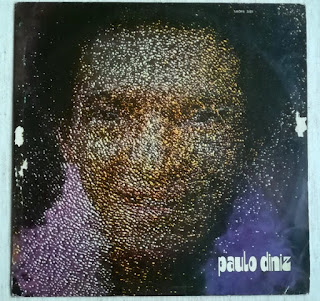 |
| Paulo Diniz "Paulo Diniz “ 1974 Brazil rare Latin Soul Funk groove |
 |
| Alceu Valença "Espelho Cristalino" 1977 Brazil Latin Folk Pop |
 |
| Caetano Veloso "Caetano Veloso"1969 Brazil Latin Bossanova,Psych Rock Tropicalia,Samba,MPB |
 |
| Eduardo Araujo & Silvinha "Sou Filho Dêsse Chão" 1976 rare & excellent Brazil Psych Funk Soul Rock |
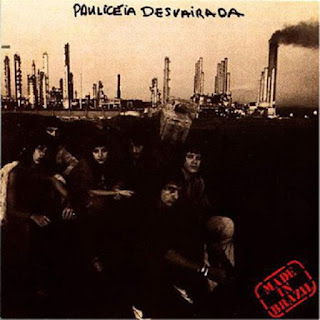 |
| Made In Brazil "Paulicéia Desvairada" 1978 Brazil Pop Rock,Hard Rock |
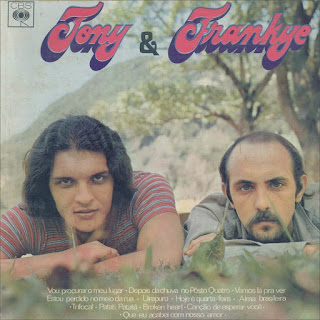 |
| Tony & Frankye "Tony & Frankye" 1971 very rare Brazil Soul Funk, MPB,Latin Funk |
 |
| Belchior “Alucinação” 1976 Brazil Psych Latin Funk Rock,Soul |
 |
| Tim Maia"Racional Vol 1" 1974 + "Racional Vol. 2"1975 (100 Best Brazilian Albums,Rolling Stone) Brazil Latin Psych Soul Funk Rock |
 |
| Tim Maia"Racional Vol 1" 1974 + "Racional Vol. 2"1975 (100 Best Brazilian Albums,Rolling Stone) Brazil Latin Psych Soul Funk Rock |
 Sergio Sampaio "Eu Quero É Botar Meu Bloco Na Rua…“ 1973 Brazil Samba Psych Pop,Folk Pop |
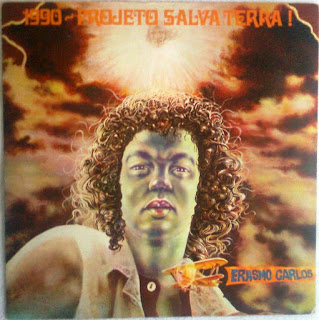 |
| Erasmo Carlos "1990 - Projeto Salva Terra" 1974 excellent... Brazil Psych Groovie,Samba Rock,MPB |
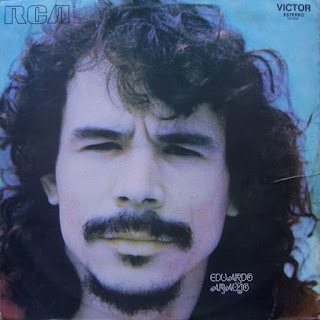 |
| Eduardo Araújo “Eduardo Araújo” 1972 Brazil Psych Rock,Soul Funk |
 |
| Gerson Conrad (ex-Secos & Molhados) “E Zezé Motta" Som Livre"1975 Brazil Psych Rock,MPB,Latin |
 |
| Sexteto Do Beco "Sexteto Do Beco"1980 Brazil Latin Soul Jazz Fusion,MPB |
 |
| Alceu Valença “Vivo!” 1976 Brazil Jazz Rock,Jazz Fusion,Folk Rock,MPB |
 |
| Som Nosso de Cada Dia"Som Nosso"1977 Brazil Latin Prog Funk Rock |
 |
| Joelho De Porco “São Paulo - 1554 / Hoje” 1973 Brazil Prog Punk Rock |
 |
| Sá, Rodrix & Guarabyra “Terra” 1973 Brazil Psych Folk Rock,Country Rock |
 |
| Arnaud Rodrigues "Murituri" 1974 Brazil ultra rare & excellent Soul Funk Psych Soul |
 |
| Novos Bahianos + Baby Consuelo “No Final Do Juízo” 1971 EP Brazil Psych Folk Rock |
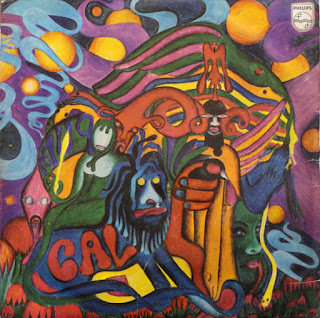 |
| Gal Costa “Gal” 1969 Brazil Psych Funk Rock,Experimental Tropicalia..one of the best Brazilian album |
 |
| Patrulha do Espaço “Patrulha do Espaço” 1981 Brazil Heavy Rock Hard Rock |
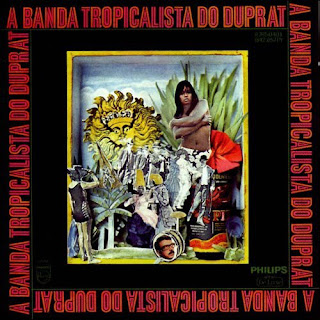 |
| Rogerio Duprat (Os Mutantes) “A Banda Tropicalista do Duprat” 1968 Brazil Folk Rock,Tropicalia,MPB |
 |
| Robertinho de Recife "Robertinho no Passo” (Com Hermeto Pascoal) 1978 Brazil Jazz Rock Prog, MPB |
 |
| Zé Ramalho “Zé Ramalho” 1978 Brazil Psych Folk Rock,MPB |
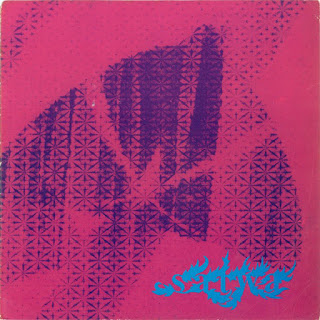 |
| Lula Côrtes & Laílson "Satwa" 1973 very rare & excellent Brazil Private Acid Psych Folk |
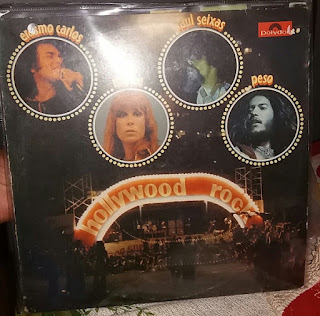 |
| V.A.“Hollywood Rock”1975 (Raul Seixas, Rita Lee, Erasmo Carlos, O Peso) 1975 Brazil Prog Rock,Blues Rock |
 |
| Som Imaginário "Som Imaginário" 1970 + "Som Imaginário" 1971 + "Matança Do Porco" 1973 Brazil Psych Rock |
 |
| Som Imaginário "Som Imaginário" 1970 + "Som Imaginário" 1971 + "Matança Do Porco" 1973 Brazil Psych Rock |
 |
| Moto Perpétuo “Moto Perpétuo” 1974 Brazil Psych Folk Rock,Prog,Symphonic |
 |
| Raimundo Fagner “Ave Noturna” 1975 Brazil,Latin,Folk Rock,Prog Rock, MPB |
 |
| Sound Factory “Sound Factory” 1970 Brazil Hard Psych monster..! |
 |
| O Bando “O Bando” 1969 Brazil Psych Pop Rock |
 |
| Aratanha Azul “Aratanha Azul” 1979 EP Brazil Psych Folk Rock |
 |
| Cry Babies “Cry Babies” 1969 Brazil rare Latin Psych Funk Soul Groove |
 |
| Silvinha “Silvinha” 1971 Brazil Psych Jazz Rock,MPB |
 |
| Lô Borges ”Lô Borges”1972 Brazil Prog,Folk,Jazz Fusion, best Brazilian albums...recommended..! |
 |
| Piti “Hall” 1970 EP 7" Brazil Hippie Folk Tropicalia Soul Psych |
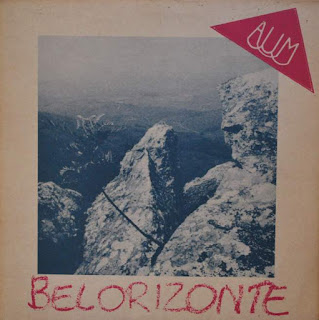 |
| Aum "Belorizonte" 1983 Brazil Prog Jazz Rock Fusion |
 |
| Marcos Valle “Vento Sul” 1972 Brazil Psych Samba,MPB,Bossanova, (with members of the “O Terço) |
 |
| Ronnie Von "A Máquina Voadora" 1970 Brazil Psych Rock |
 |
| Wanderléa “Vamos Que Eu Já Vou” 1977 Brazil Pop Funk Fusion |
 |
| Perfume Azul do Sol “Nascimento"1974 Private Brazil Psych |
 |
| Serguei “Psicodélico 1966-1975″ 2013 Brazil Garage Psych Rock Compilation |
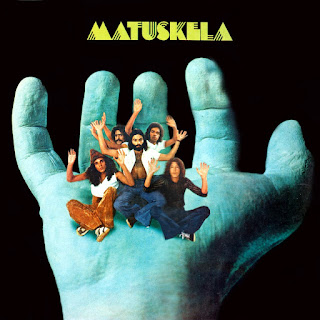 |
| Matuskela “Matuskela” 1973 Brazil Prog Psych |
 |
| Arthur Verocai "Arthur Verocai"1972 Brazil Latin Soul Funk,MPB |
 |
| Ninguém Sabe "Ninguém Sabe" 2015 Prog Hard Blues Rock debut album |
 |
| Fuzi 9 "Fuzi 9"1970 Brazil Funky,Soul,Samba,MPB |
 |
| Carlos Walker "A Frauta de Pã" 1975 very rare Brazil Dreamy Psych Folk |
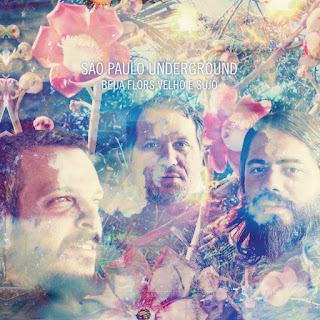 |
| São Paulo Underground "Beija Flors Velho E Sujo" 2013 Brazil Avant Garde Jazz,Experimental,Free Jazz |
 |
| Gal Costa “Cantar” 1974 Brazil Jazz,Latin,Bossa Nova MPB (100 best Brazilian albums Rolling Stone) |
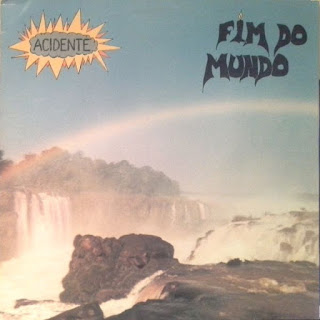 |
| Acidente "Fim Do Mundo" 1983 Brazil Hard Rock |
 |
| Blow Up "Blow Up" 1971 Brazil Hippie Fuzz Psych very rare first pressing in Caravelle label |
 |
| Rita Lee & Tutti Frutti "Atrás Do Porto Tem Uma Cidade" 1974 Brazil Glam Rock,Pop Rock |
 |
| Tom Jobim “Wave” 1967 Brazil Latin Jazz,Bossa Nova,Samba Jazz (100 Best Brazlian Albums,Rolling Stone) |
 |
| Titãs “Cabeça Dinossauro” 1986 Brazil New Wave,Post Punk (100 Best Brazlian Albums,Rolling Stone) |
 |
| Marisa Monte “MM” 1989 Brazil Latin Jazz,Blues,MPB (100 Best Brazlian Albums,Rolling Stone) |
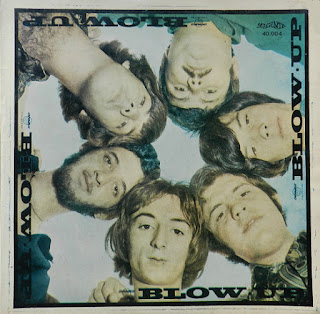 |
| Blow-Up "Blow-Up"1969 Brazil Psych,Beat ,Surf,Pop Rock,debut album |
 |
| Manfredo Fest "Brazilian Dorian Dream" 1976 Brazil Private Jazz Funk, Fusion masterpiece...high recommended...! |
Artist Photos
.jpg) |
| Sagrado Coração Da Terra:Brazil Prog,Symphonic |
.jpg) |
| Sagrado Coração Da Terra:Brazil Prog,Symphonic |
.jpg) |
| Sagrado Coração Da Terra:Brazil Prog,Symphonic |
.jpg) |
| Sagrado Coração Da Terra:Brazil Prog,Symphonic |
.jpg) |
| Sagrado Coração Da Terra:Brazil Prog,Symphonic |
.jpg) |
| Sagrado Coração Da Terra:Brazil Prog,Symphonic |
.jpg) |
| Sagrado Coração Da Terra:Brazil Prog,Symphonic |
.jpg) |
| Sagrado Coração Da Terra:Brazil Prog,Symphonic |
.jpg) |
| Sagrado Coração Da Terra:Brazil Prog,Symphonic |
.jpg) |
| Sagrado Coração Da Terra:Brazil Prog,Symphonic |
.jpg) |
| Sagrado Coração Da Terra:Brazil Prog,Symphonic |
.jpg) |
| Sagrado Coração Da Terra:Brazil Prog,Symphonic |
.jpg) |
| Sagrado Coração Da Terra:Brazil Prog,Symphonic |
.jpg) |
| Sagrado Coração Da Terra:Brazil Prog,Symphonic |
.jpg) |
| Sagrado Coração Da Terra:Brazil Prog,Symphonic |
.jpg) |
| Sagrado Coração Da Terra:Brazil Prog,Symphonic |
.jpg) |
| Sagrado Coração Da Terra:Brazil Prog,Symphonic |
.jpg) |
| Made In Brazil: Brazil Hard Rock,Classic Rock,Blues Rock Rock n` Roll Glam Rock |
.jpg) |
| Made In Brazil: Brazil Hard Rock,Classic Rock,Blues Rock Rock n` Roll Glam Rock |
.jpg) |
| Made In Brazil: Brazil Hard Rock,Classic Rock,Blues Rock Rock n` Roll Glam Rock |
.jpg) |
| Made In Brazil: Brazil Hard Rock,Classic Rock,Blues Rock Rock n` Roll Glam Rock |
.jpg) |
| Made In Brazil: Brazil Hard Rock,Classic Rock,Blues Rock Rock n` Roll Glam Rock |
.jpg) |
| Made In Brazil: Brazil Hard Rock,Classic Rock,Blues Rock Rock n` Roll Glam Rock |
.jpg) |
| Made In Brazil: Brazil Hard Rock,Classic Rock,Blues Rock Rock n` Roll Glam Rock |
.jpg) |
| Made In Brazil: Brazil Hard Rock,Classic Rock,Blues Rock Rock n` Roll Glam Rock |
.jpg) |
| Made In Brazil: Brazil Hard Rock,Classic Rock,Blues Rock Rock n` Roll Glam Rock |
.jpg) |
| Made In Brazil: Brazil Hard Rock,Classic Rock,Blues Rock Rock n` Roll Glam Rock |
.jpg) |
| Made In Brazil: Brazil Hard Rock,Classic Rock,Blues Rock Rock n` Roll Glam Rock |
.jpg) |
| Made In Brazil: Brazil Hard Rock,Classic Rock,Blues Rock Rock n` Roll Glam Rock |
.jpg) |
| Made In Brazil: Brazil Hard Rock,Classic Rock,Blues Rock Rock n` Roll Glam Rock |
.jpg) |
| Made In Brazil: Brazil Hard Rock,Classic Rock,Blues Rock Rock n` Roll Glam Rock |
.jpg) |
| Made In Brazil: Brazil Hard Rock,Classic Rock,Blues Rock Rock n` Roll Glam Rock |
.jpg) |
| Made In Brazil: Brazil Hard Rock,Classic Rock,Blues Rock Rock n` Roll Glam Rock |
.jpg) |
| Made In Brazil: Brazil Hard Rock,Classic Rock,Blues Rock Rock n` Roll Glam Rock |
.jpg) |
| Made In Brazil: Brazil Hard Rock,Classic Rock,Blues Rock Rock n` Roll Glam Rock |
.jpg) |
| Made In Brazil: Brazil Hard Rock,Classic Rock,Blues Rock Rock n` Roll Glam Rock |
.jpg) |
| Made In Brazil: Brazil Hard Rock,Classic Rock,Blues Rock Rock n` Roll Glam Rock |
.jpg) |
| Made In Brazil: Brazil Hard Rock,Classic Rock,Blues Rock Rock n` Roll Glam Rock |
 |
| Novos Bahianos Brazil Samba Rock,Psych Folk Rock,Latin Pop Rock,MPB |
 |
| Novos Bahianos Brazil Samba Rock,Psych Folk Rock,Latin Pop Rock,MPB |
 |
| Novos Bahianos Brazil Samba Rock,Psych Folk Rock,Latin Pop Rock,MPB |
 |
| Novos Bahianos Brazil Samba Rock,Psych Folk Rock,Latin Pop Rock,MPB |
 |
| Novos Bahianos Brazil Samba Rock,Psych Folk Rock,Latin Pop Rock,MPB |
 |
| Novos Bahianos Brazil Samba Rock,Psych Folk Rock,Latin Pop Rock,MPB |
 |
| Novos Bahianos Brazil Samba Rock,Psych Folk Rock,Latin Pop Rock,MPB |
 |
| Novos Bahianos Brazil Samba Rock,Psych Folk Rock,Latin Pop Rock,MPB |
 |
| Novos Bahianos Brazil Samba Rock,Psych Folk Rock,Latin Pop Rock,MPB |
 |
| Novos Bahianos Brazil Samba Rock,Psych Folk Rock,Latin Pop Rock,MPB |
 |
| Novos Bahianos Brazil Samba Rock,Psych Folk Rock,Latin Pop Rock,MPB |
 |
| Novos Bahianos Brazil Samba Rock,Psych Folk Rock,Latin Pop Rock,MPB |
 |
| Novos Bahianos Brazil Samba Rock,Psych Folk Rock,Latin Pop Rock,MPB |
 |
| Zé Ramalho on the tour of his first album.Geraldo Azevedo, Elba Ramalho, Valdemar Falcão, Lizzie Bravo, Cátia de França e Bezerra da Silva |
 |
| Alceu, Zé Ramalho, Zé da Flauta e parte do Ave Sangria |
 |
| Patrulha do Espaço Brazil Heavy Rock Hard Rock |
 |
| Patrulha do Espaço Brazil Heavy Rock Hard Rock |
 |
| Patrulha do Espaço Brazil Heavy Rock Hard Rock |
 |
| Patrulha do Espaço Brazil Heavy Rock Hard Rock |
 |
| Patrulha do Espaço Brazil Heavy Rock Hard Rock |
 |
| Patrulha do Espaço Brazil Heavy Rock Hard Rock |
 |
| Patrulha do Espaço Brazil Heavy Rock Hard Rock |
 |
| Patrulha do Espaço Brazil Heavy Rock Hard Rock |
 |
| Patrulha do Espaço Brazil Heavy Rock Hard Rock |
 |
| Patrulha do Espaço Brazil Heavy Rock Hard Rock |
 |
| Patrulha do Espaço Brazil Heavy Rock Hard Rock |
 |
| Patrulha do Espaço Brazil Heavy Rock Hard Rock |
 |
| Patrulha do Espaço Brazil Heavy Rock Hard Rock |
 |
| Patrulha do Espaço Brazil Heavy Rock Hard Rock |
 |
| Patrulha do Espaço Brazil Heavy Rock Hard Rock |
 |
| Patrulha do Espaço Brazil Heavy Rock Hard Rock |
 |
| Patrulha do Espaço Brazil Heavy Rock Hard Rock |
 |
| Patrulha do Espaço Brazil Heavy Rock Hard Rock |
 |
| Patrulha do Espaço Brazil Heavy Rock Hard Rock |
 |
| Novos Bahianos Brazil Psych Folk Rock |
 |
| Novos Bahianos Brazil Psych Folk Rock |
 |
| Novos Bahianos Brazil Psych Folk Rock |
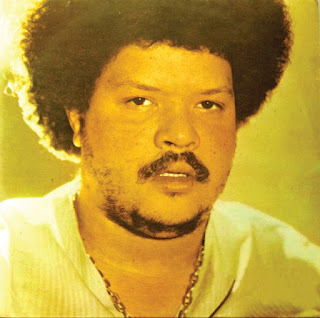 |
| Tim Maia |
 |
| Patrulha do Espaço 1981 Brazil Hard Rock |
 |
| Novos Bahianos Brazil Psych Folk Rock |
 |
| Novos Bahianos Brazil Psych Folk Rock |
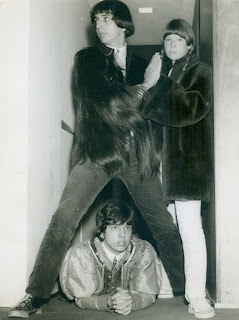 |
| Os Mutantes Brazil Psychedelic Rock |
 |
| Os Mutantes 1973 Brazil Psychedelic Rock |
 |
| Apokalypsis 1975 Brazil Rock Prog Rock |
 |
| Novos Baianos Brazil Samba Rock,Psych Folk Rock,MPB |
 |
| Novos Baianos Brazil Samba Rock,Psych Folk Rock,MPB |
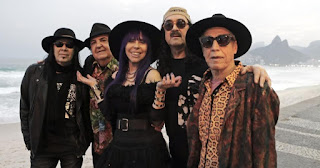 |
| Novos Baianos Brazil Samba Rock,Psych Folk Rock,MPB |
 |
| Novos Baianos Brazil Samba Rock,Psych Folk Rock,MPB |
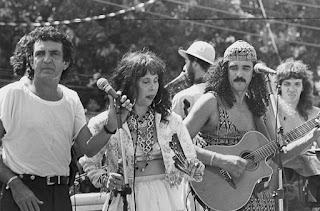 |
| Novos Baianos Brazil Samba Rock,Psych Folk Rock,MPB |
 |
| Novos Baianos Brazil Samba Rock,Psych Folk Rock,MPB |
 |
| Novos Baianos Brazil Samba Rock,Psych Folk Rock,MPB |
 |
| Novos Baianos Brazil Samba Rock,Psych Folk Rock,MPB |
 |
| Novos Baianos Brazil Samba Rock,Psych Folk Rock,MPB |
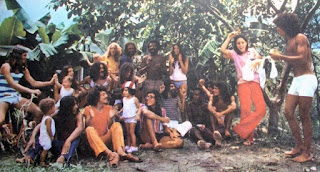 |
| Novos Baianos Brazil Samba Rock,Psych Folk Rock,MPB |
 |
| Novos Baianos Brazil Samba Rock,Psych Folk Rock,MPB |
 |
| Novos Baianos Brazil Samba Rock,Psych Folk Rock,MPB |
 |
| Caetano Veloso |
 |
| Caetano Veloso |
 |
| Jorge Ben, Caetano Velsoso, Gilberto Gil and Os Mutantes |
 |
| Tim Maia |
 |
| Mutantes Brazil Psych Rock |
.jpg) |
| Sagrado Coração Da Terra:Brazil Prog,Symphonic |
 |
| Arnaldo Baptista plays the white Mellotron that Os Mutantes brought from London, at the Cantareira farm. |
.jpg) |
| Veludo 1975 |
 |
| Moto Perpétuo |
 |
| Apokalypsis 1975 |
 |
| Novos Bahianos Brazil Samba Rock,Psych Folk Rock,Latin Pop Rock,MPB |
 |
| Novos Bahianos Brazil Samba Rock,Psych Folk Rock,Latin Pop Rock,MPB |
 |
| Novos Bahianos Brazil Samba Rock,Psych Folk Rock,Latin Pop Rock,MPB |
 |
| Novos Bahianos Brazil Samba Rock,Psych Folk Rock,Latin Pop Rock,MPB |
.jpg) |
| Casa Das Máquinas Brazil Prog Symphonic Hard Rock |
.jpg) |
| Casa Das Máquinas Brazil Prog Symphonic Hard Rock |
 |
| A Barca Do Sol Brazil Prog Folk Rock |
 |
| A Barca Do Sol Brazil Prog Folk Rock |
 |
| Ave Sangria Brazil Psych,Prog |
 |
| Ave Sangria Brazil Psych,Prog |
 |
| Ave Sangria Brazil Psych,Prog |
 |
| Ave Sangria Brazil Psych,Prog |
 |
| Ave Sangria Brazil Psych,Prog |
 |
| Ave Sangria Brazil Psych,Prog |
 |
| Ave Sangria Brazil Psych,Prog |
 |
| A Cor Do Som Brazil Jazz Rock Fusion (A Bolha, Veludo,Os Novos Baianos...members) |
 |
| A Cor Do Som Brazil Jazz Rock Fusion (A Bolha, Veludo,Os Novos Baianos...members) |
 |
| A Cor Do Som Brazil Jazz Rock Fusion (A Bolha, Veludo,Os Novos Baianos...members) |
 |
| A Cor Do Som Brazil Jazz Rock Fusion (A Bolha, Veludo,Os Novos Baianos...members) |
 |
| A Cor Do Som Brazil Jazz Rock Fusion (A Bolha, Veludo,Os Novos Baianos...members) |
 |
| A Cor Do Som Brazil Jazz Rock Fusion (A Bolha, Veludo,Os Novos Baianos...members) |
 |
| Secos & Molhados |
 |
| 0s Mutantes |
 |
| Novos Bahianos Brazil Samba Rock,Psych Folk Rock,Latin Pop Rock,MPB |
 |
| Veludo Brazil Prog Rock |
 |
| Veludo Brazil Prog Rock |
 |
| Veludo Brazil Prog Rock |
 |
| Veludo Brazil Prog Rock |
 |
| Veludo Brazil Prog Rock |
 |
| Veludo Brazil Prog Rock |
 |
| Veludo Brazil Prog Rock |
 |
| Secos & Molhados |
 |
| Sérgio Sampaio |
 |
| Os Mutantes |
 |
| Zé Ramalho Brazil Psych Folk Rock |
 |
| Os Mutantes Sergio Dias, Rita Lee e Arnaldo Baptista em foto antes de um show no Parque da Água Branca |
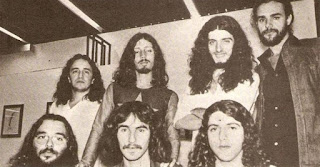 |
| A Barca do Sol 1979 Brazil Prog Folk |
 |
| A Barca do Sol 1979 Brazil Prog Folk |
 |
| Mutantes Brazil Psych Rock |
 |
| Caetano, Maria Bethania, Gal, Gilberto Gil |
 |
| O Peso - No Hollywood Rock de 1975 |
 |
| O Bando Brazil Psych Pop Rock |
 |
| Gil, Macalé e Caetano Veloso |
 |
| Os Mutantes, Gilberto Gil, Caetano Veloso e outros |
 |
| Patrulha do Espaço 1981 Brazil Heavy Rock Hard Rock |
 |
| Sound Factory 1970 Brazi Psych Rock |
 |
| Os Baobás |
 |
| Raul Seixas |
 |
| Caetano Veloso |
 |
| Caetano Veloso |
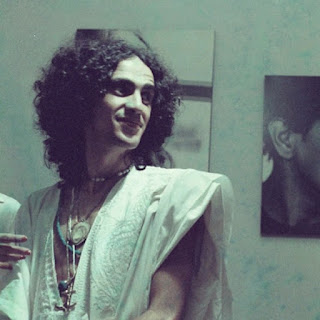 |
| Caetano Veloso |
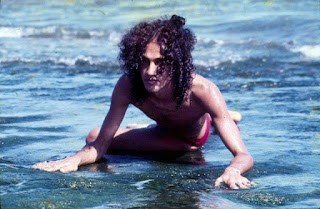 |
| Caetano Veloso |
 |
| Caetano Veloso |
 |
| Caetano Veloso |
 |
| Modulo 1000 Brazil Psych Rock |
 |
| Modulo 1000 Brazil Psych Rock |
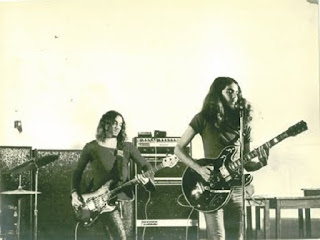 |
| Modulo 1000 Brazil Psych Rock |
 |
| Modulo 1000 Brazil Psych Rock |
 |
| Modulo 1000 Brazil Psych Rock |
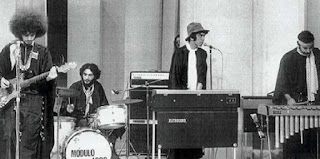 |
| Modulo 1000 Brazil Psych Rock |
 |
| Modulo 1000 Brazil Psych Rock |
 |
| Modulo 1000 Brazil Psych Rock |
 |
| Modulo 1000 Brazil Psych Rock |
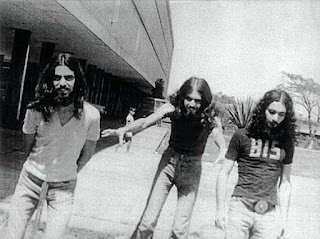 |
| Simas, Daniel e Candinho em Brasília, 1972 Modulo 1000 Brazil Psych Rock |
 |
| Simas e o “mandum” (1972) from Modulo 1000 Brazil Psych Rock |
 |
| Milton Nancimento |
 |
| Secos e Molhados 1974 Brazil Latin Prog Psych |
 |
| Secos e Molhados 1974 Brazil Latin Prog Psych |
 |
| Secos e Molhados 1974 Brazil Latin Prog Psych |
 |
| Secos e Molhados 1974 Brazil Latin Prog Psych |
 |
| Secos e Molhados 1974 Brazil Latin Prog Psych |
 |
| Spectrum 1971 Brazil psychedelic rock |
 |
| Spectrum 1971 Brazil psychedelic rock |
 |
| Spectrum 1971 Brazil psychedelic rock |
 |
| The Fevers 1973 Brazil Latin,Psych Pop,Beat,Rock |
 |
| On the walls of the enchanted stone and memory Alceu Valença, Zé da Fluta, Zé Ramalho, Dicinho and Parte do Ave Sangria (Israel Forbidden Seed, Agricola Noya and Paulo Rafael) 1976 |
 |
| Caetano Veloso and Nara Leon chatting, in the background images of Beatles George Harrison, John Lennon and Ringo Starr. |
 |
| Os Mutantes lead singer Rita Lee wearning colorful clothes, 1960s |
 |
| Secos e Molhados |
 |
| Secos e Molhados |
 |
| Secos e Molhados |
 |
| Secos e Molhados |
 |
| Secos e Molhados |
 |
| Modulo 1000 Brazil Psych Rock |
 |
| Modulo 1000 Brazil Psych Rock |
 |
| Modulo 1000 Brazil Psych Rock |
 |
| Modulo 1000 Brazil Psych Rock |
 |
| Modulo 1000 Brazil Psych Rock |
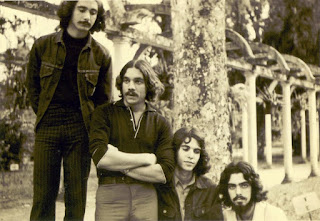 |
| Modulo 1000 Brazil Psych Rock |
 |
| Modulo 1000 Brazil Psych Rock |
 |
| Modulo 1000 Brazil Psych Rock |
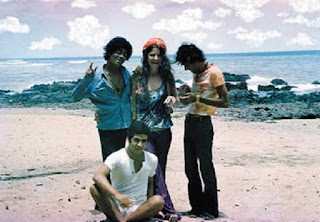 |
| Piti,Janis Joplin na Bahia em 1970 |
 |
| Rita Lee & Tutti Frutti |
 |
| Rita Lee |
 |
| Rita Lee & Tutti Frutti |
 |
| Caetano and Pignatari. Conference on Tropicalia, at FAU-USP, in 1968. |
 |
| Gal Costa |
 |
| Gal Costa |
 |
| Os Mutantes in 1966 |
 |
| III Festival de MPB, 1967. |
 |
| Os Novos Baianos |
 |
| Nação Zumbi (Zombie Nation) Brazil Alternative Rock,Dub,Manguebeat,Hip Hop,Post Punk, MPB |
 |
| Nação Zumbi (Zombie Nation) Brazil Alternative Rock,Dub,Manguebeat,Hip Hop,Post Punk, MPB |
 |
| Nação Zumbi (Zombie Nation) Brazil Alternative Rock,Dub,Manguebeat,Hip Hop,Post Punk, MPB |
 |
| Nação Zumbi (Zombie Nation) Brazil Alternative Rock,Dub,Manguebeat,Hip Hop,Post Punk, MPB |
 |
| Nação Zumbi (Zombie Nation) Brazil Alternative Rock,Dub,Manguebeat,Hip Hop,Post Punk, MPB |
 |
| Nação Zumbi (Zombie Nation) Brazil Alternative Rock,Dub,Manguebeat,Hip Hop,Post Punk, MPB |
 |
| Nação Zumbi (Zombie Nation) Brazil Alternative Rock,Dub,Manguebeat,Hip Hop,Post Punk, MPB |
 |
| Nação Zumbi (Zombie Nation) Brazil Alternative Rock,Dub,Manguebeat,Hip Hop,Post Punk, MPB |
 |
| Nação Zumbi (Zombie Nation) Brazil Alternative Rock,Dub,Manguebeat,Hip Hop,Post Punk, MPB |
 |
| Nação Zumbi (Zombie Nation) Brazil Alternative Rock,Dub,Manguebeat,Hip Hop,Post Punk, MPB |
 |
| Nação Zumbi (Zombie Nation) Brazil Alternative Rock,Dub,Manguebeat,Hip Hop,Post Punk, MPB |
 |
| Nação Zumbi (Zombie Nation) Brazil Alternative Rock,Dub,Manguebeat,Hip Hop,Post Punk, MPB |
 |
| Nação Zumbi (Zombie Nation) Brazil Alternative Rock,Dub,Manguebeat,Hip Hop,Post Punk, MPB |
 |
| Nação Zumbi (Zombie Nation) Brazil Alternative Rock,Dub,Manguebeat,Hip Hop,Post Punk, MPB |
 |
| Nação Zumbi (Zombie Nation) Brazil Alternative Rock,Dub,Manguebeat,Hip Hop,Post Punk, MPB |
 |
| Nação Zumbi (Zombie Nation) Brazil Alternative Rock,Dub,Manguebeat,Hip Hop,Post Punk, MPB |
 |
| Nação Zumbi (Zombie Nation) Brazil Alternative Rock,Dub,Manguebeat,Hip Hop,Post Punk, MPB |
 |
| Nação Zumbi (Zombie Nation) Brazil Alternative Rock,Dub,Manguebeat,Hip Hop,Post Punk, MPB |
 |
| Nação Zumbi (Zombie Nation) Brazil Alternative Rock,Dub,Manguebeat,Hip Hop,Post Punk, MPB |
"Módulo 1000"
Luiz Moreno, Sergio Magrão, Sergio Hinds e Flávio Venturini são a incrível banda O Terço!
 |
| Arnaldo Baptista plays the white Mellotron that Os Mutantes brought from London, on the site of Cantareira. Photo Leila Lisboa Sznelwar |
 |
| Apokalypsis, 1978! |
 |
| 40 Years of the first edition of the historic Festival of Águas Claras. In the photo, show of the band Apokalypsis. |
.jpg) |
| Mar Revolto Brazil Psych Folk Rock,Latin Jazz Funk Fusion |
.jpg) |
| Mar Revolto Brazil Psych Folk Rock,Latin Jazz Funk Fusion |
.jpg) |
| Mar Revolto Brazil Psych Folk Rock,Latin Jazz Funk Fusion |
.jpg) |
| Mar Revolto Brazil Psych Folk Rock,Latin Jazz Funk Fusion |
.jpg) |
| Mar Revolto Brazil Psych Folk Rock,Latin Jazz Funk Fusion |
 |
| Bombay Groovy Brazil Psych Rock,Raga Rock |
 |
| Bombay Groovy Brazil Psych Rock,Raga Rock |
 |
| Bombay Groovy Brazil Psych Rock,Raga Rock |
 |
| Bombay Groovy Brazil Psych Rock,Raga Rock |
 |
| Bombay Groovy Brazil Psych Rock,Raga Rock |
 |
| Bombay Groovy Brazil Psych Rock,Raga Rock |
 |
| Bombay Groovy Brazil Psych Rock,Raga Rock |
 |
| Bombay Groovy Brazil Psych Rock,Raga Rock |
 |
| Bombay Groovy Brazil Psych Rock,Raga Rock |
 |
| Bombay Groovy Brazil Psych Rock,Raga Rock |
 |
| Bombay Groovy Brazil Psych Rock,Raga Rock |
 |
| Bombay Groovy Brazil Psych Rock,Raga Rock |
 |
| Bombay Groovy Brazil Psych Rock,Raga Rock |
 |
| Bombay Groovy Brazil Psych Rock,Raga Rock |
 |
| Bombay Groovy Brazil Psych Rock,Raga Rock |
 |
| Bombay Groovy Brazil Psych Rock,Raga Rock |
 |
| Bombay Groovy Brazil Psych Rock,Raga Rock |
 |
| Bombay Groovy Brazil Psych Rock,Raga Rock |
 |
| Bombay Groovy Brazil Psych Rock,Raga Rock |
 |
| Bombay Groovy Brazil Psych Rock,Raga Rock |
 |
| Bombay Groovy Brazil Psych Rock,Raga Rock |
 |
| Bombay Groovy Brazil Psych Rock,Raga Rock |
 |
| Bombay Groovy Brazil Psych Rock,Raga Rock |
 |
| Bombay Groovy Brazil Psych Rock,Raga Rock |
 |
| Bombay Groovy Brazil Psych Rock,Raga Rock |
 |
| Bombay Groovy Brazil Psych Rock,Raga Rock |
 |
| Bombay Groovy Brazil Psych Rock,Raga Rock |
 |
| Caetano & Gal 1967 |
 |
| Wanderlea, Caetano Veloso, and Gal Costa |
 |
| Caetano Veloso, Chico Buarque, Milton Nascimento |
.jpg) |
| Patrulha do Espaço Brazil Hard Rock |
.jpg) |
| Patrulha do Espaço Brazil Hard Rock |
.jpg) |
| Patrulha do Espaço Brazil Hard Rock |
.jpg) |
| Patrulha do Espaço Brazil Hard Rock |
 |
| Joelho De Porco Brazil Psych,Glam Hard Rock,Comedy Rock |
 |
| Joelho De Porco Brazil Psych,Glam Hard Rock,Comedy Rock |
 |
| Joelho De Porco Brazil Psych,Glam Hard Rock,Comedy Rock |
Brazil Psych,Prog,Tropicalia,Latin,Jazz,Samba Rock,MPB: +100 best Brazilian albums Rolling Stone - Os 100 Maiores Discos Da Música Brasileira: posts blogger with different themes designs.
magazine design
sidebar design
flipcard design
mosaic design
timeslide design
100 best Brazilian albums Rolling Stone - Os 100 Maiores Discos Da Música Brasileira:
magazine design
sidebar design
flipcard design
mosaic design
timeslide design









































































































.jpg)








.jpg)











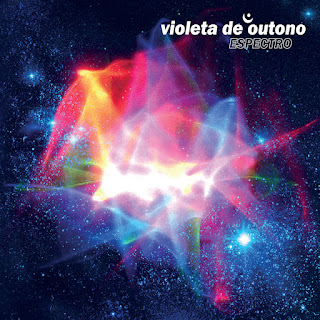
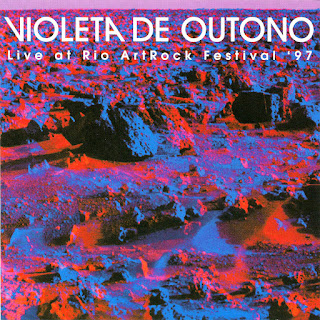




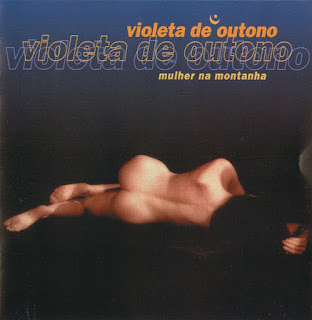
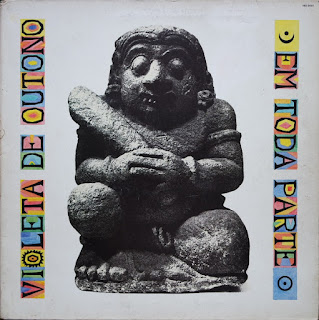


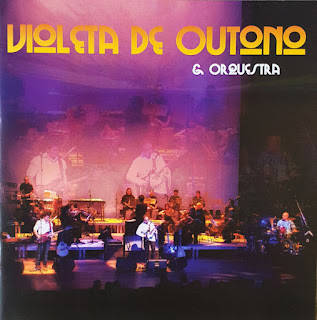




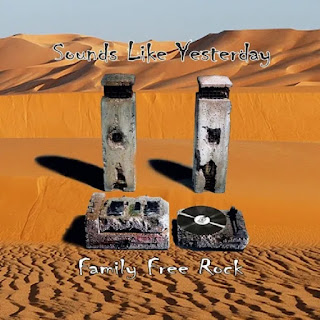
.jpg)








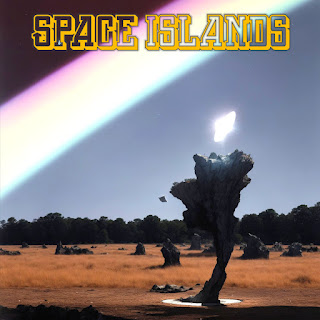




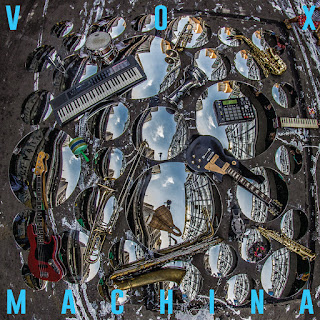




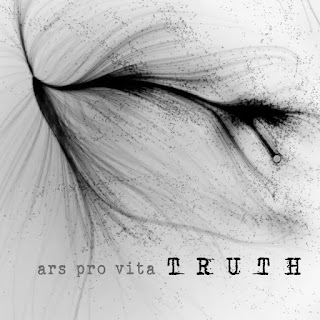













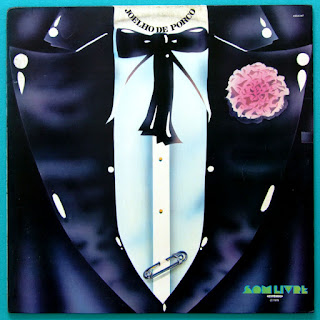




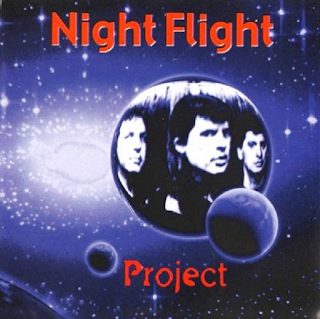








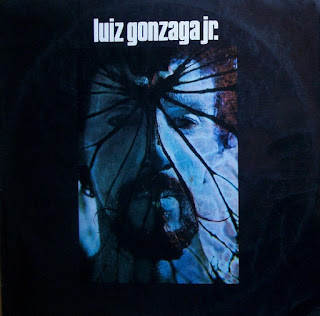


.jpg)

.jpg)

















.jpg)


























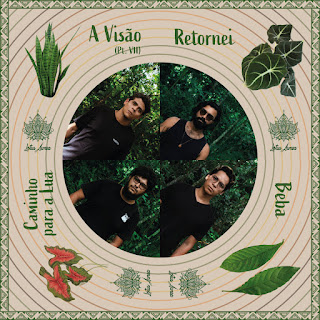







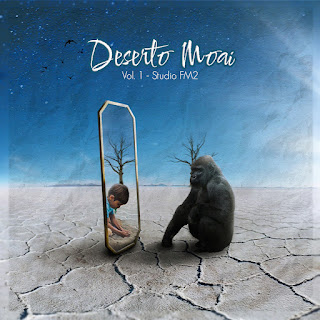


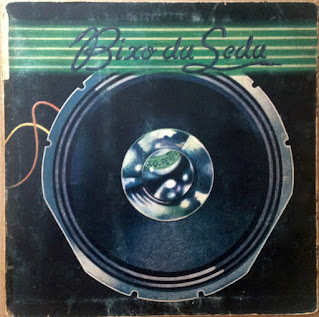



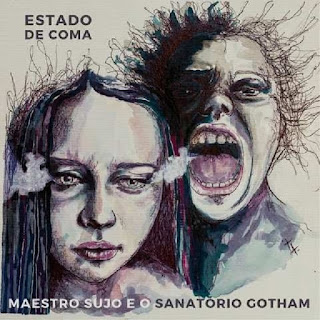





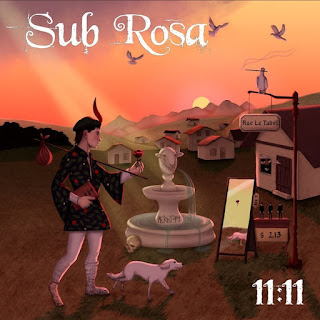







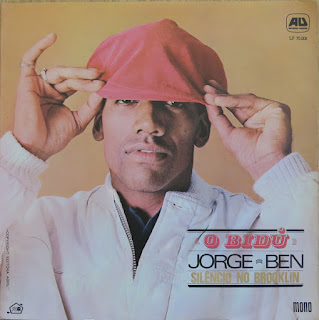




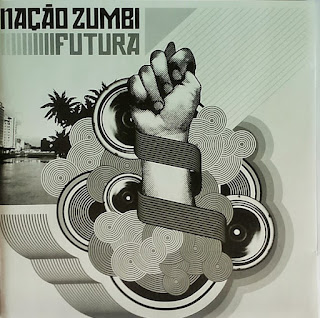


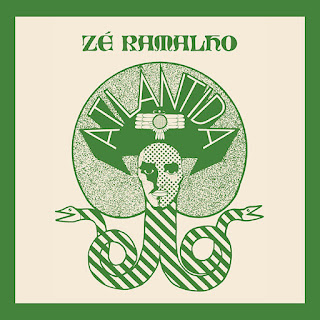



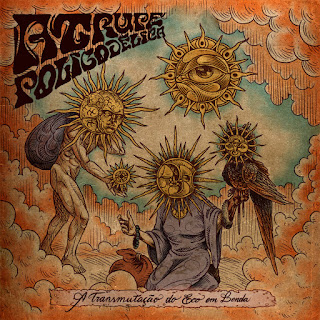




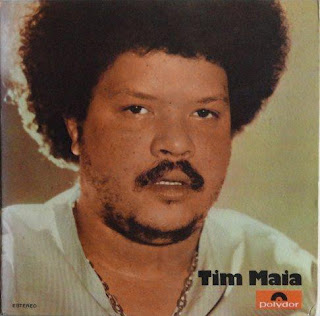



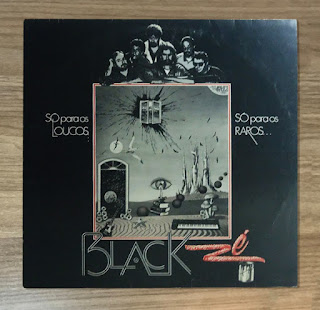

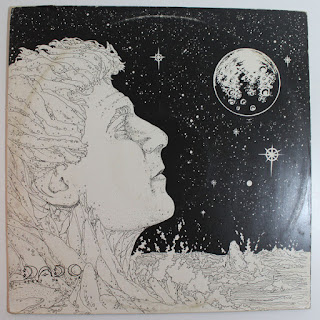




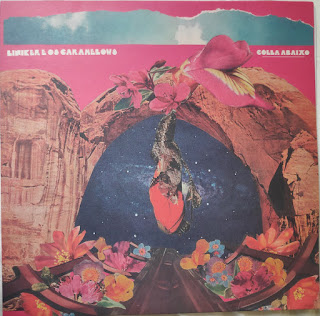

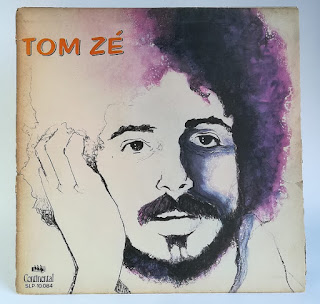

















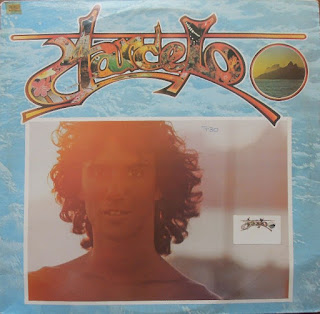
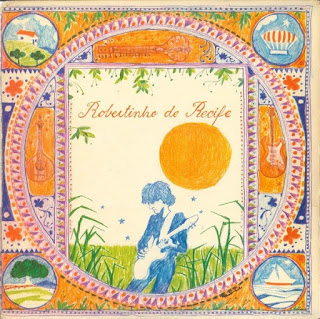


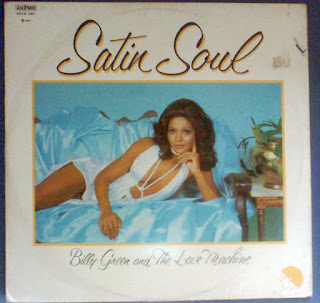







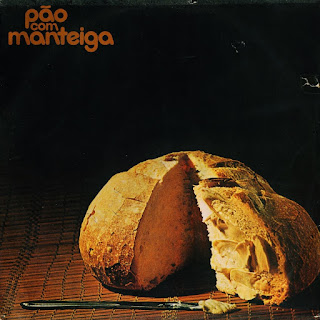


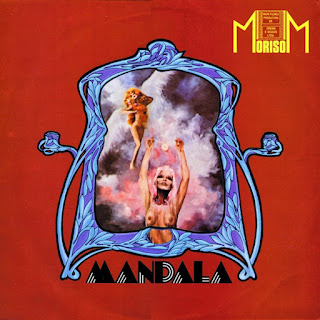









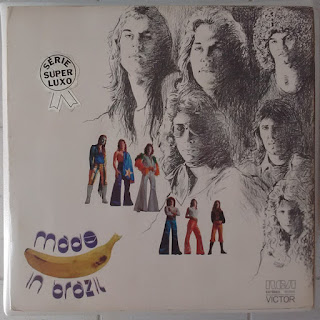



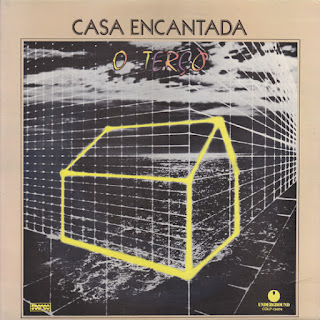






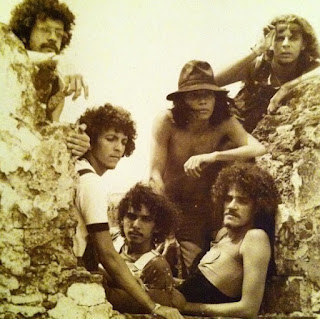







.jpg)
























Comments
Post a Comment